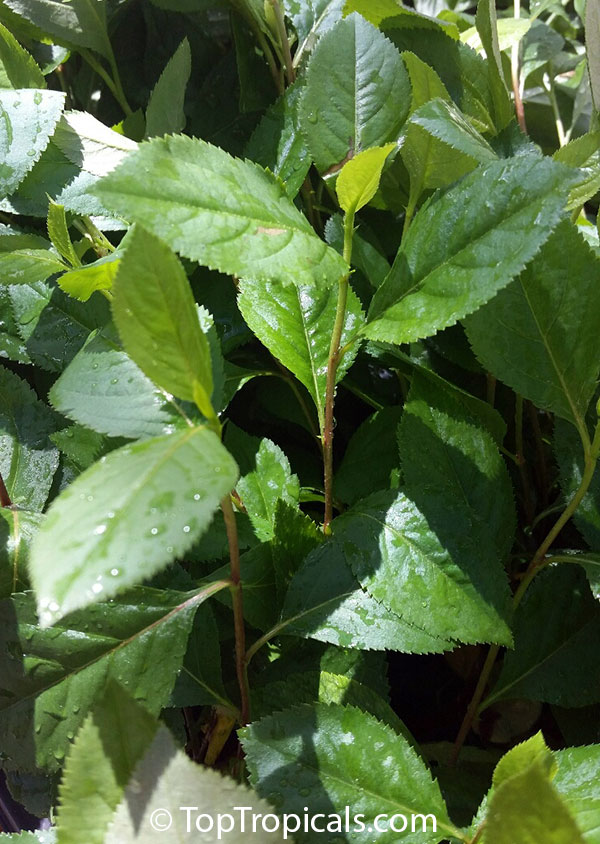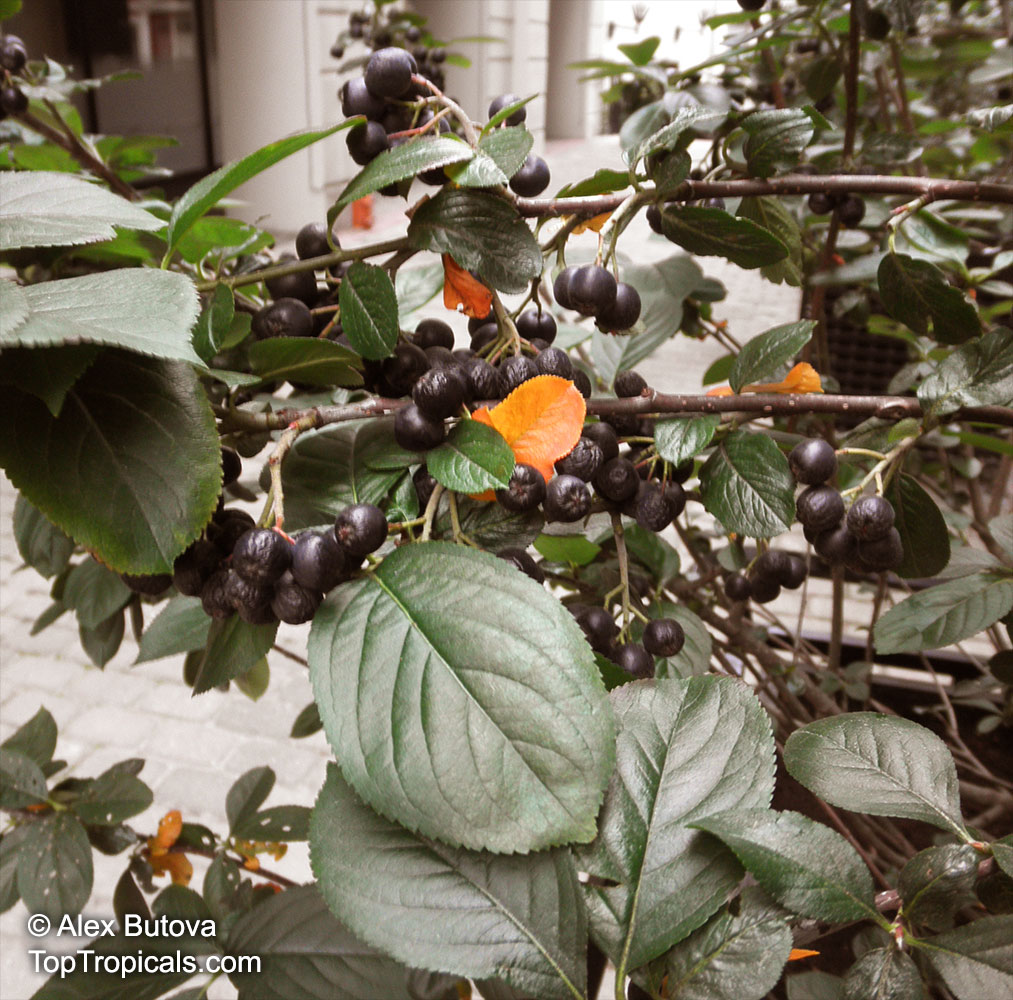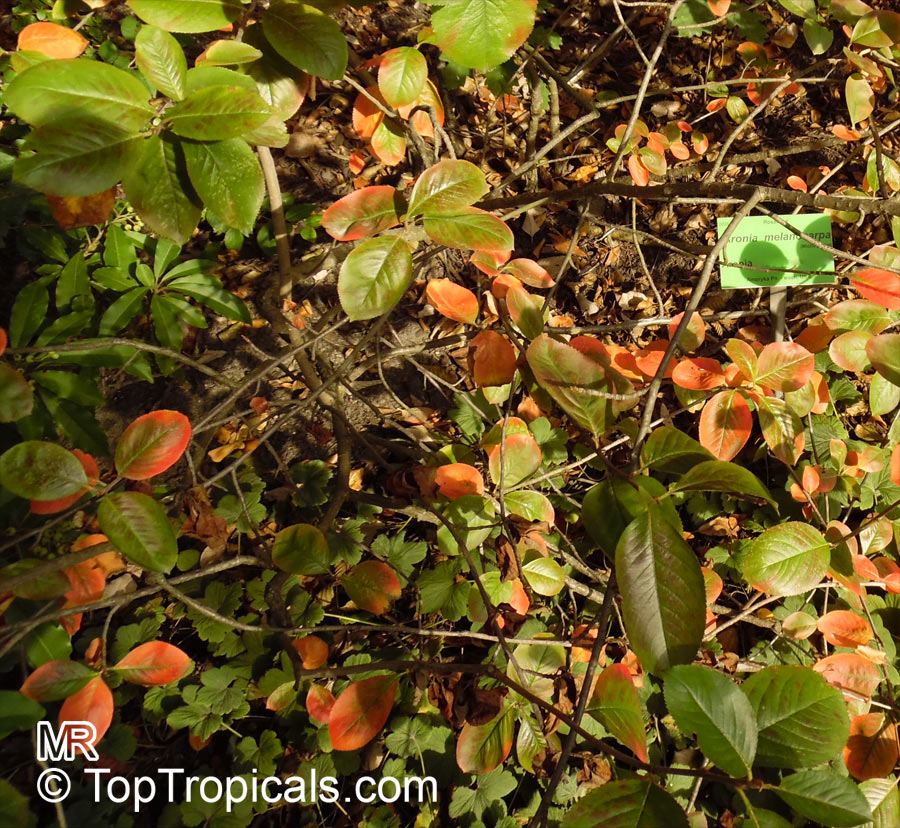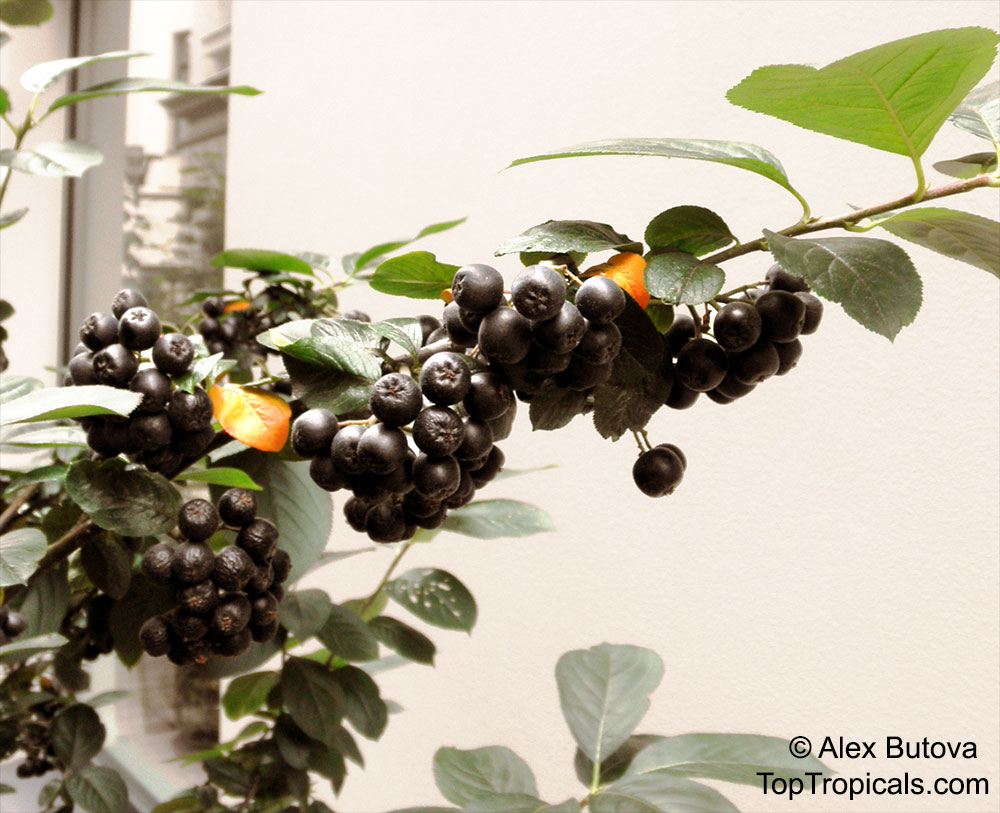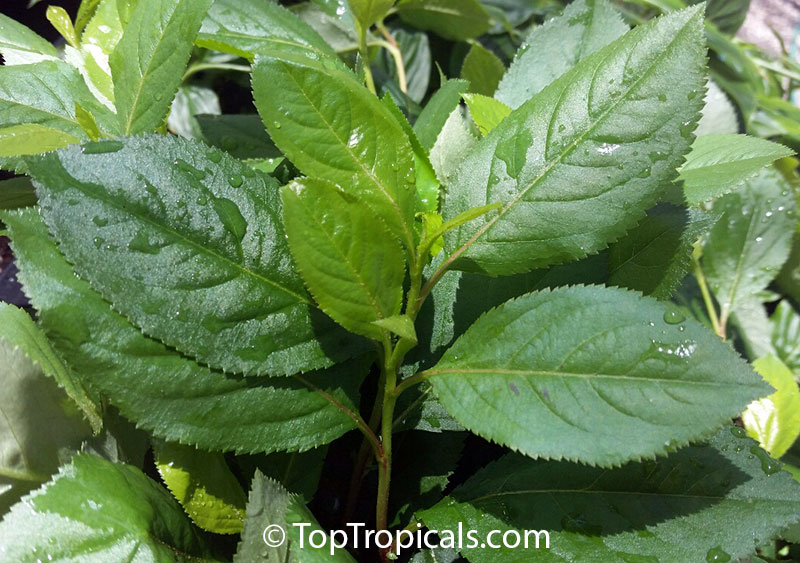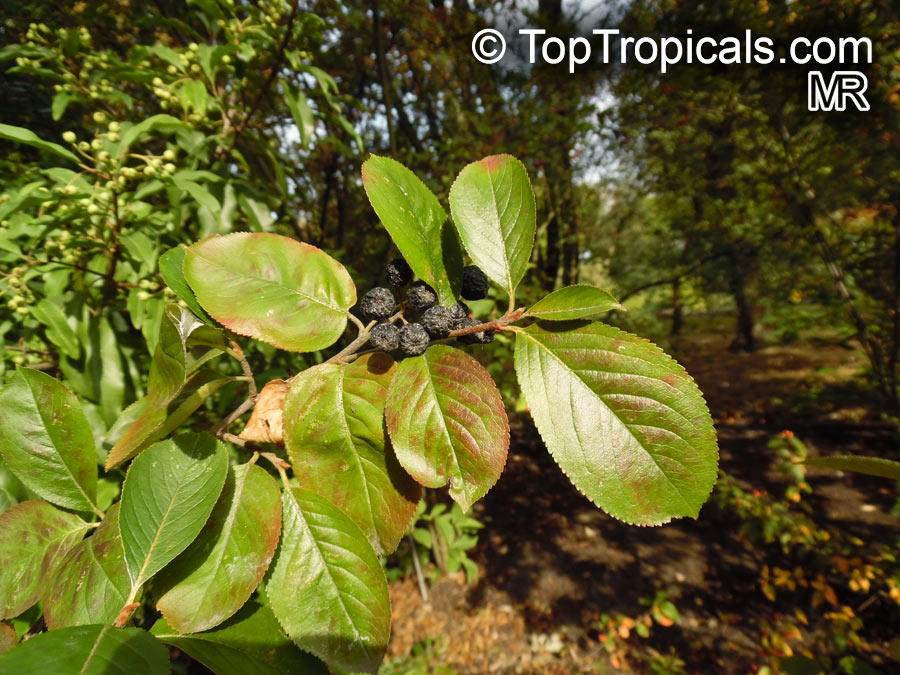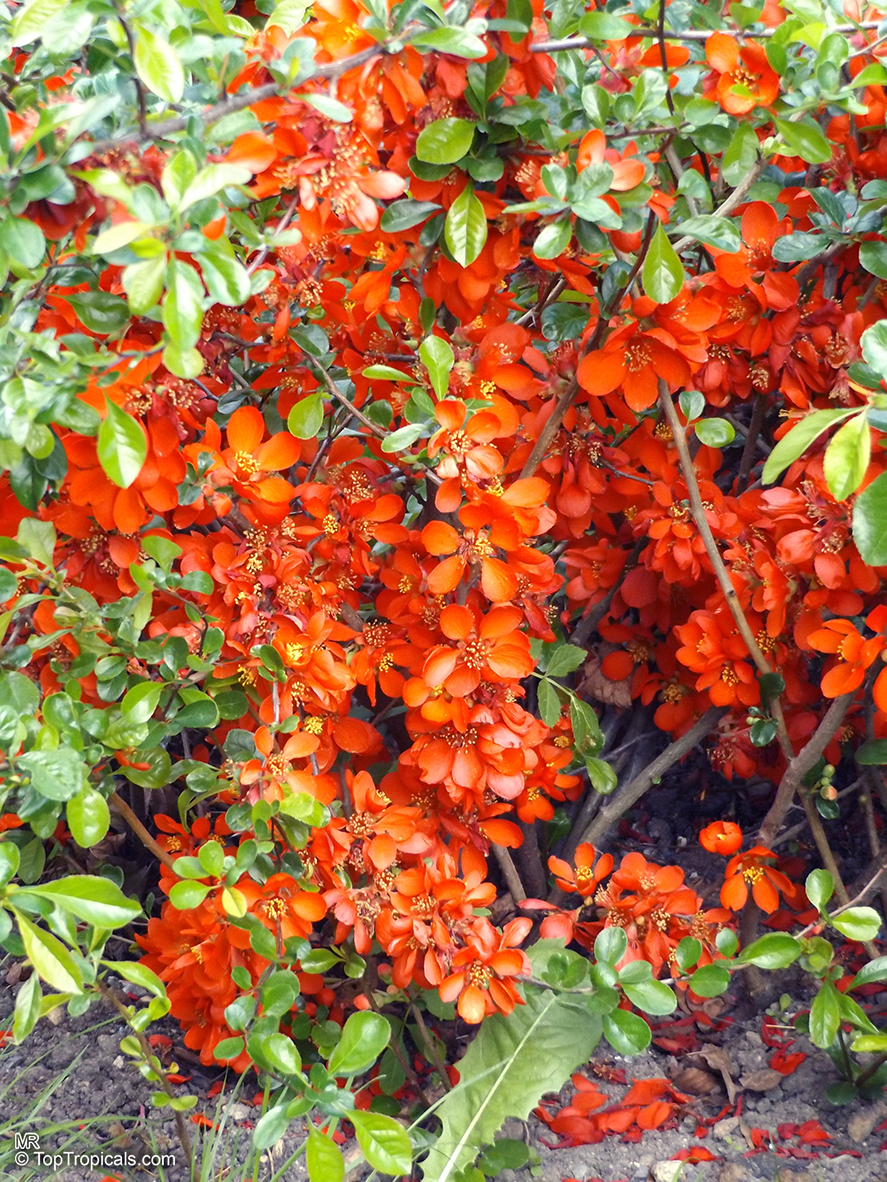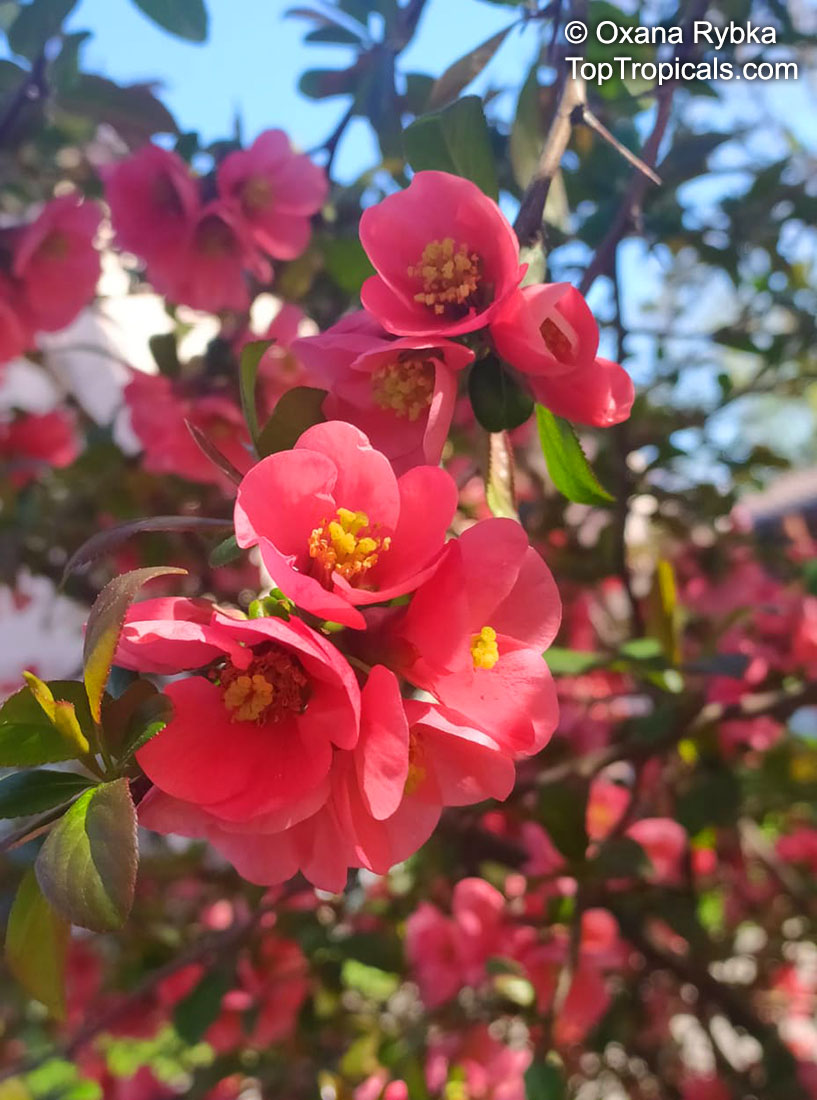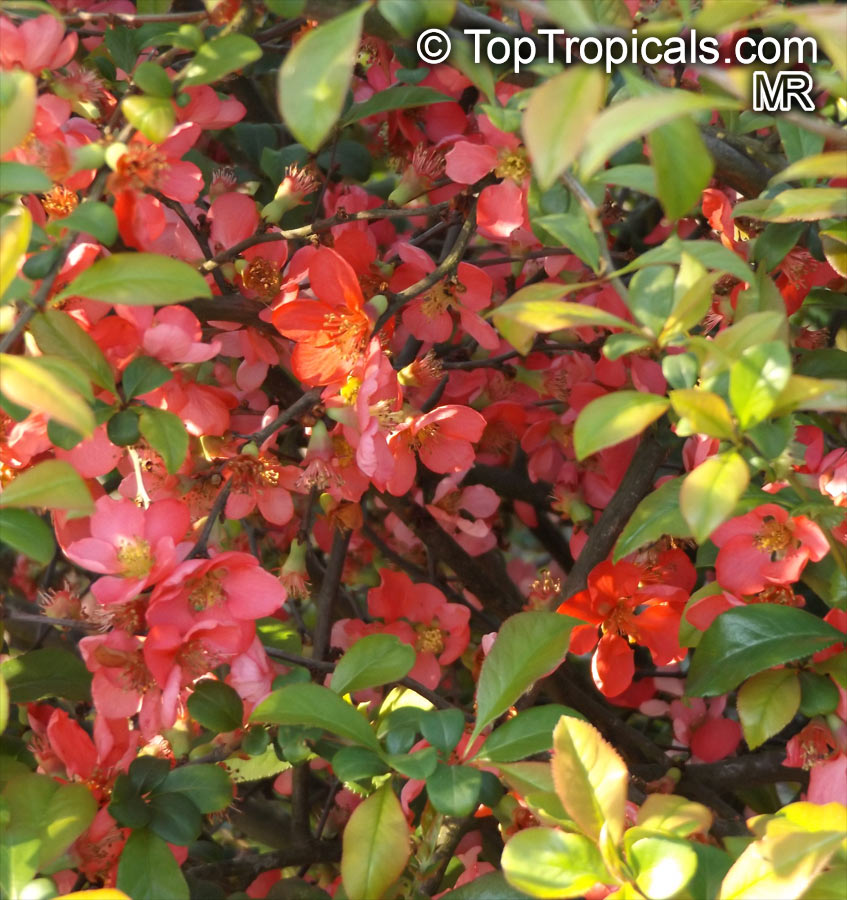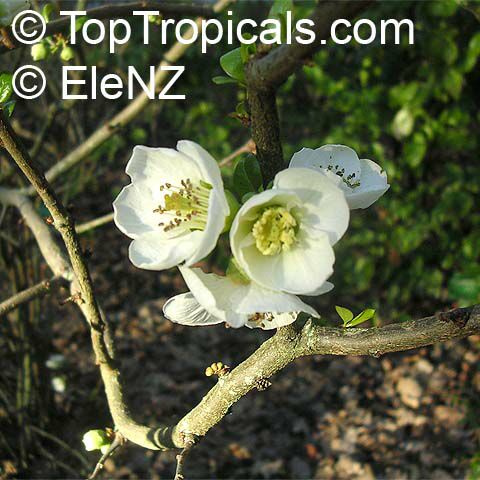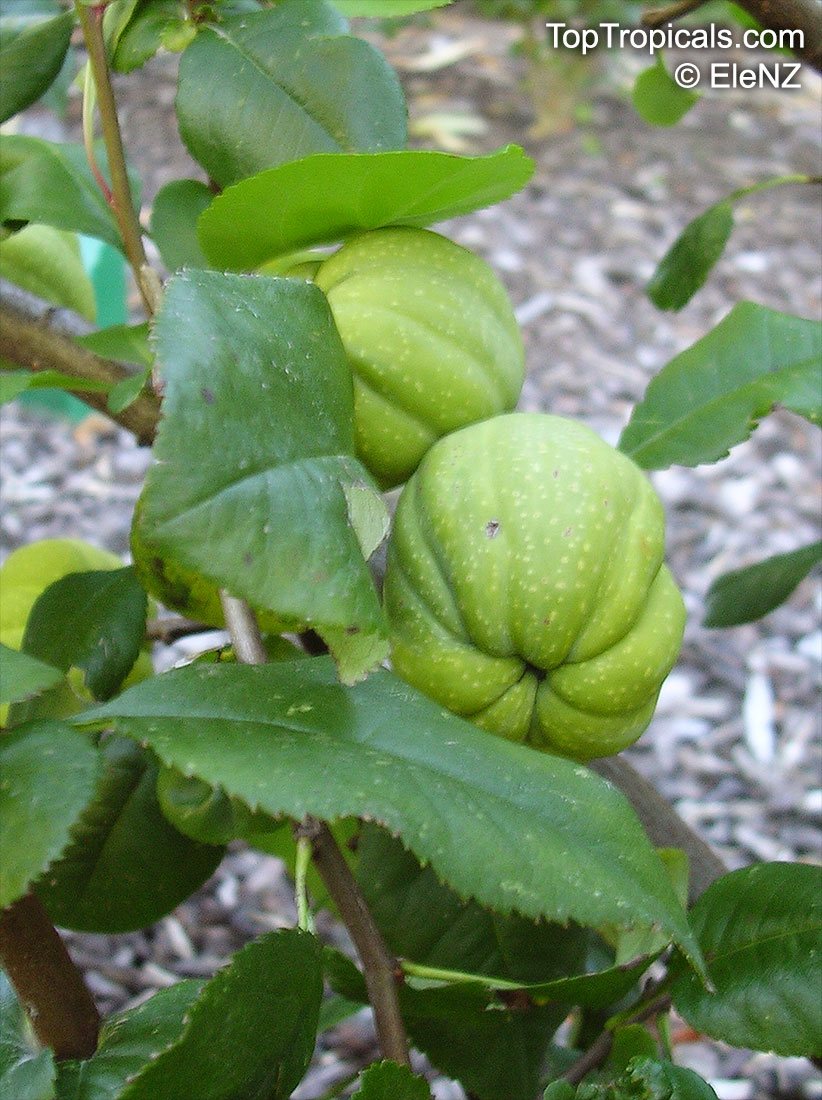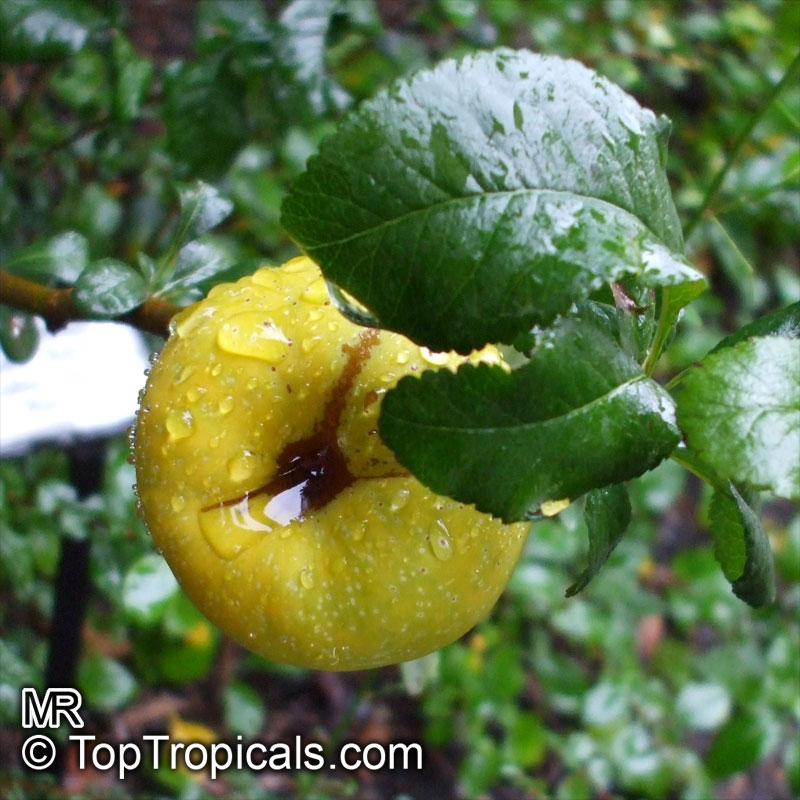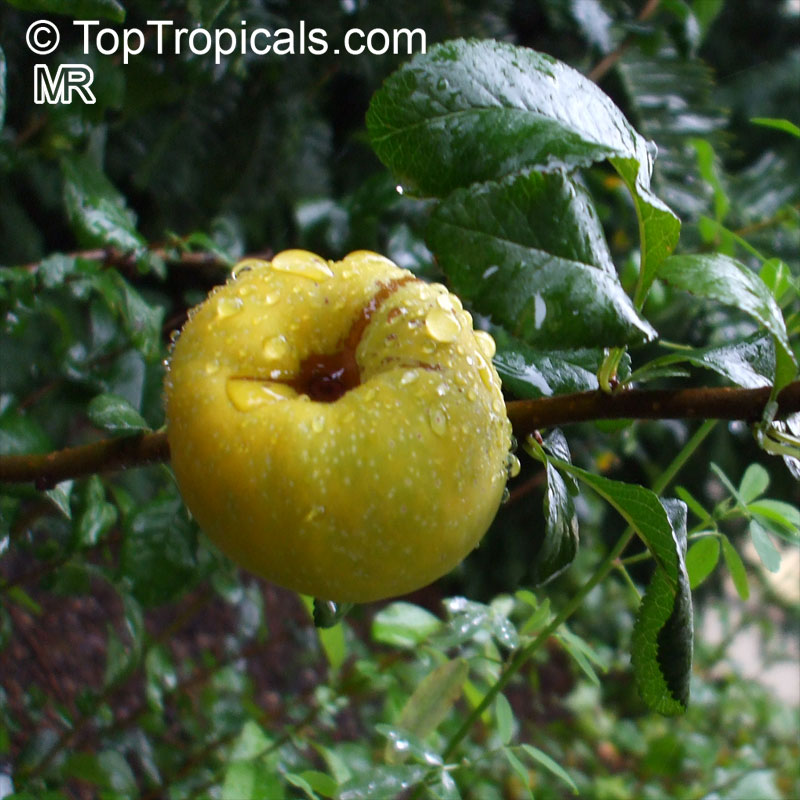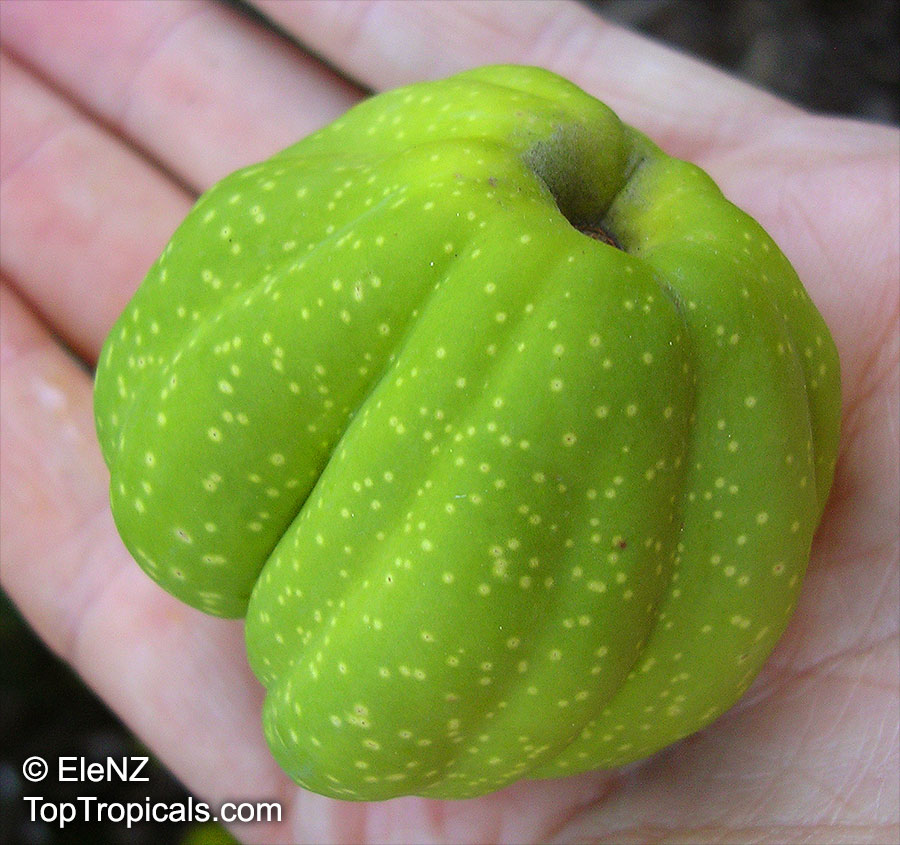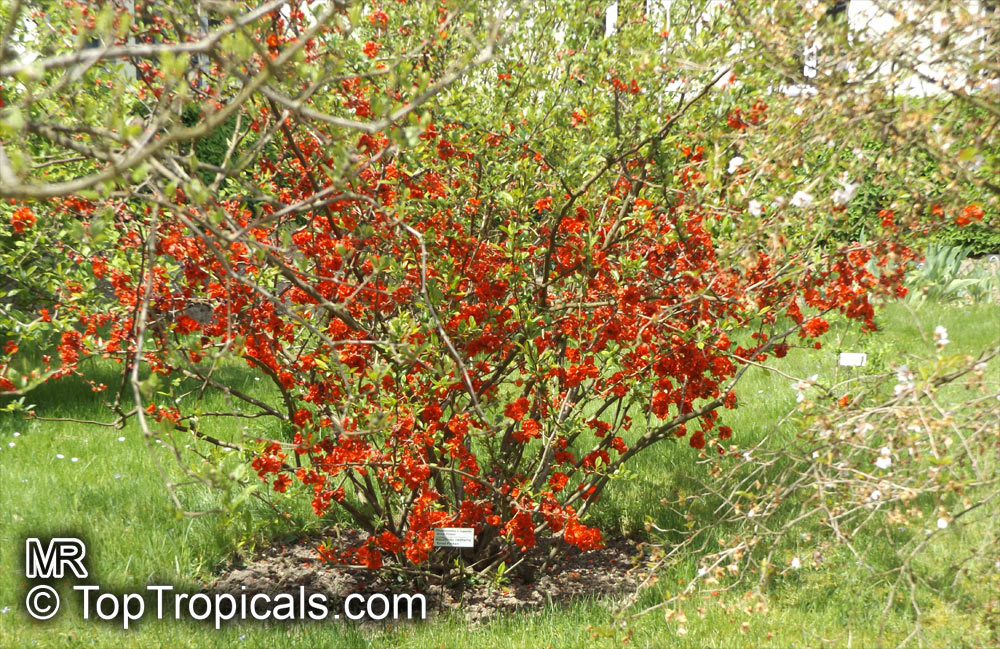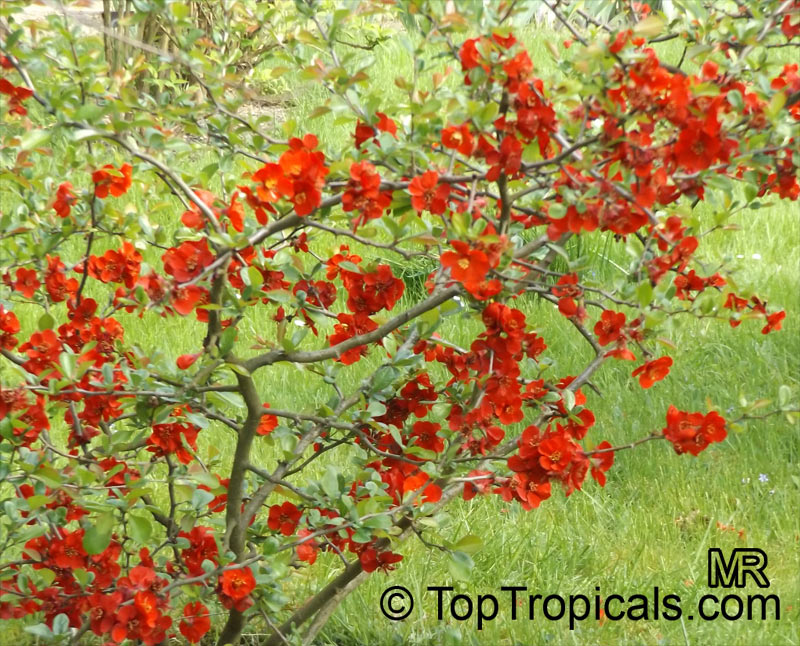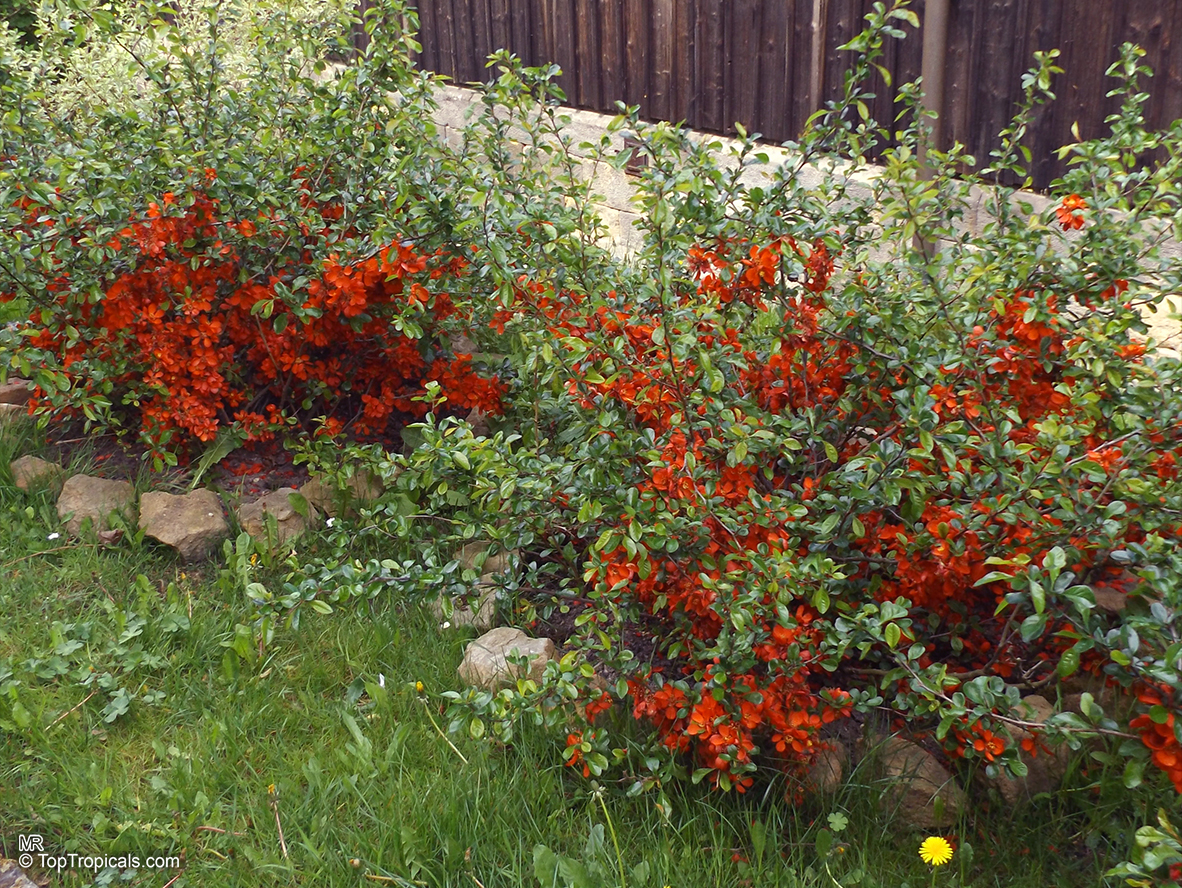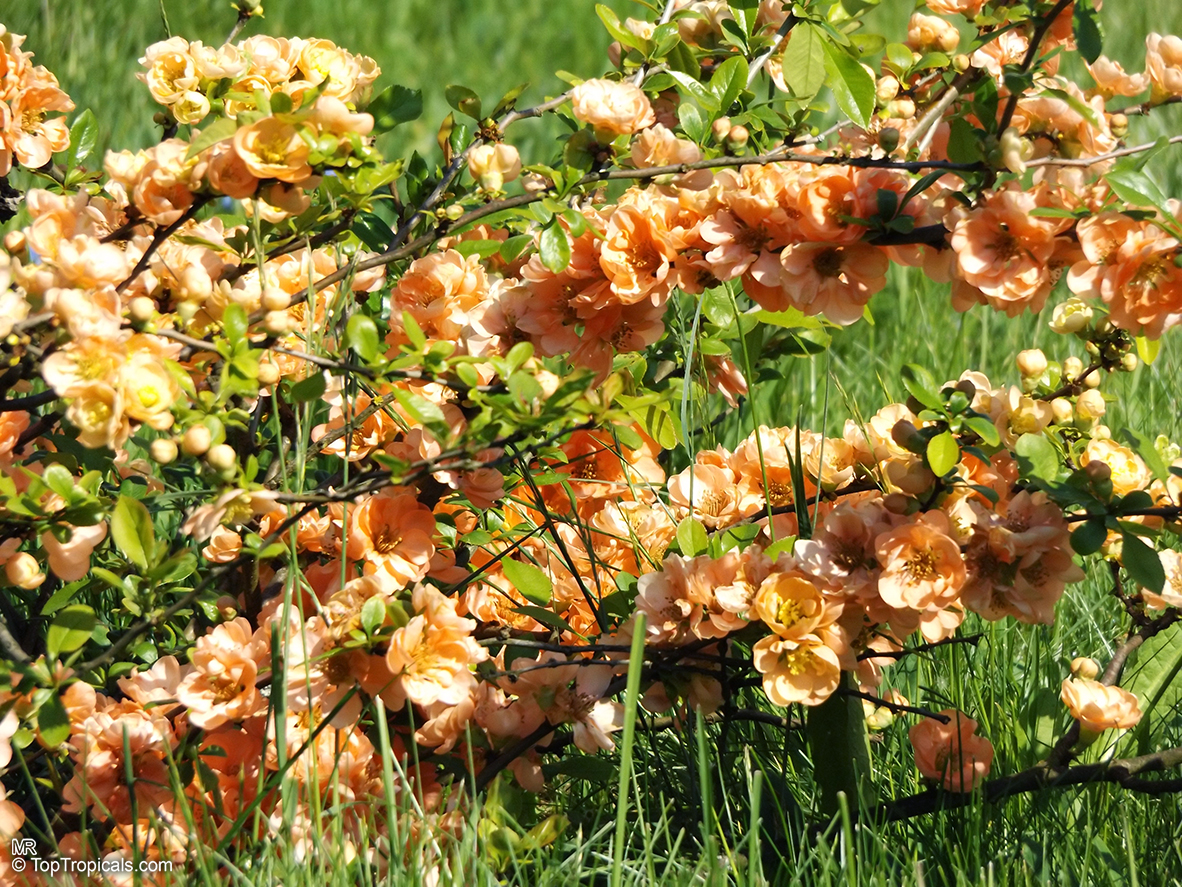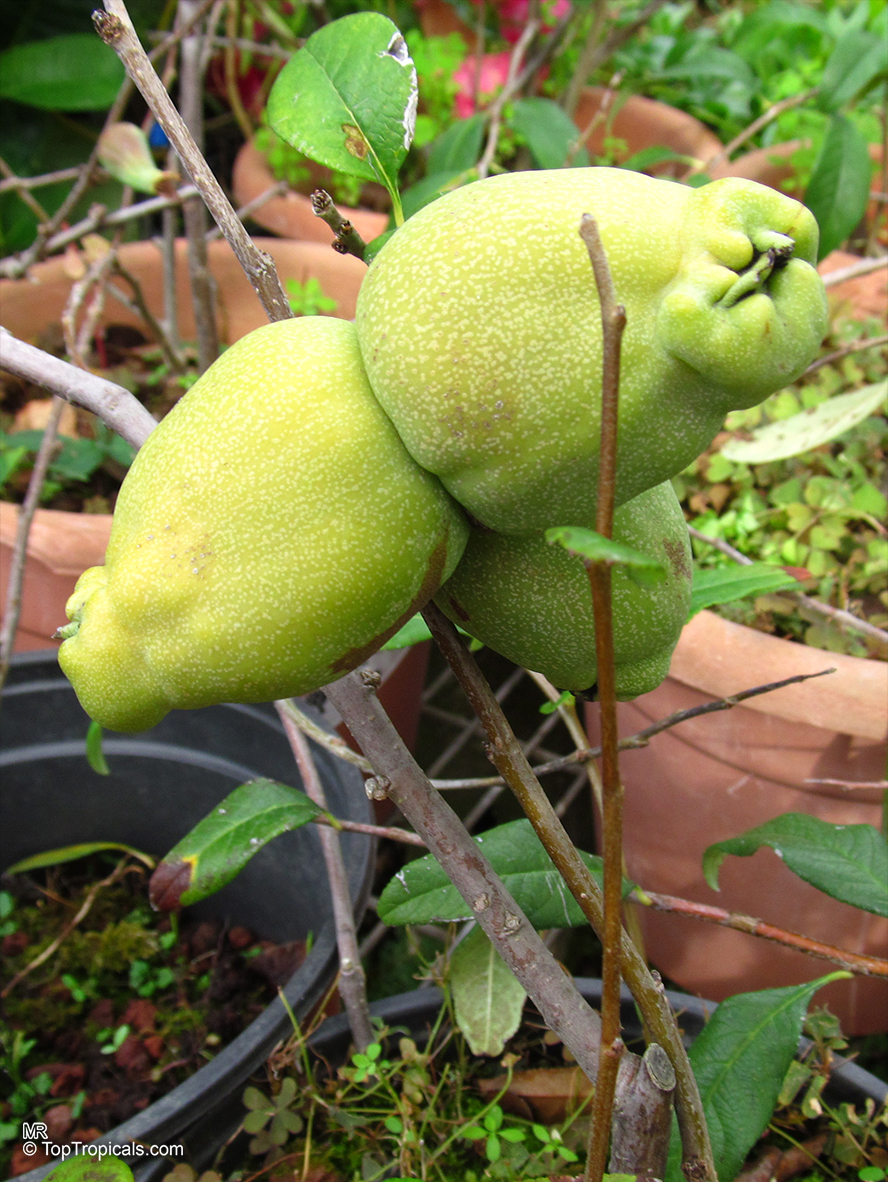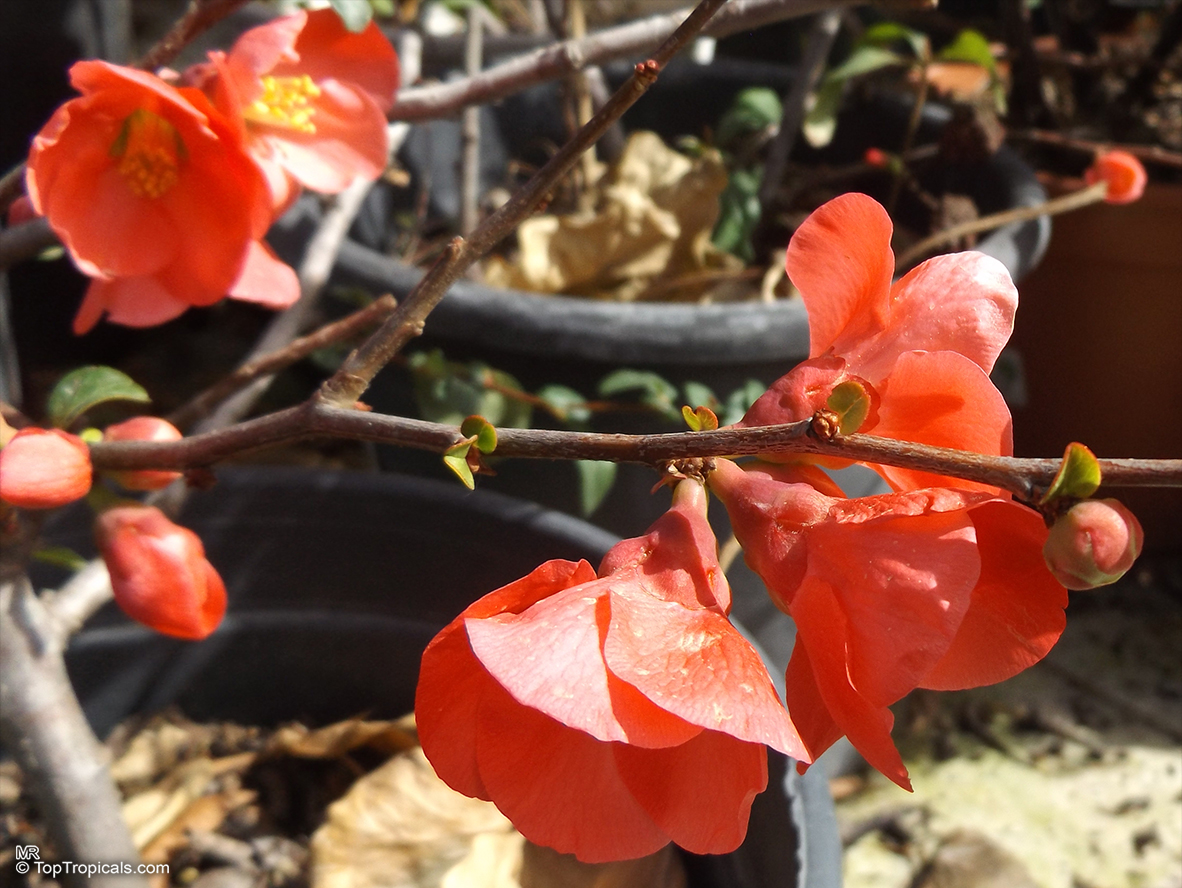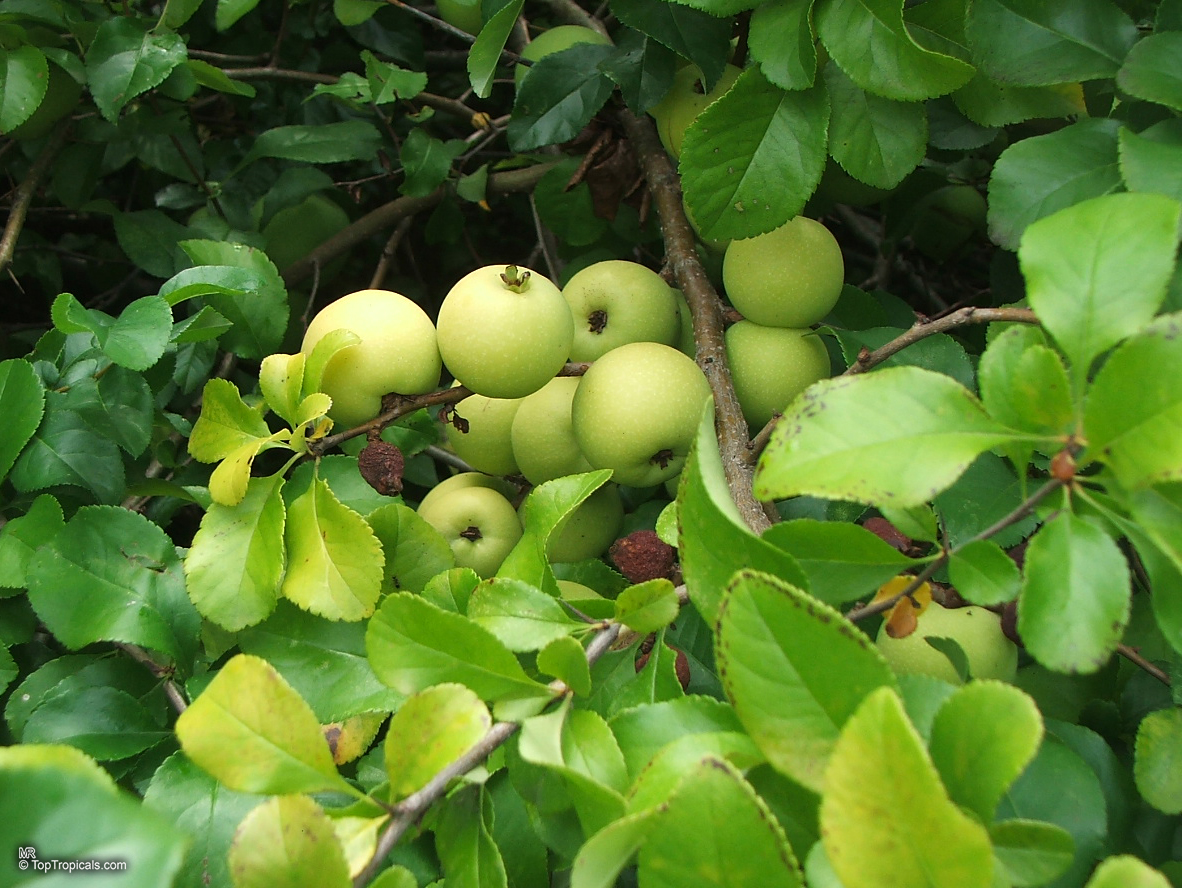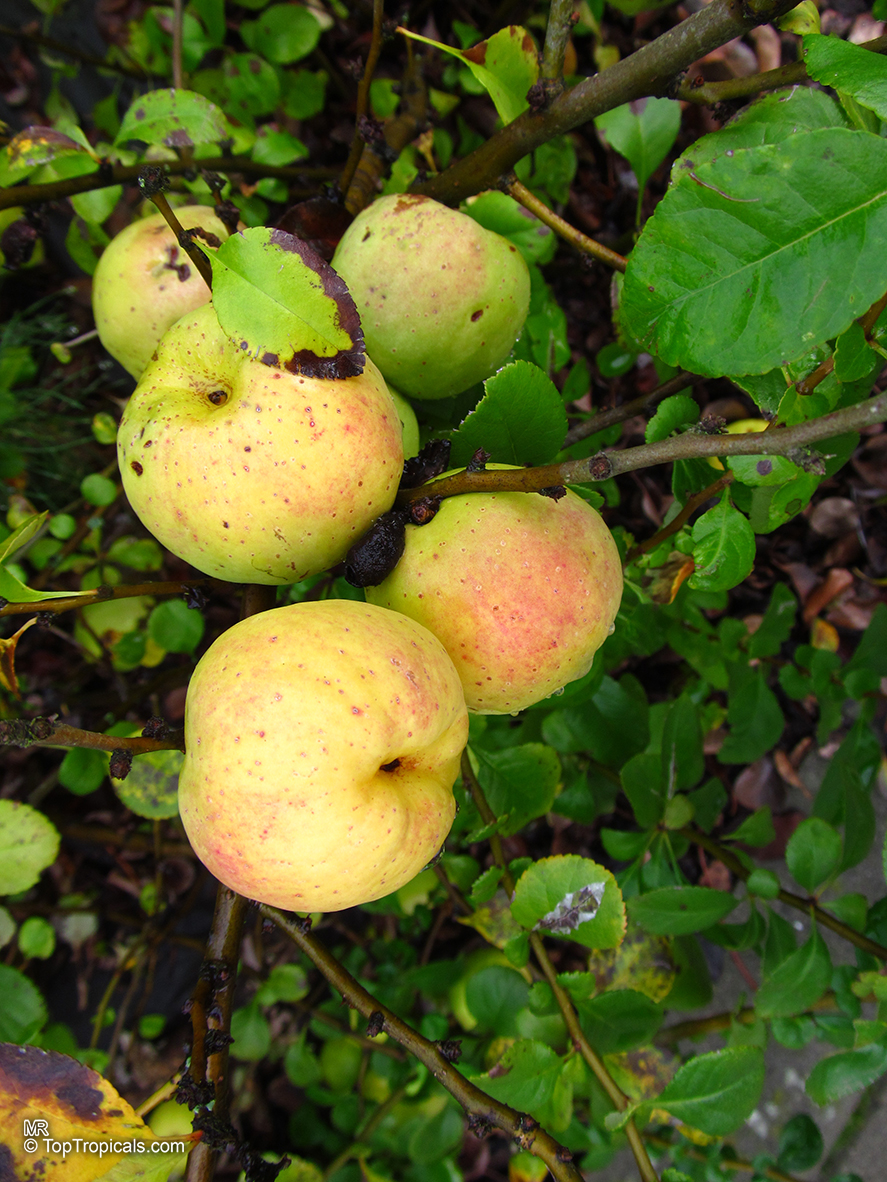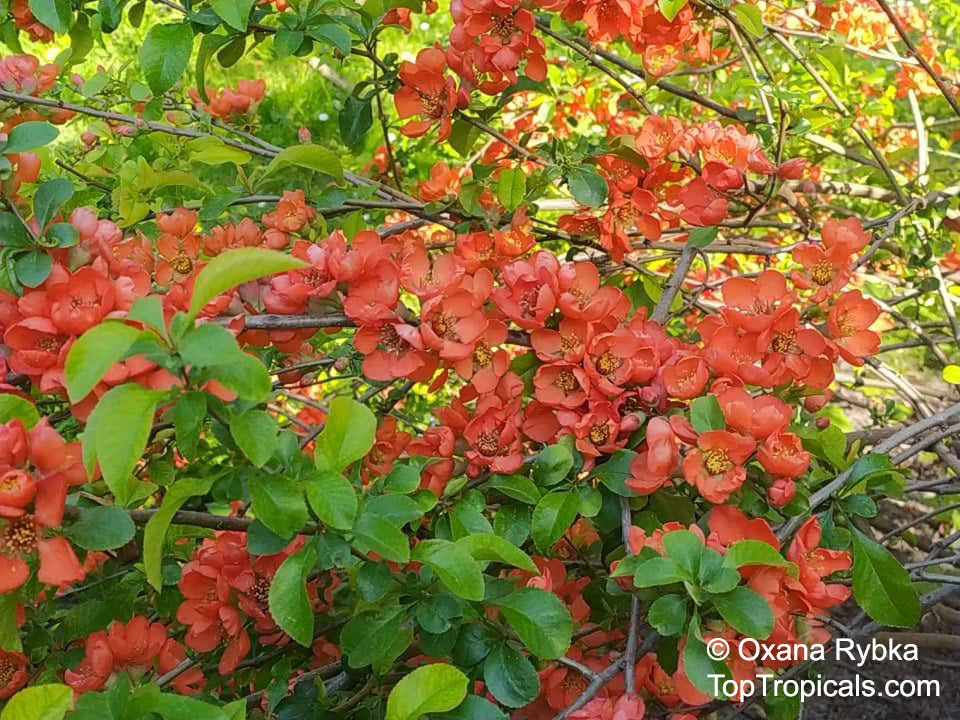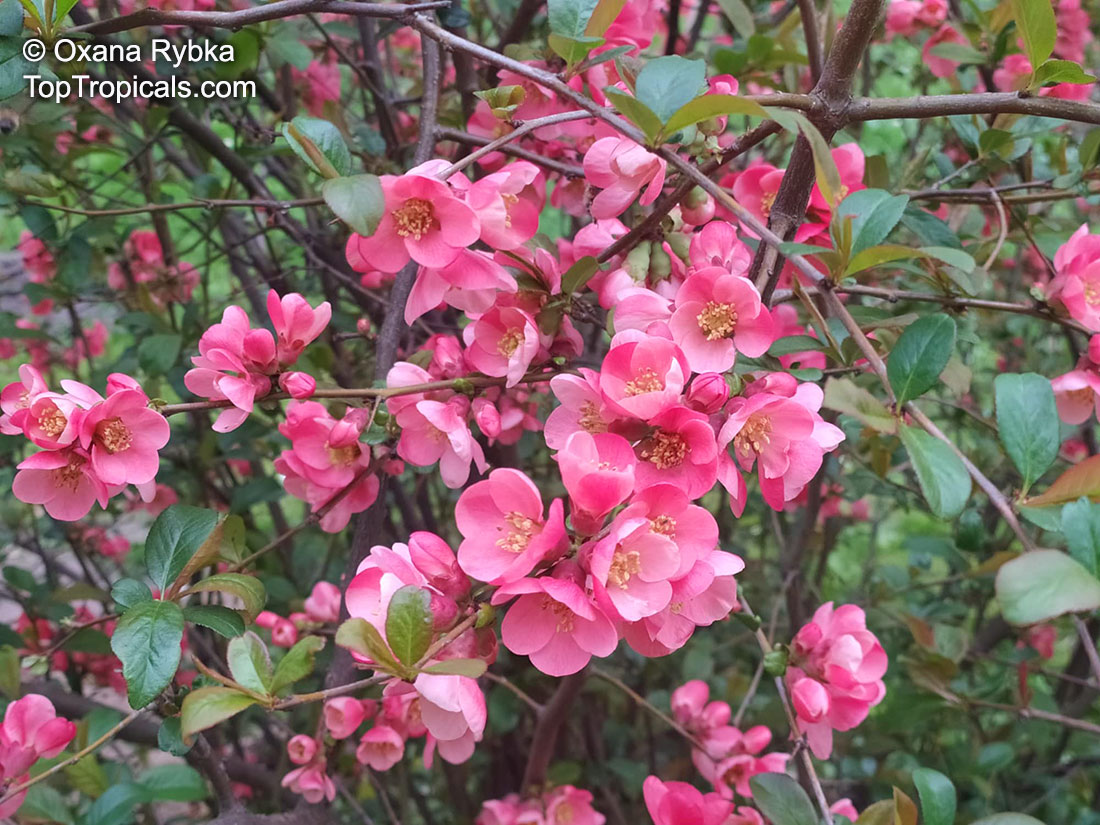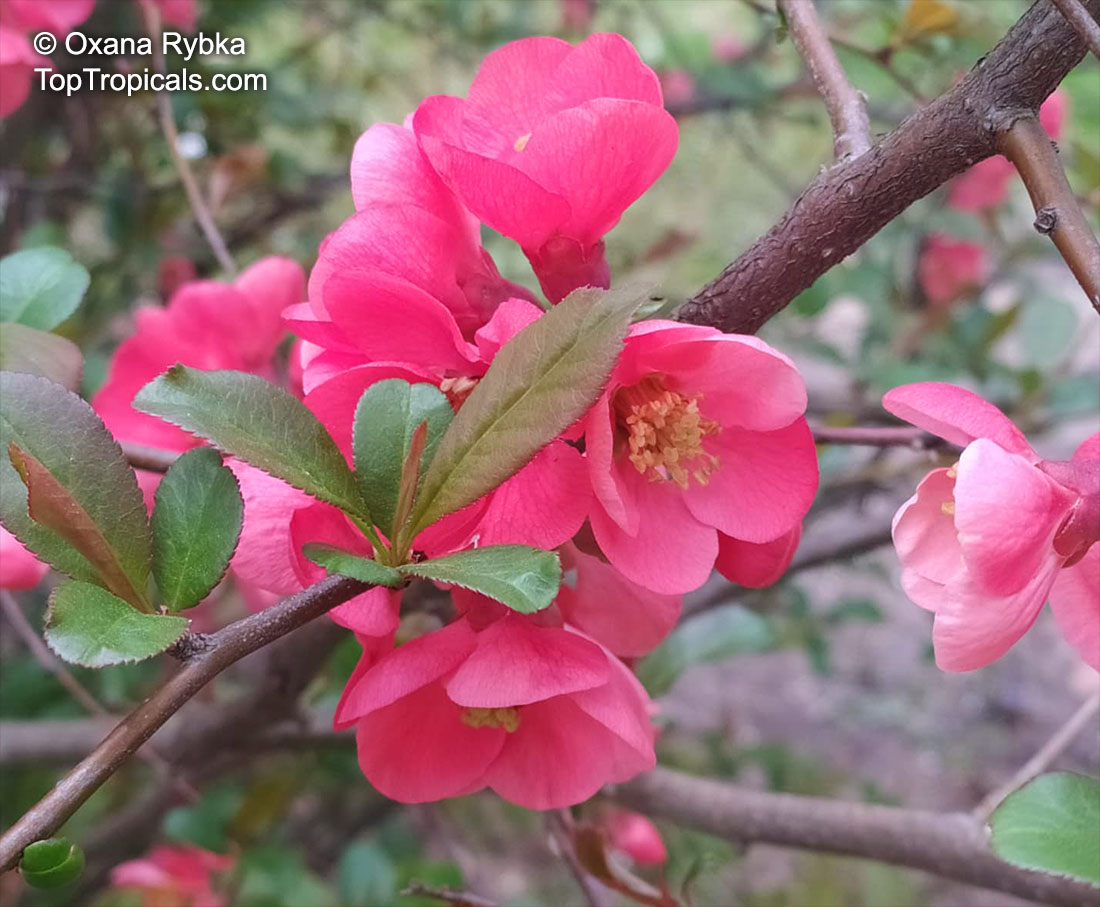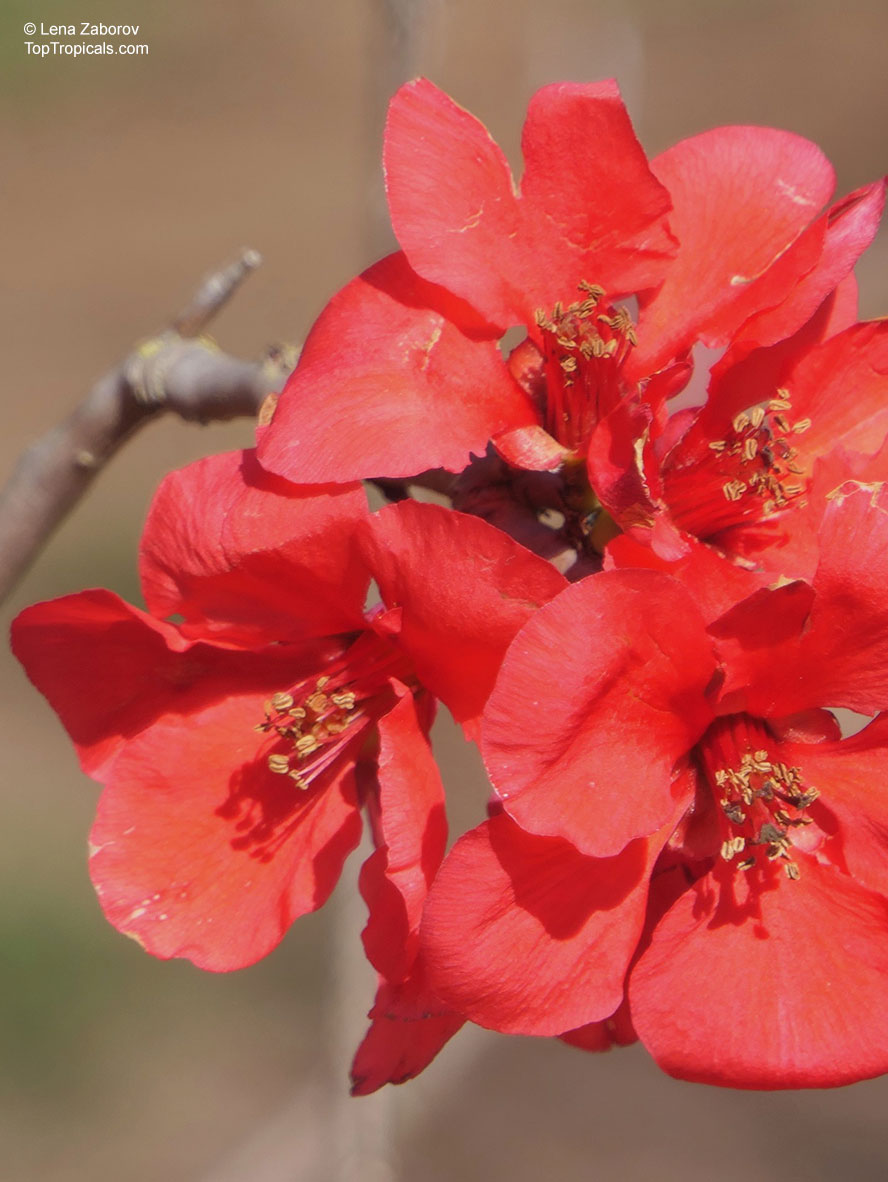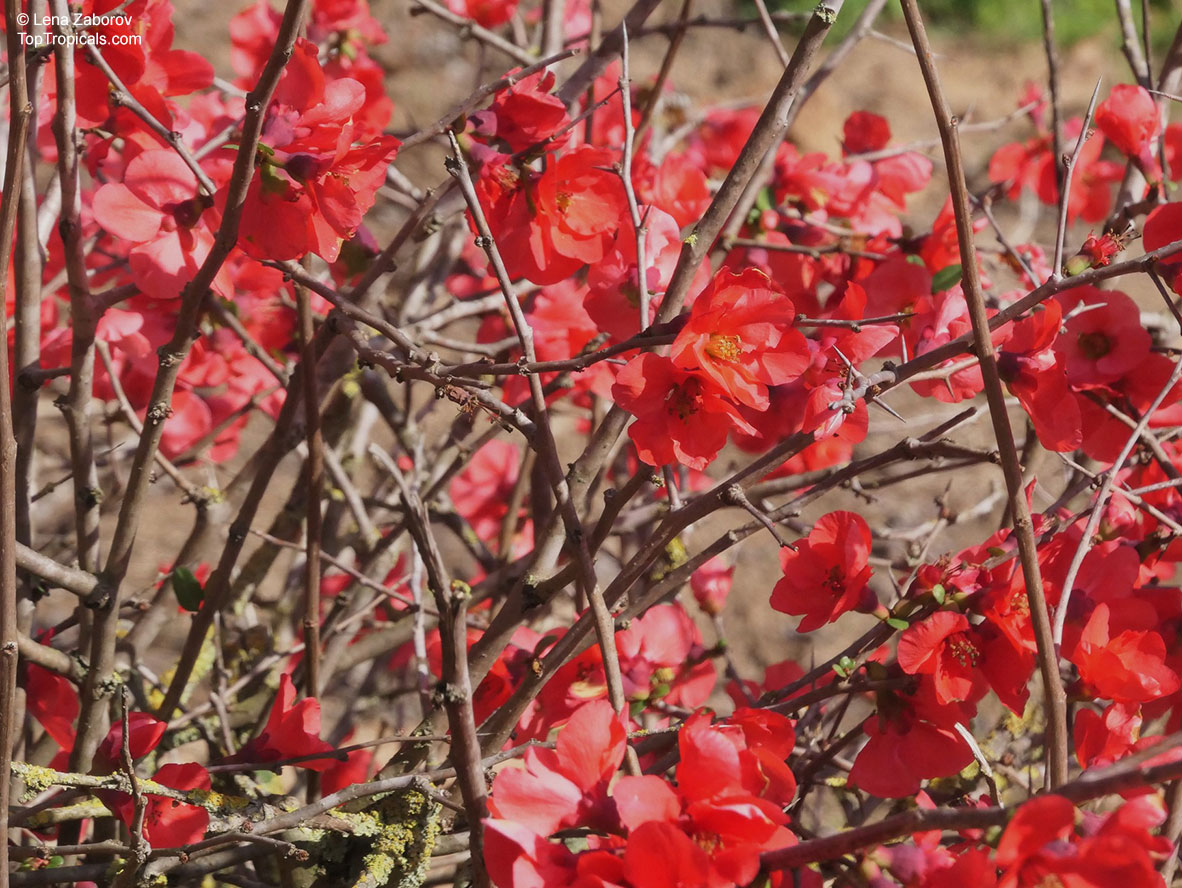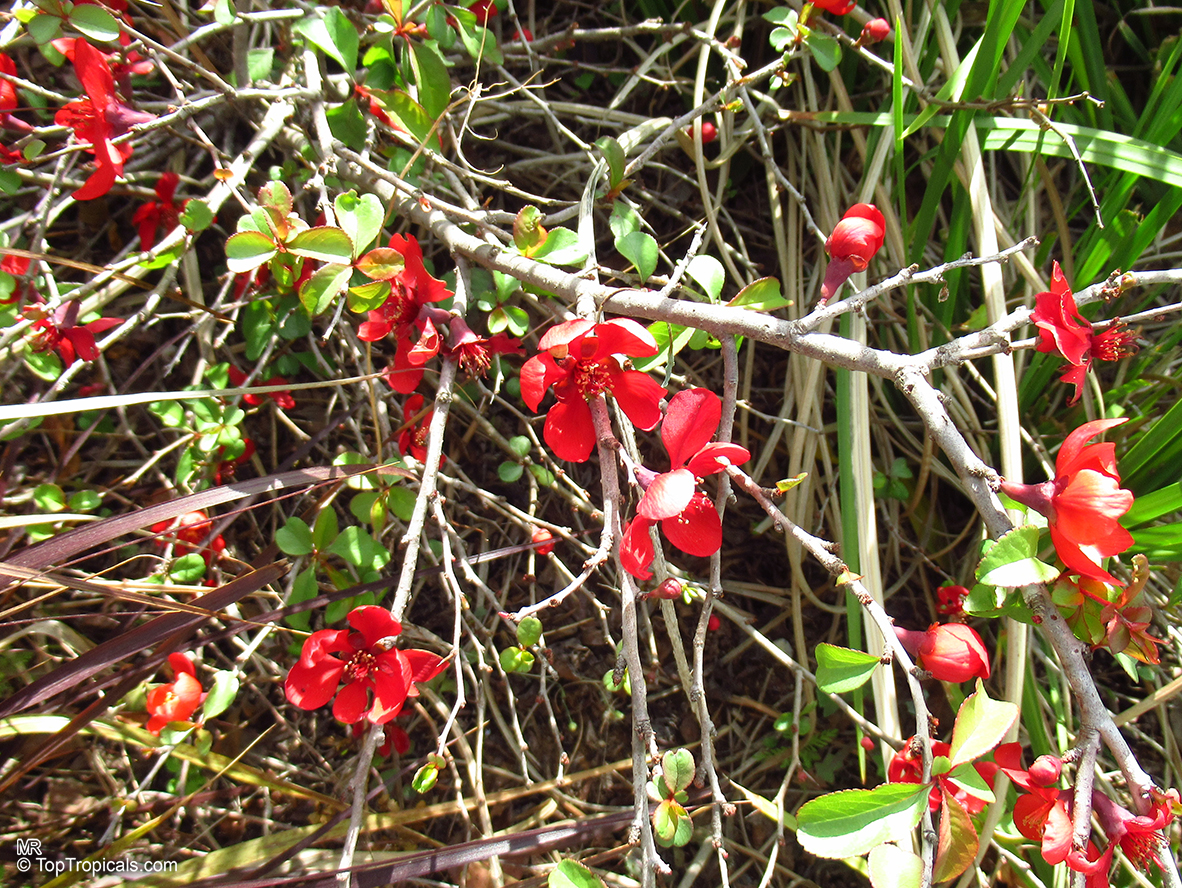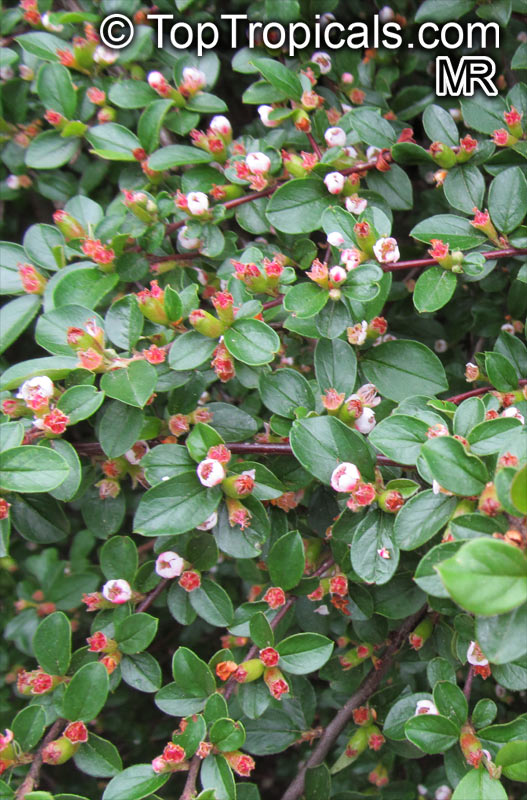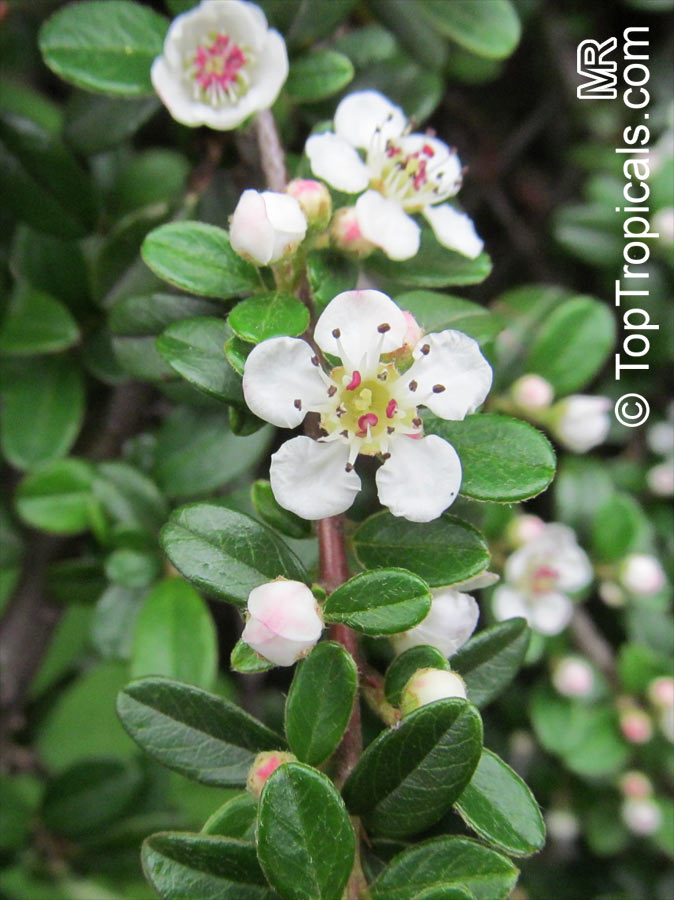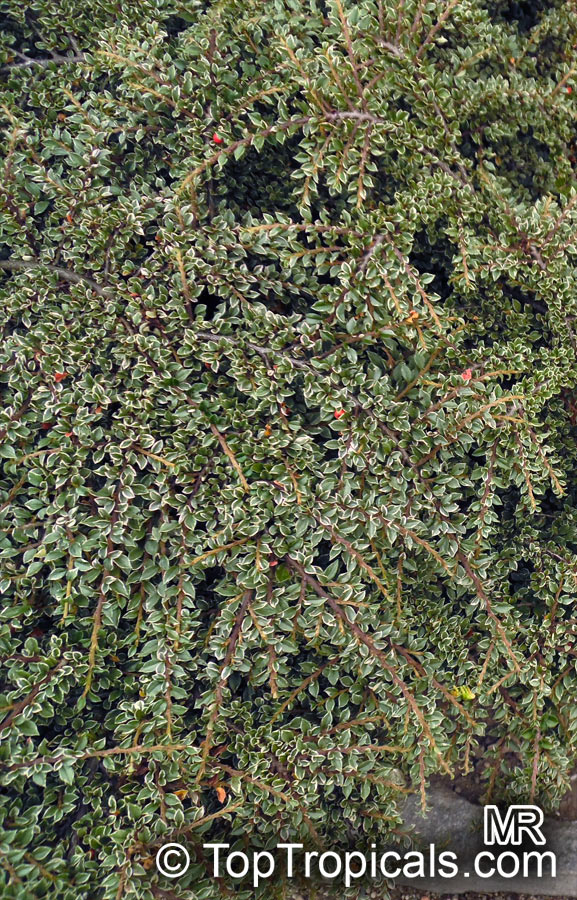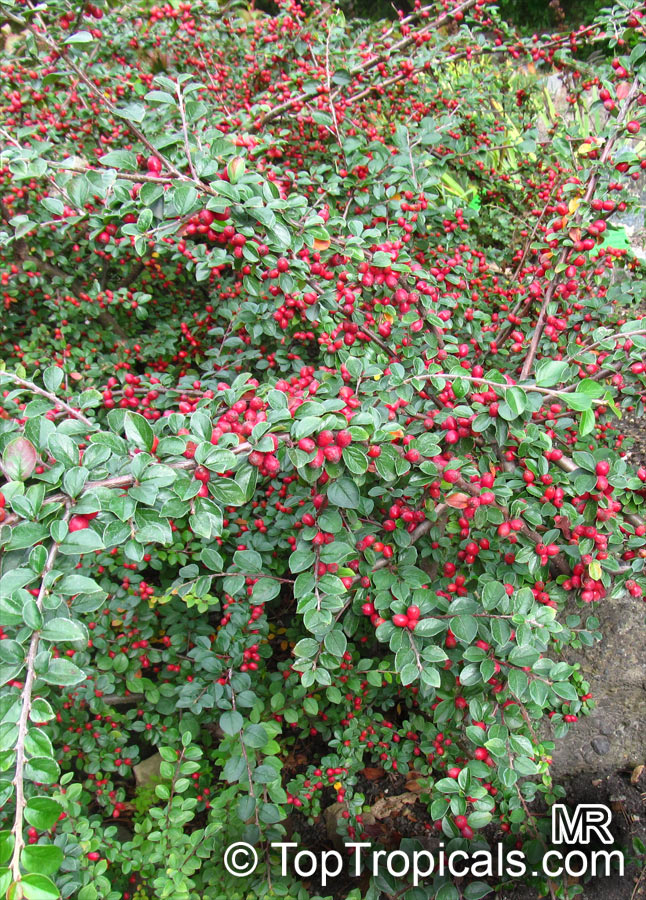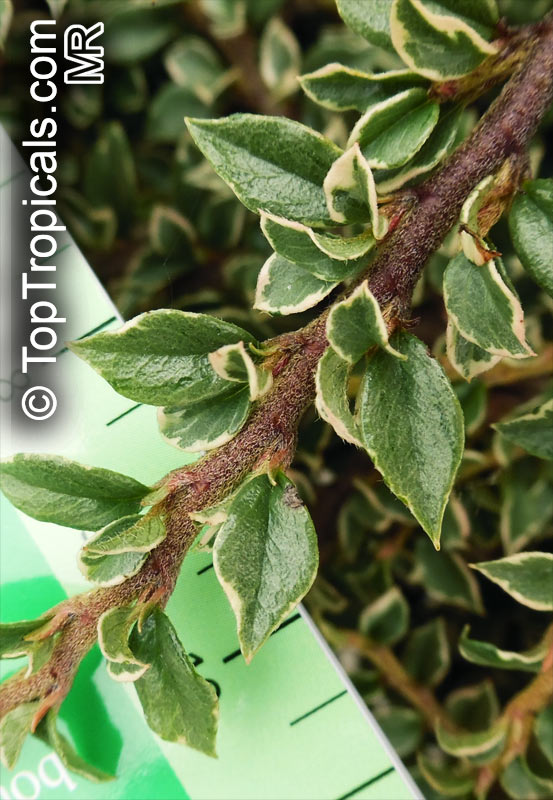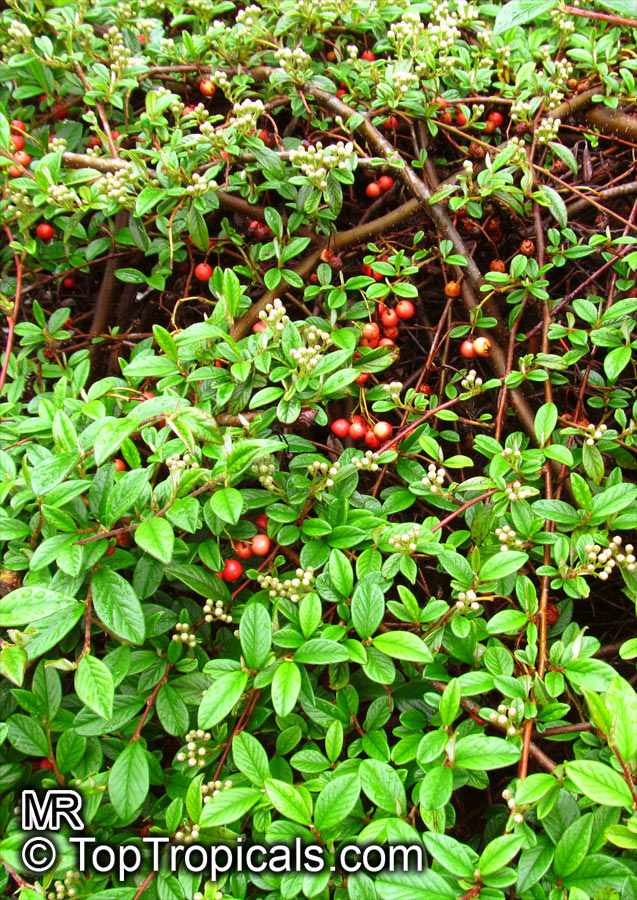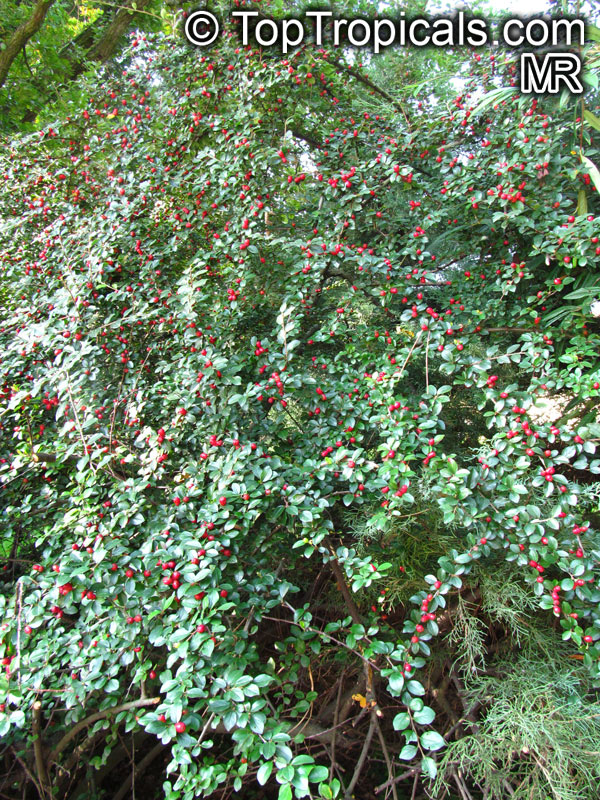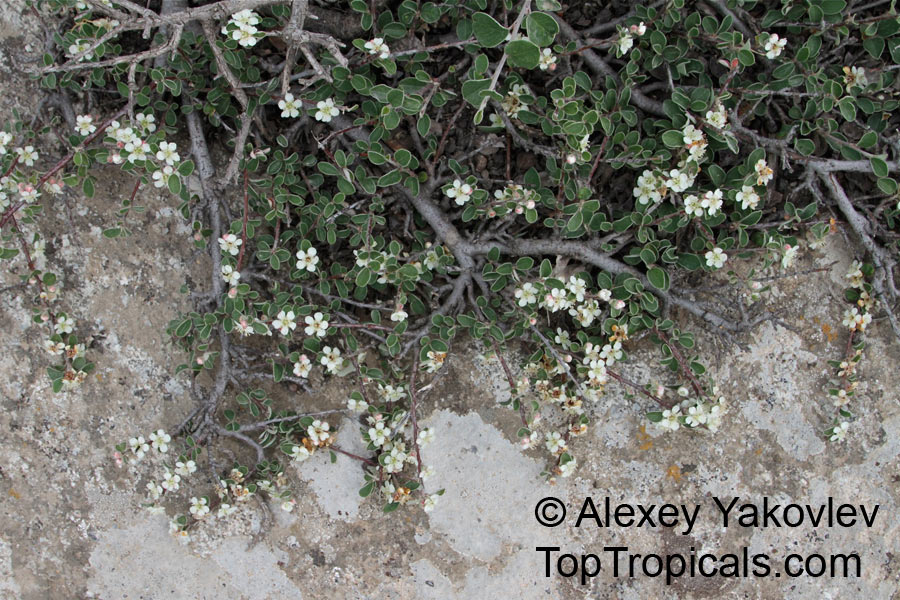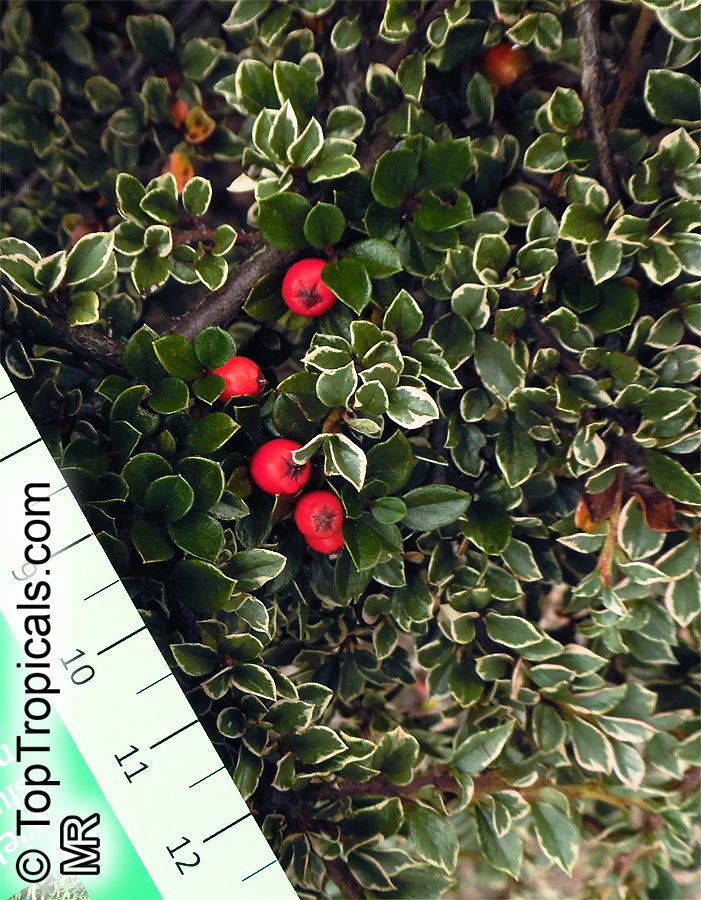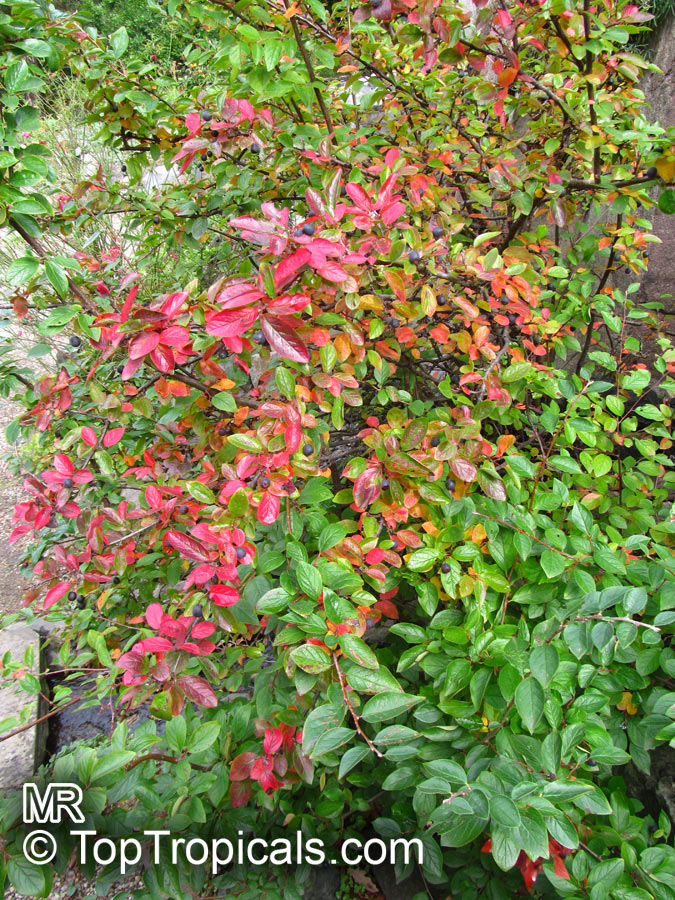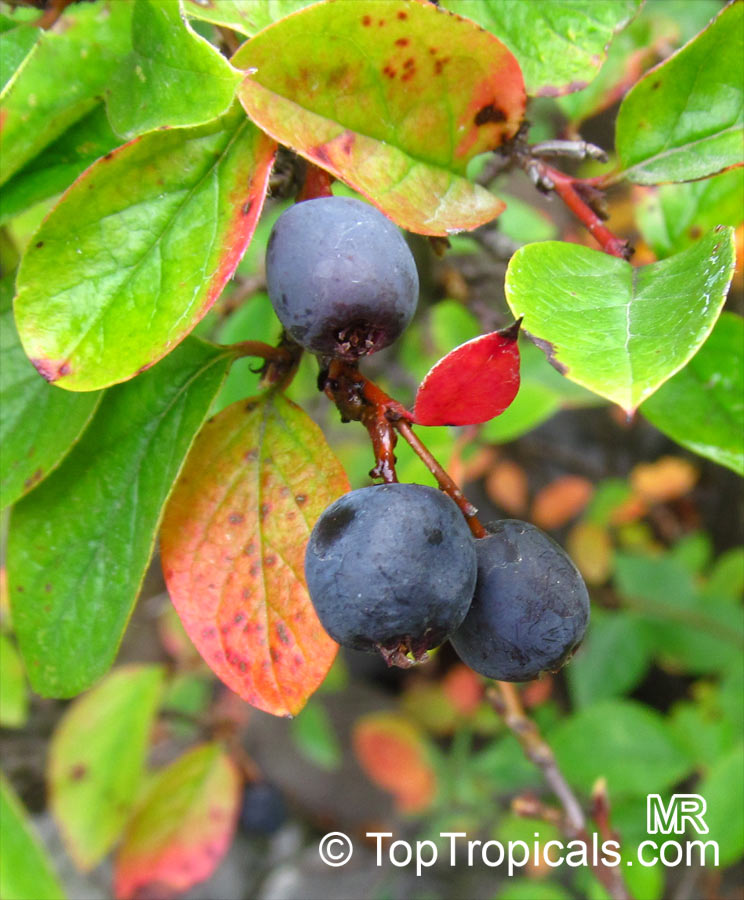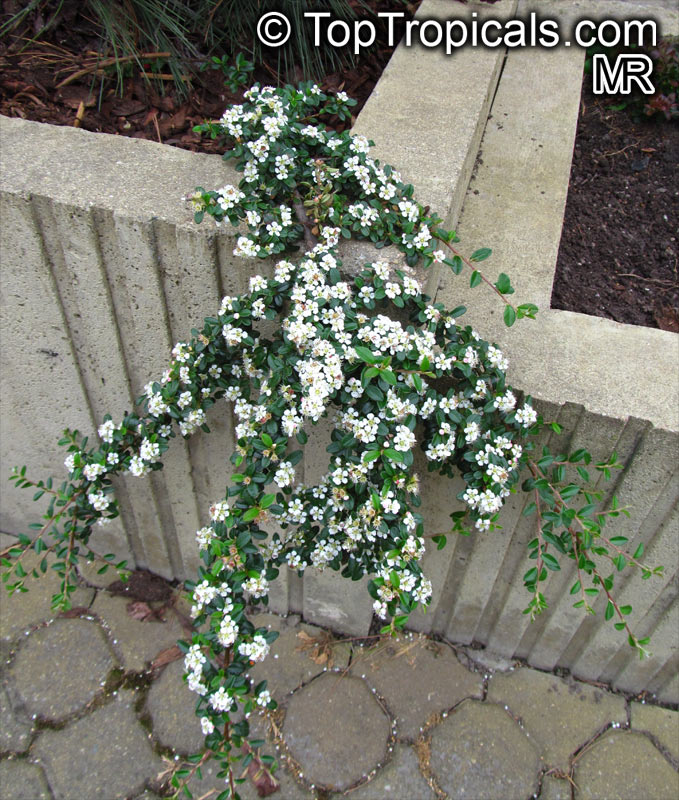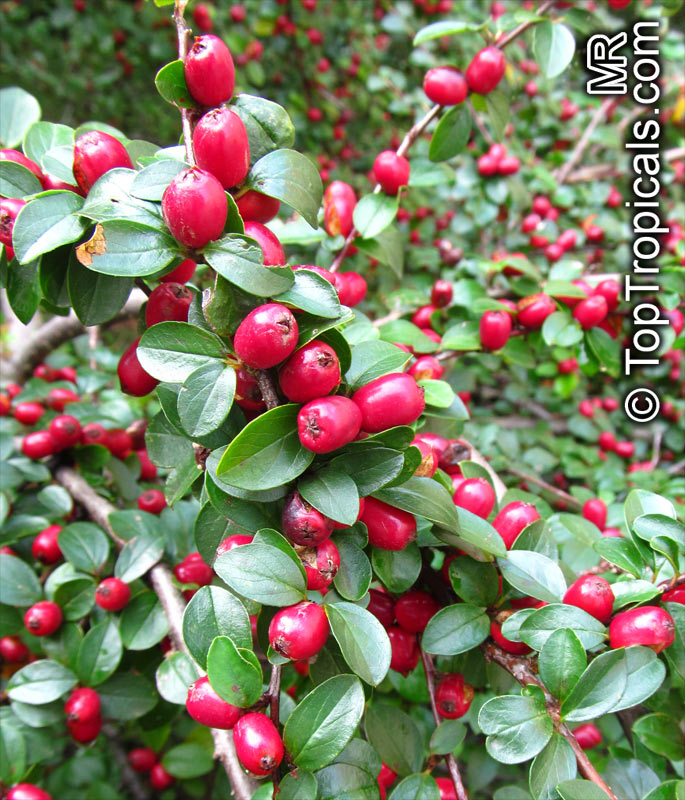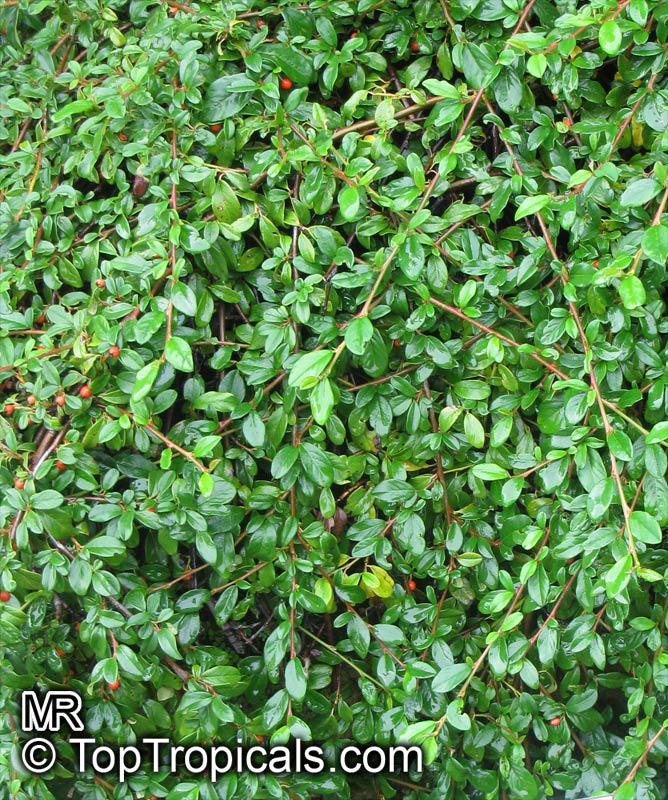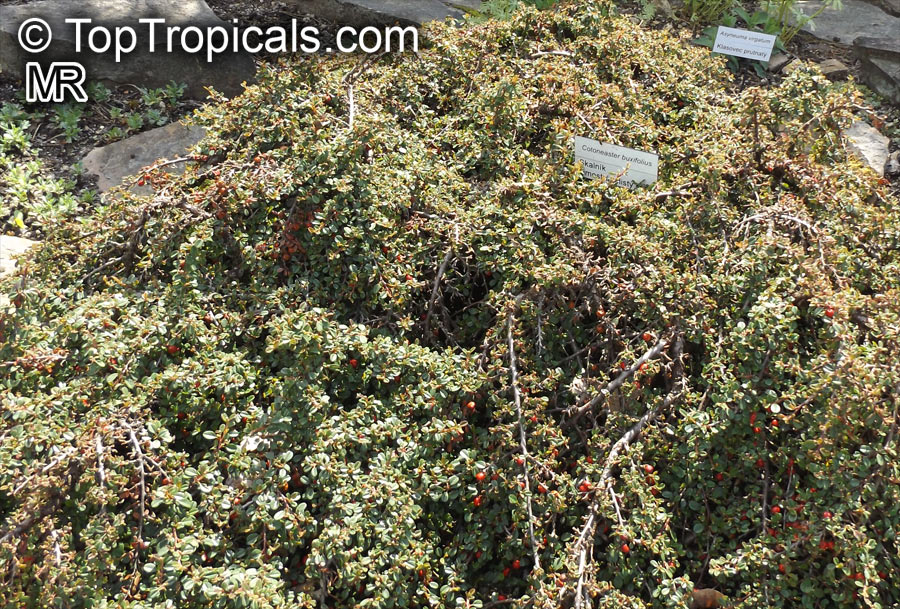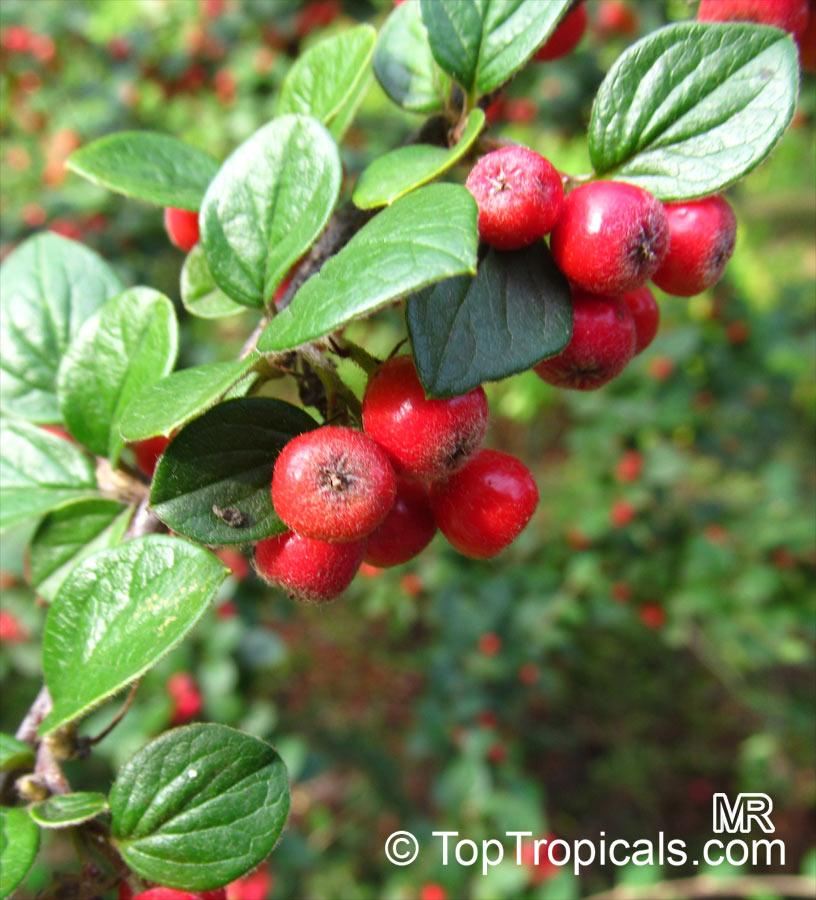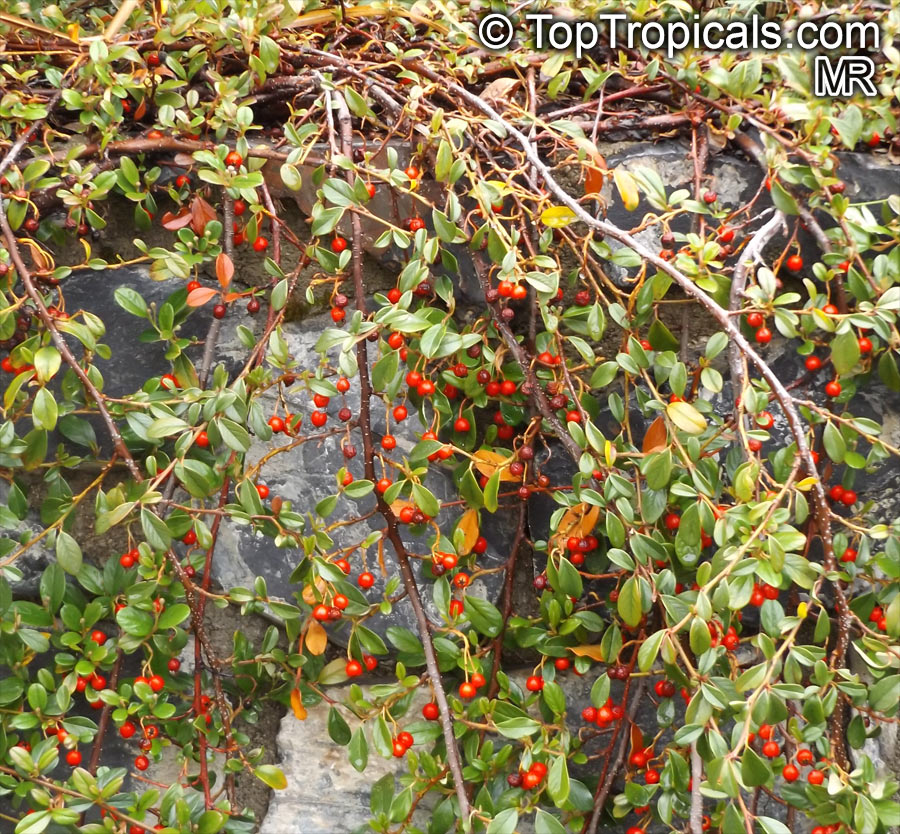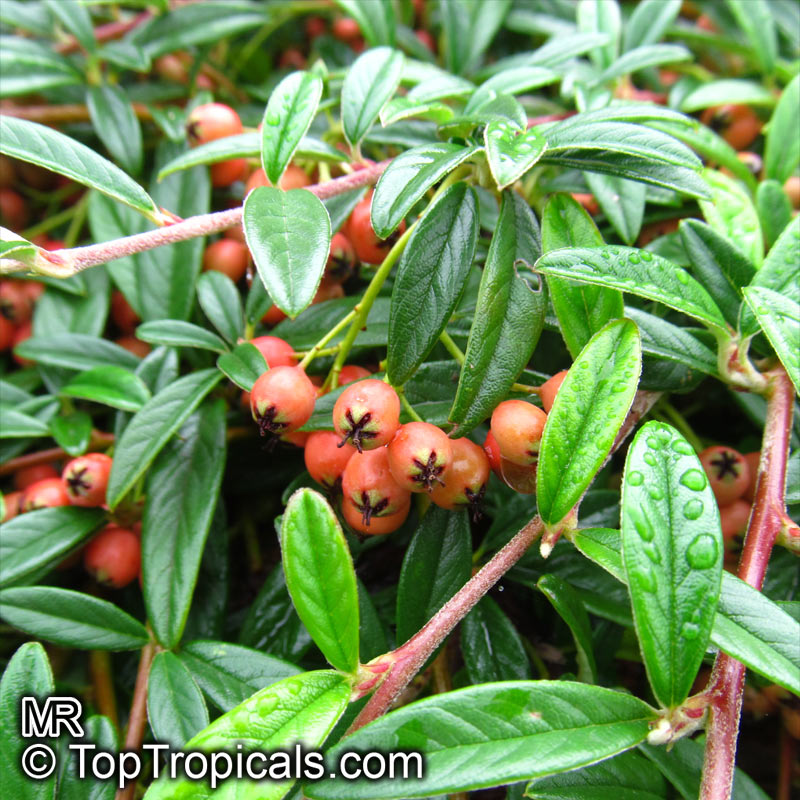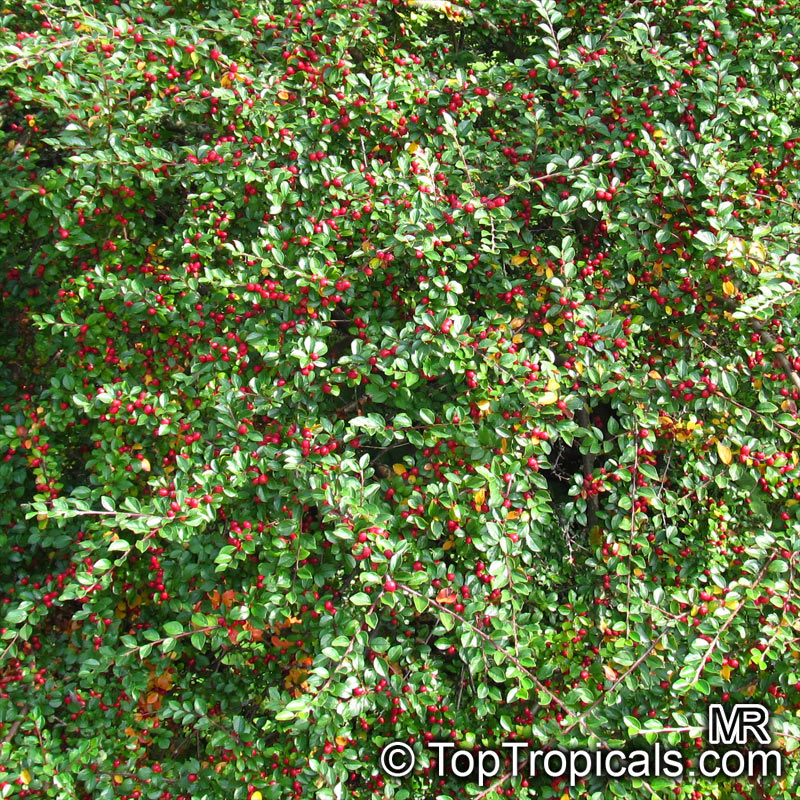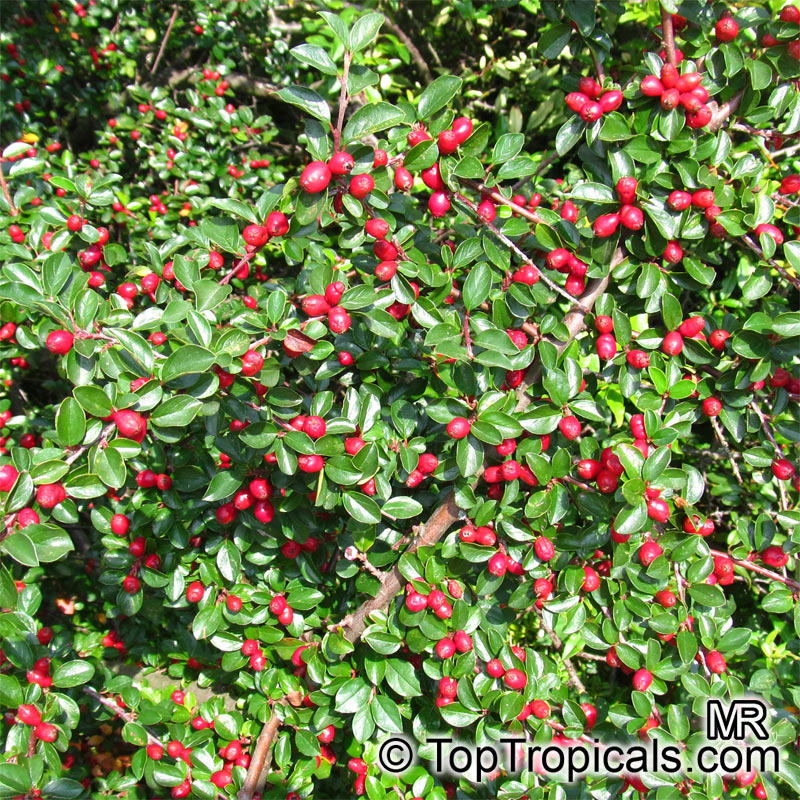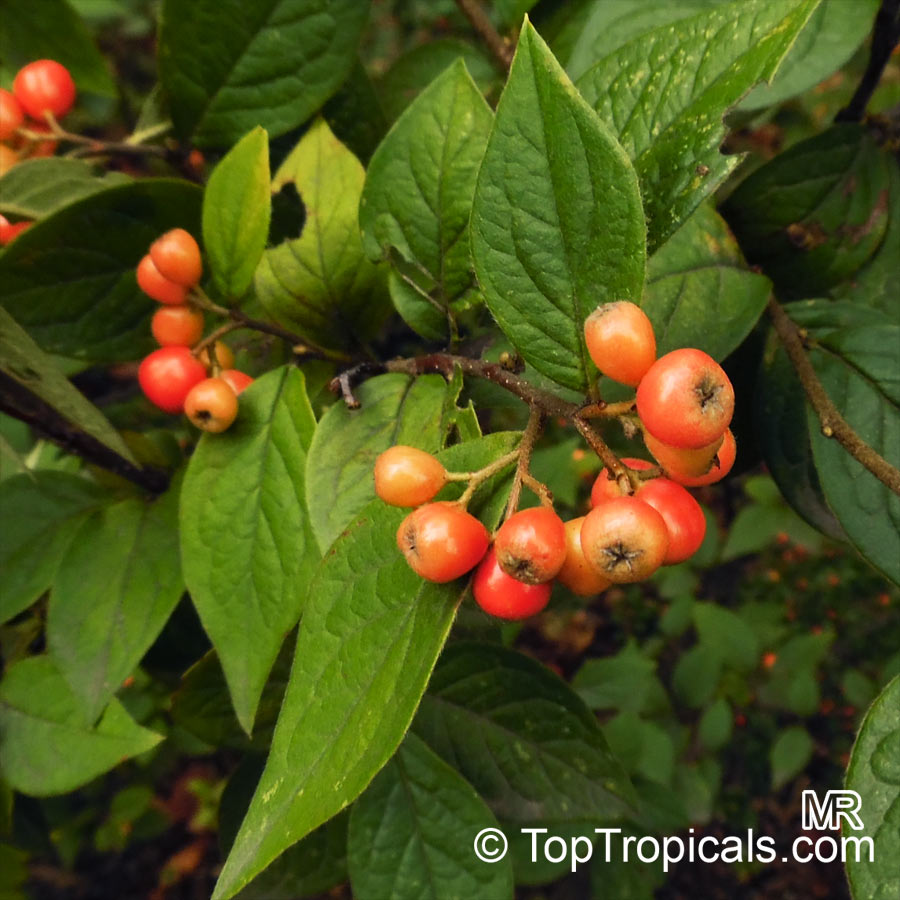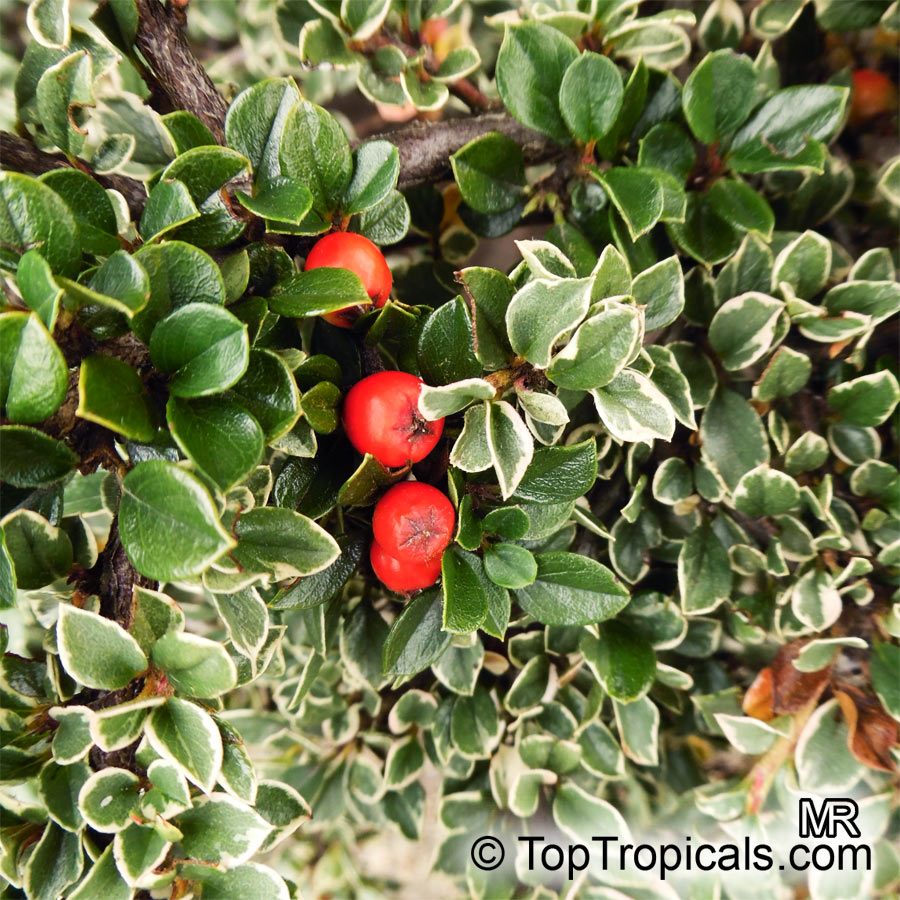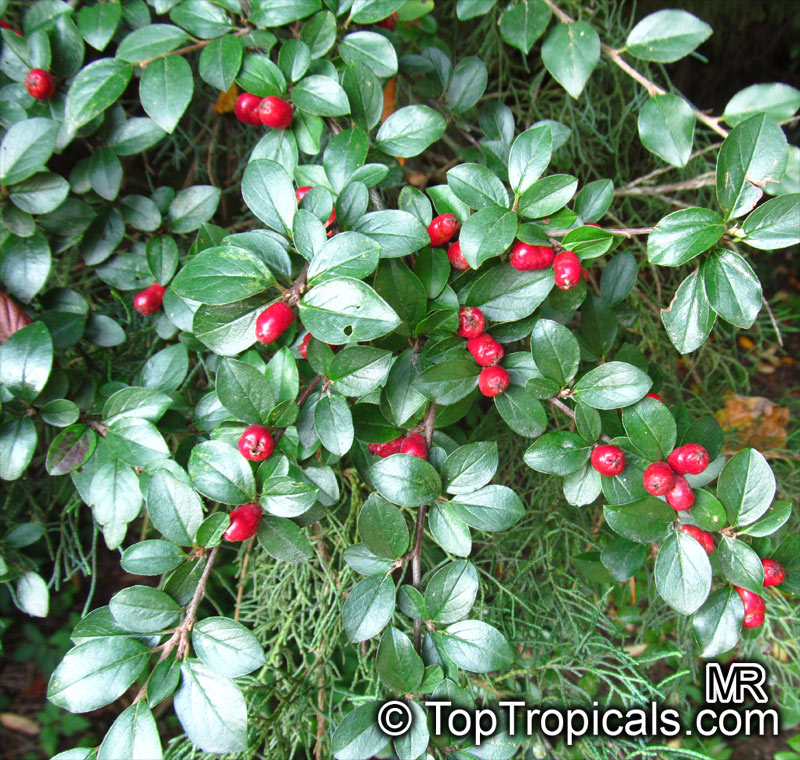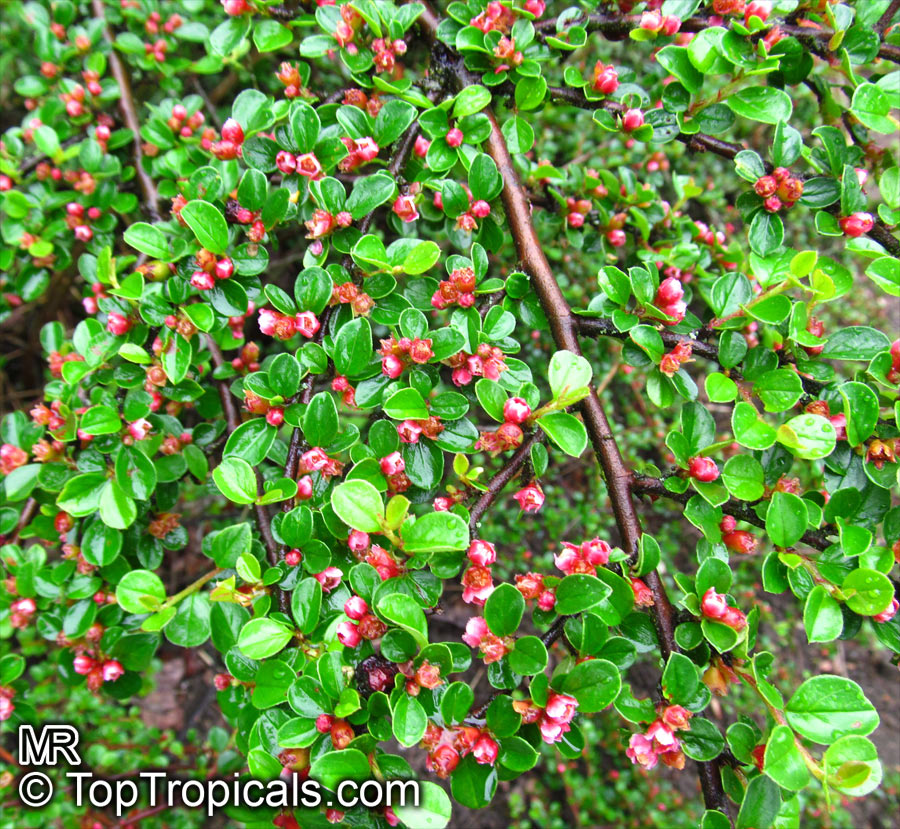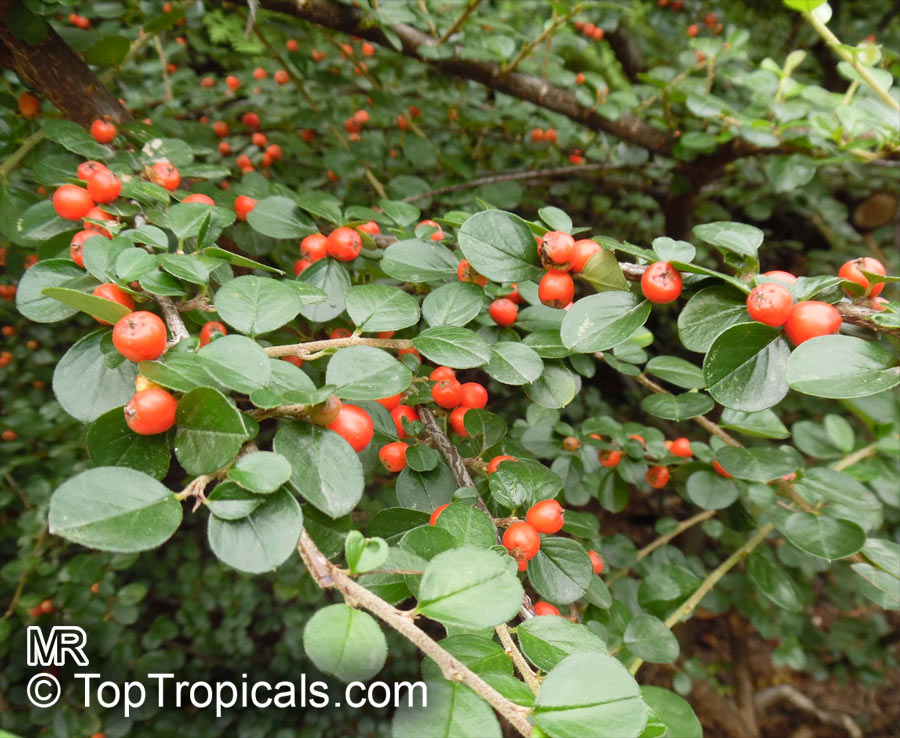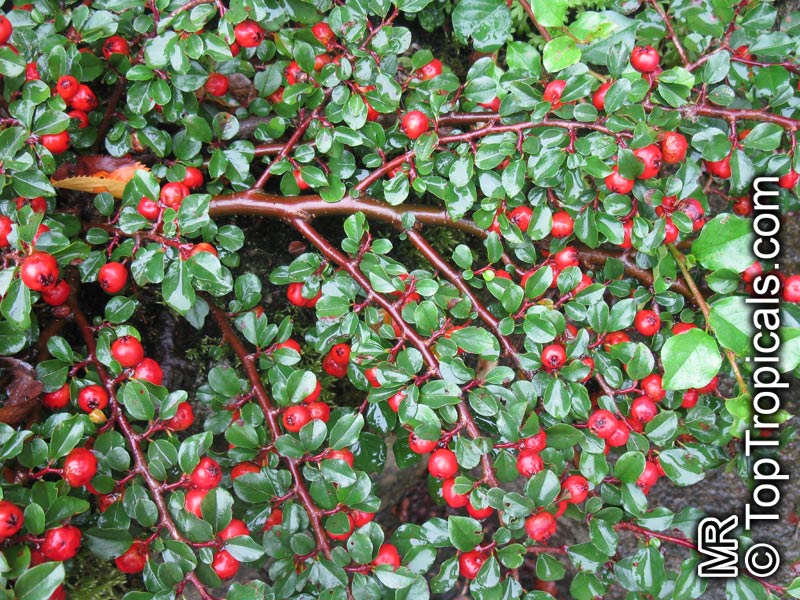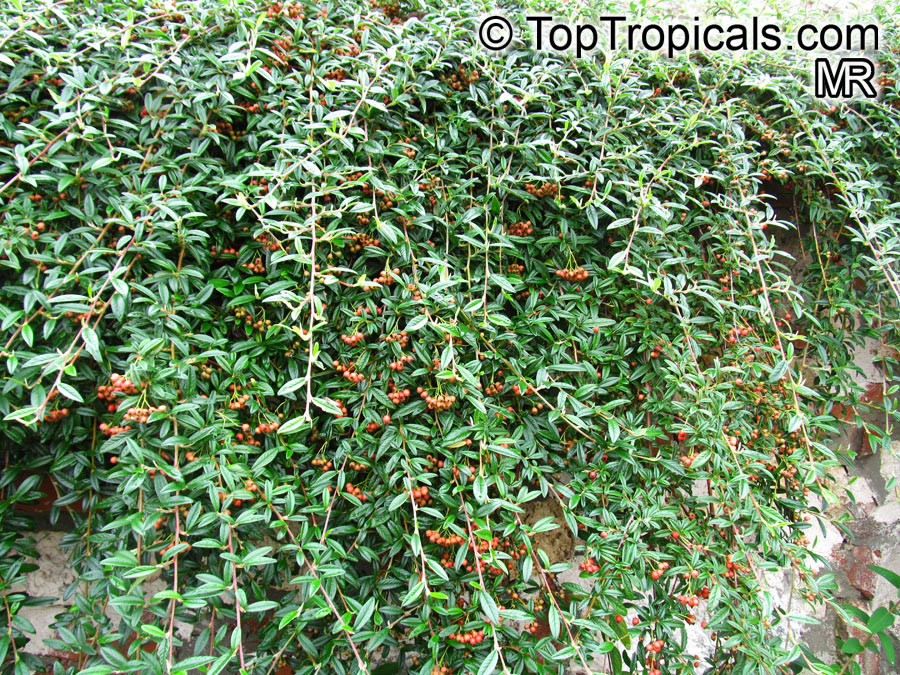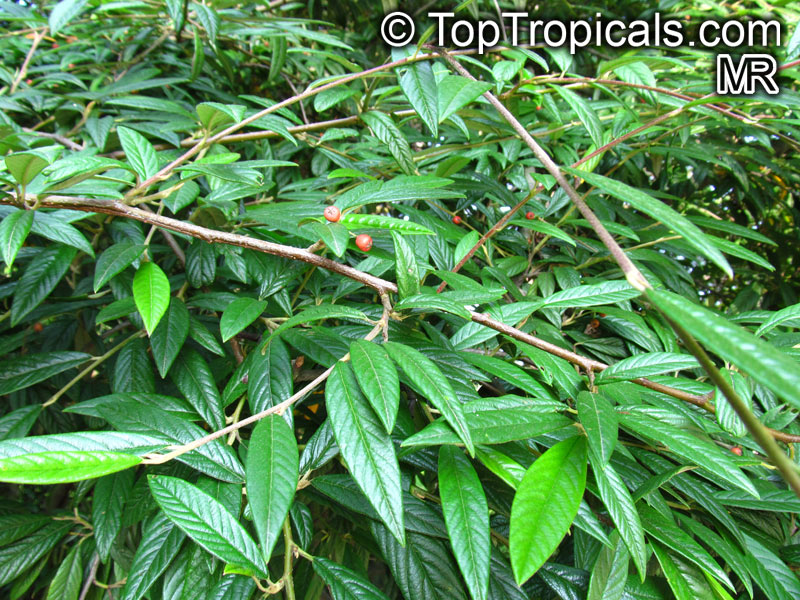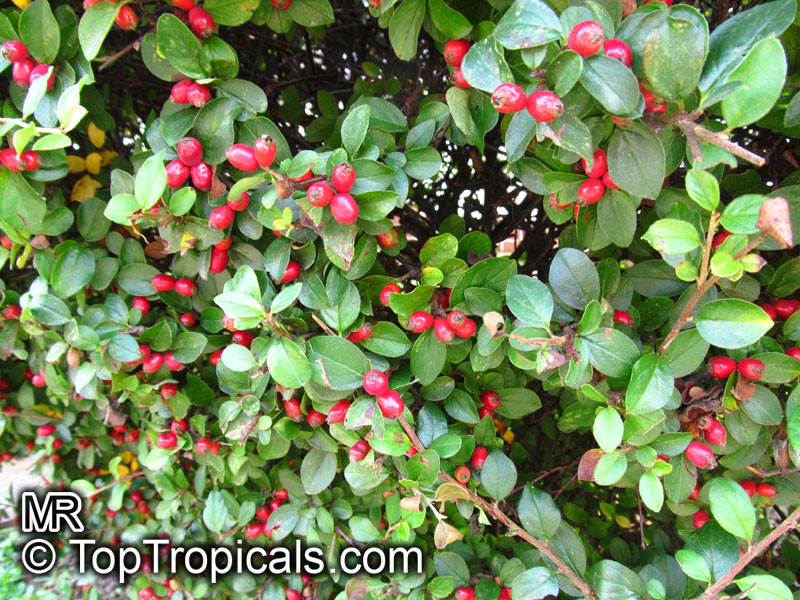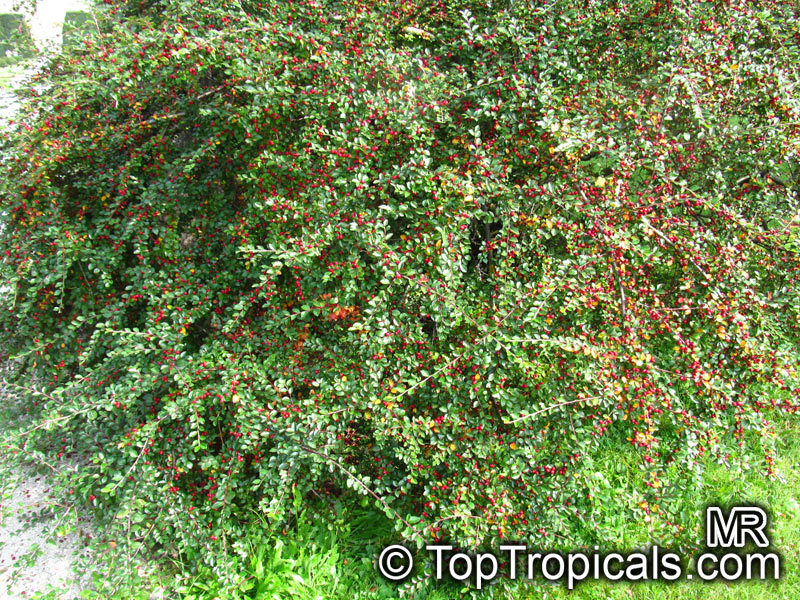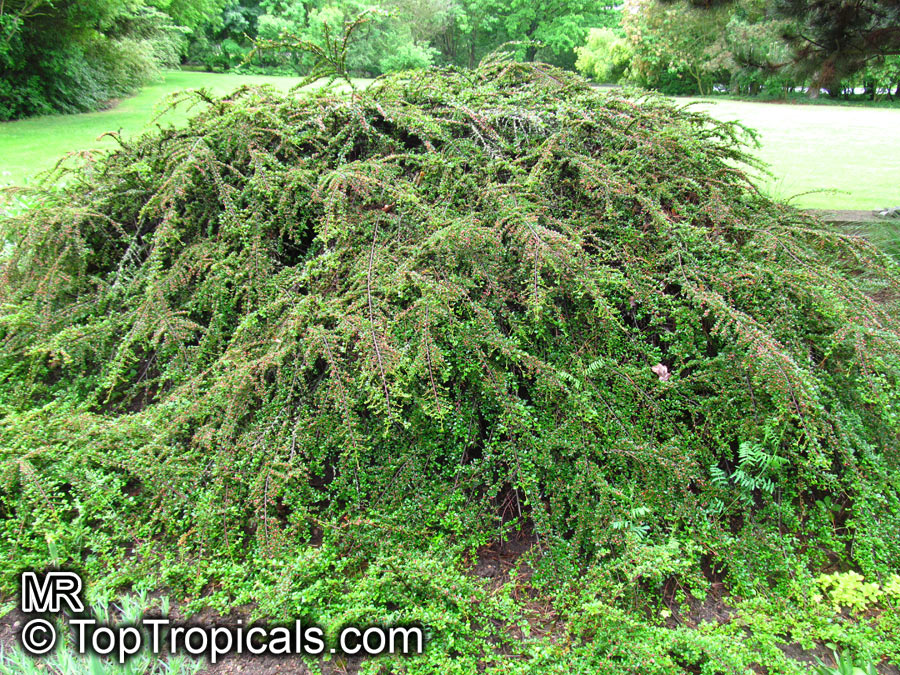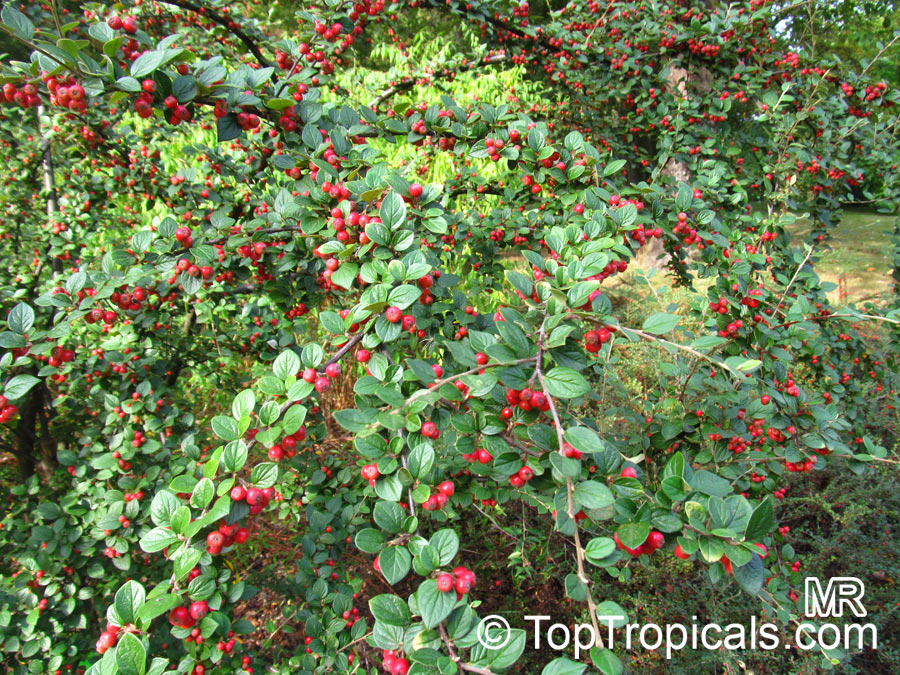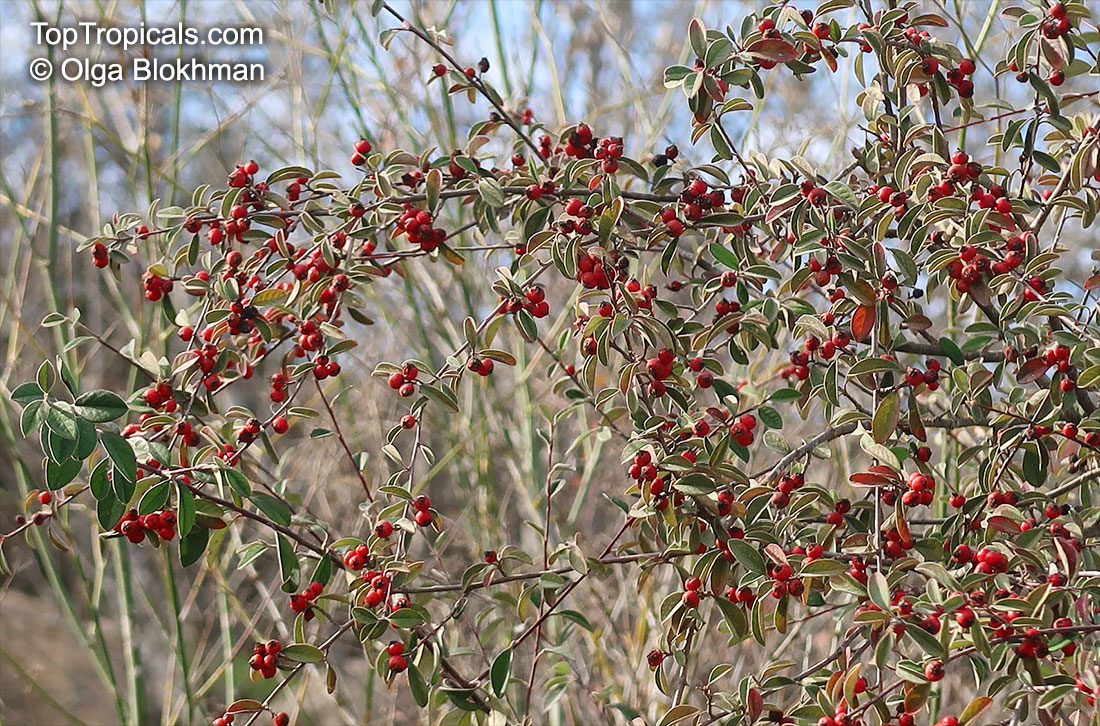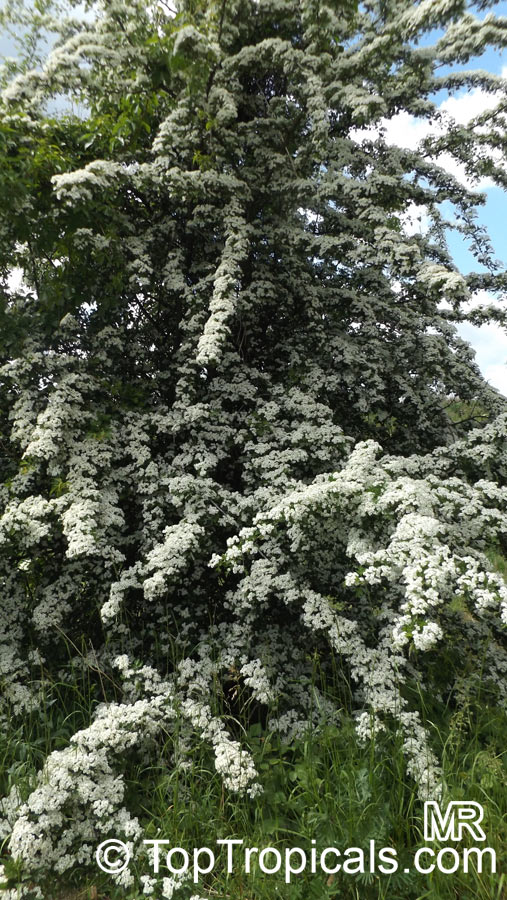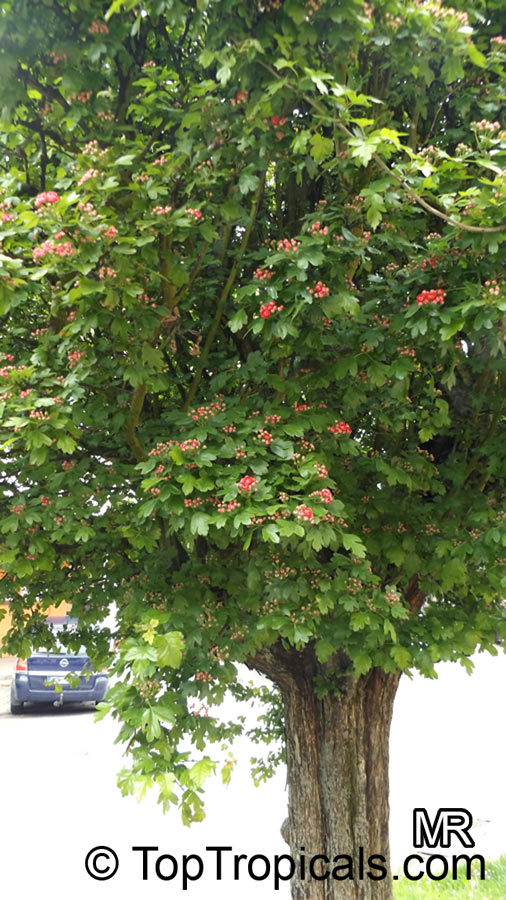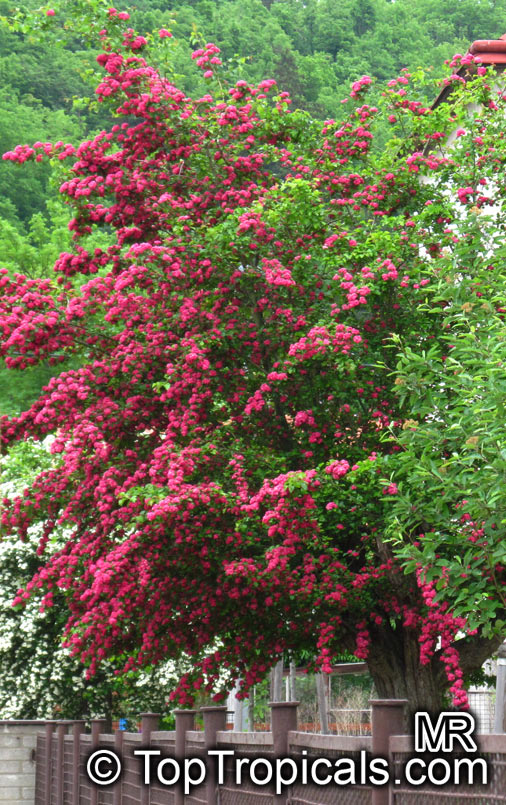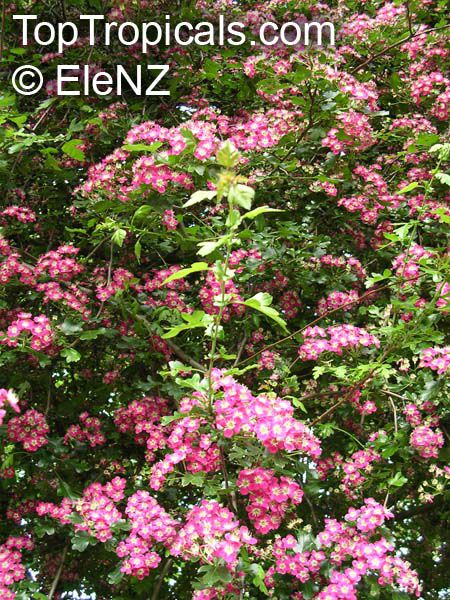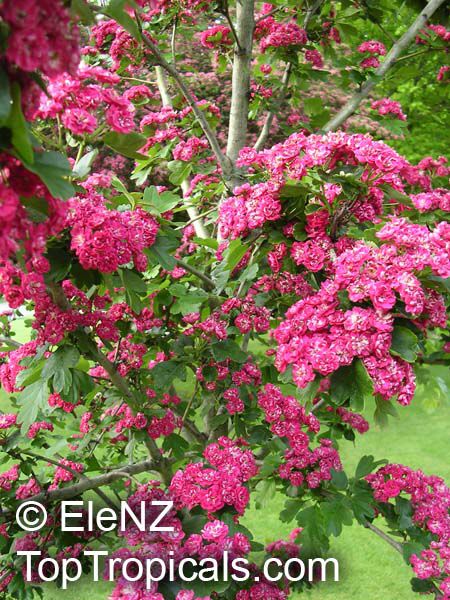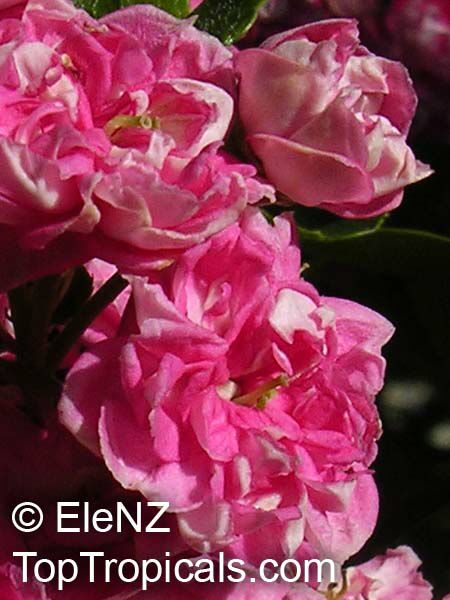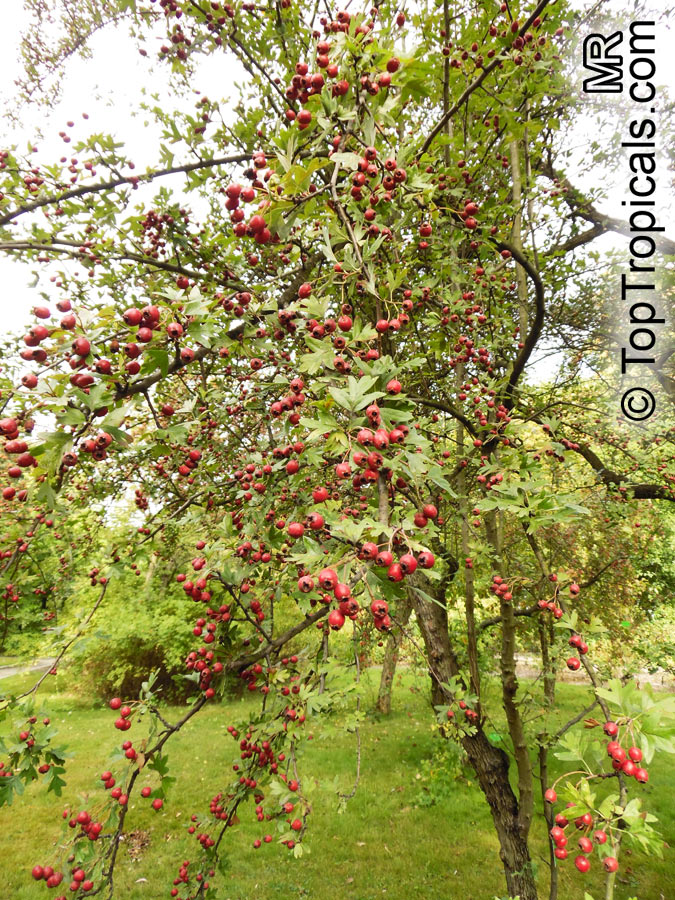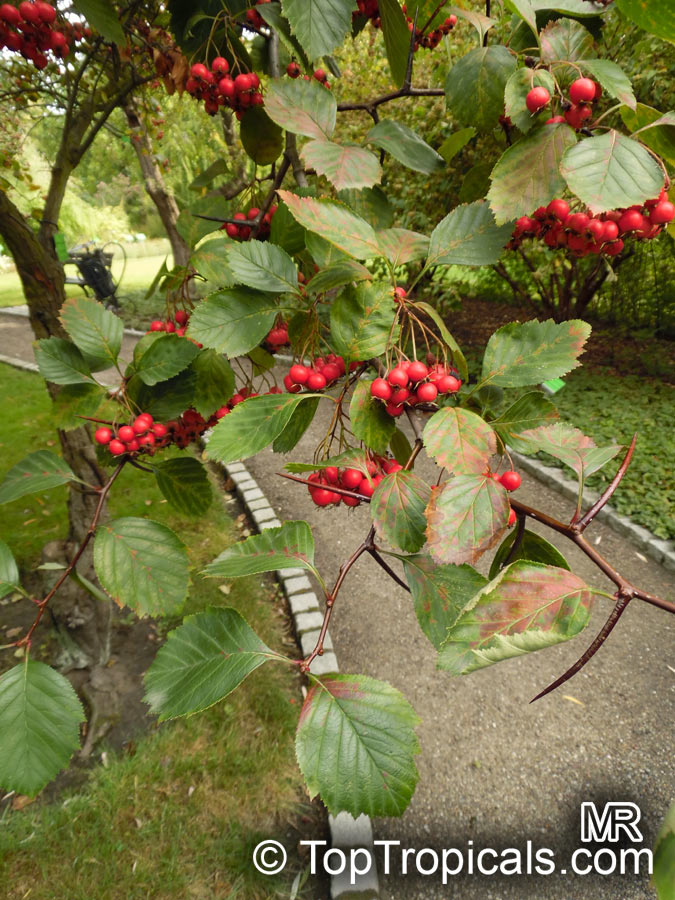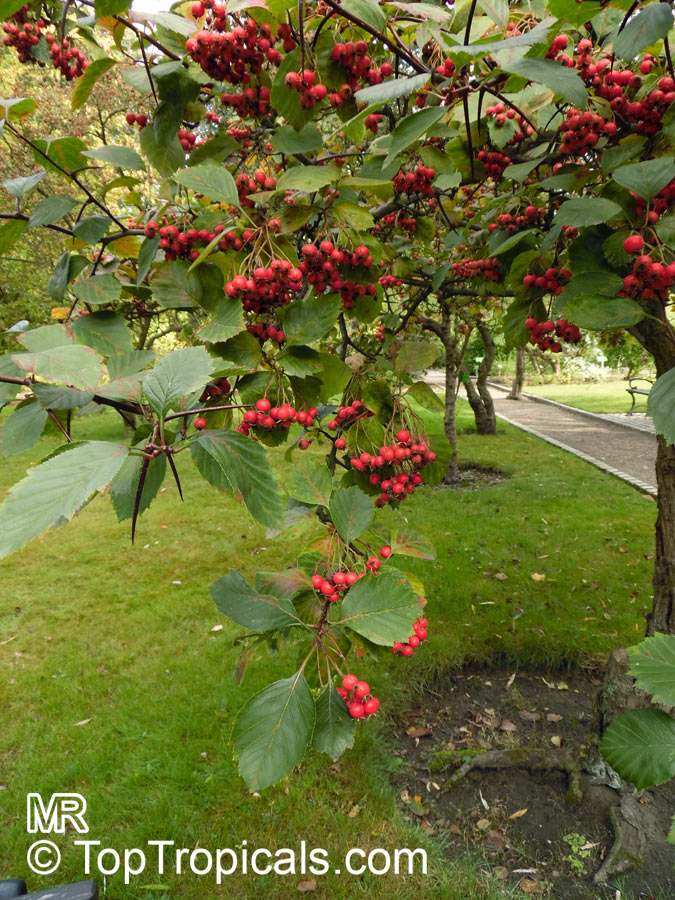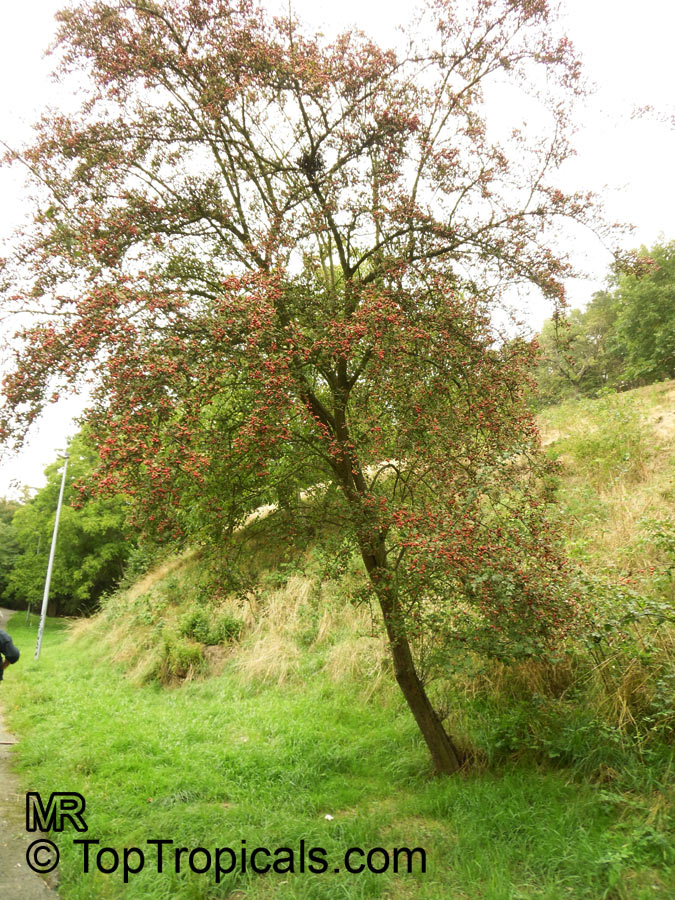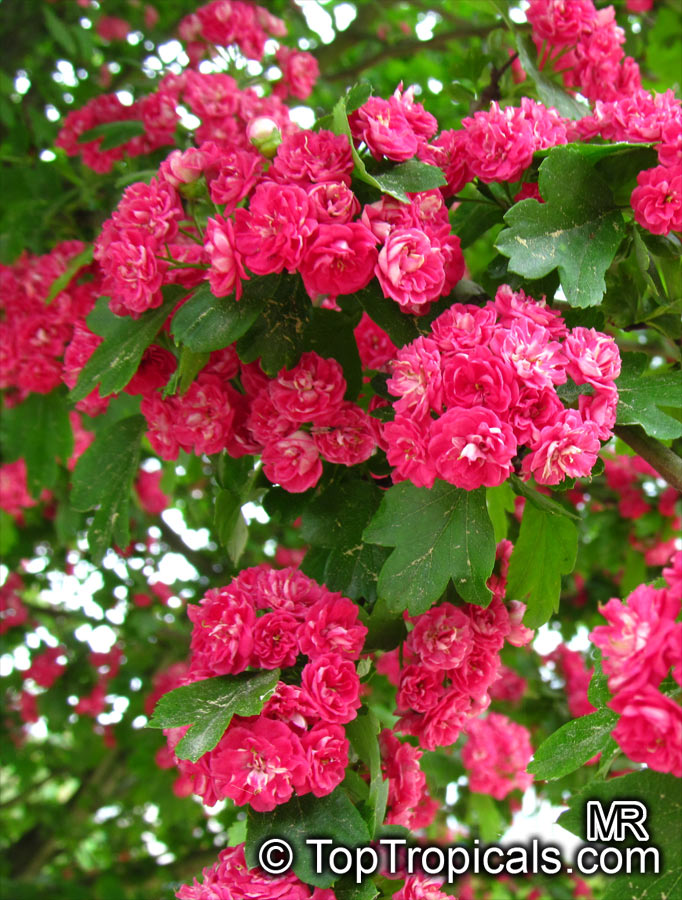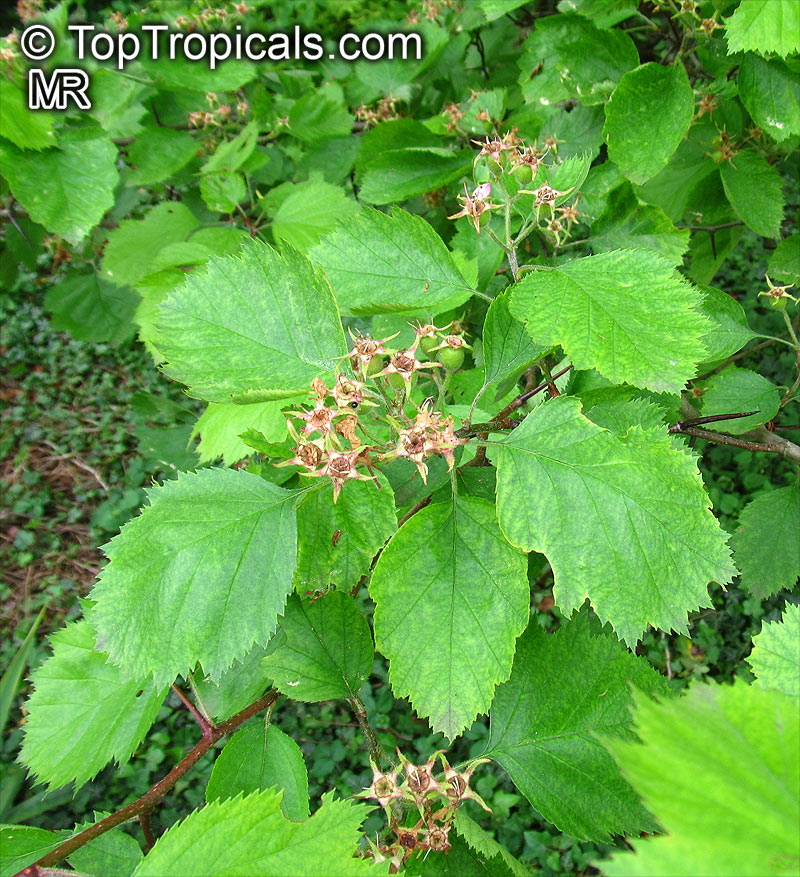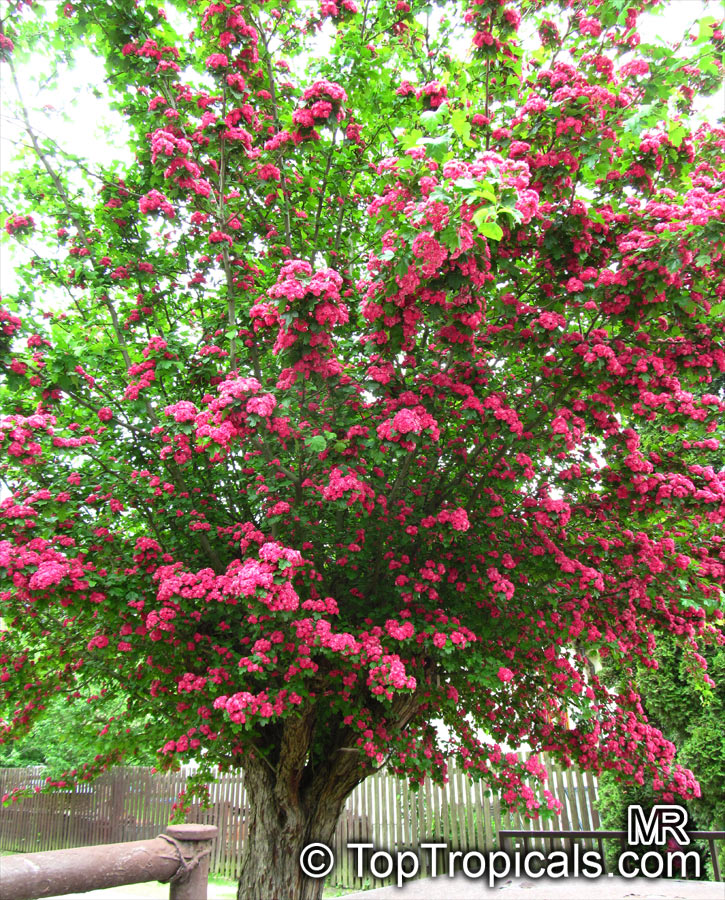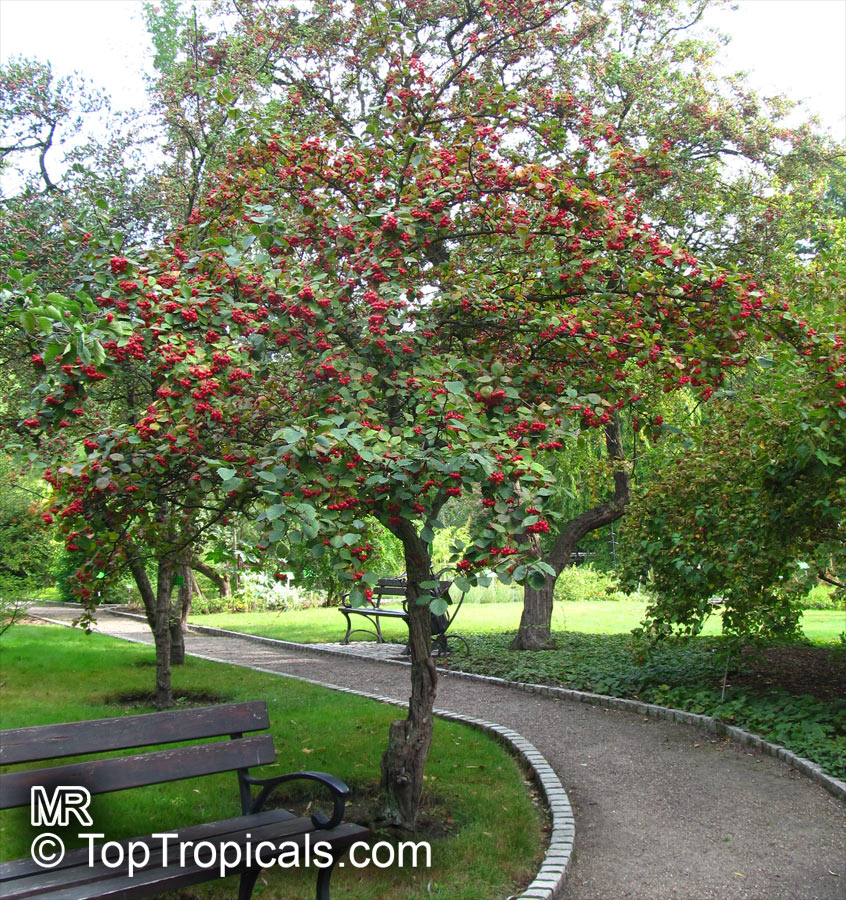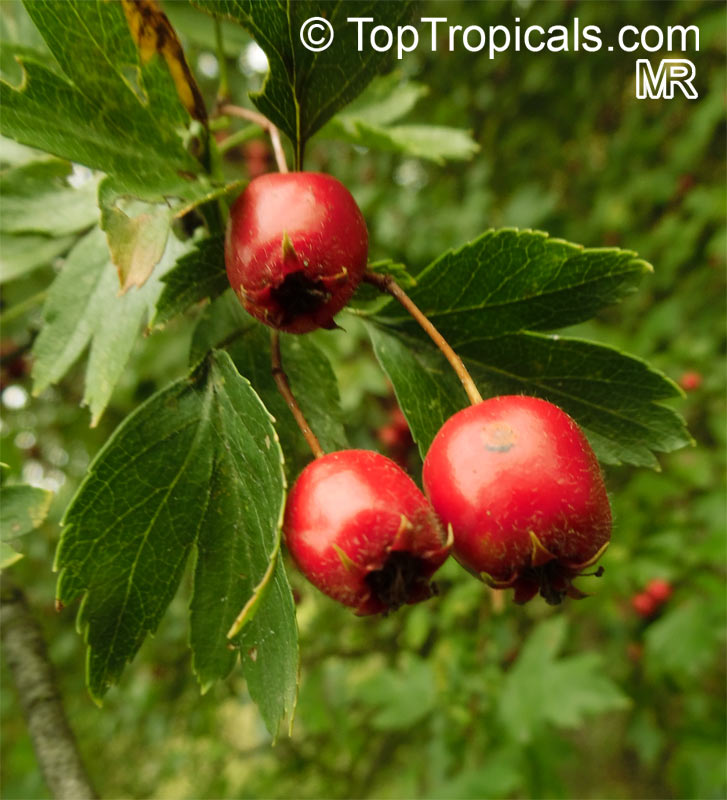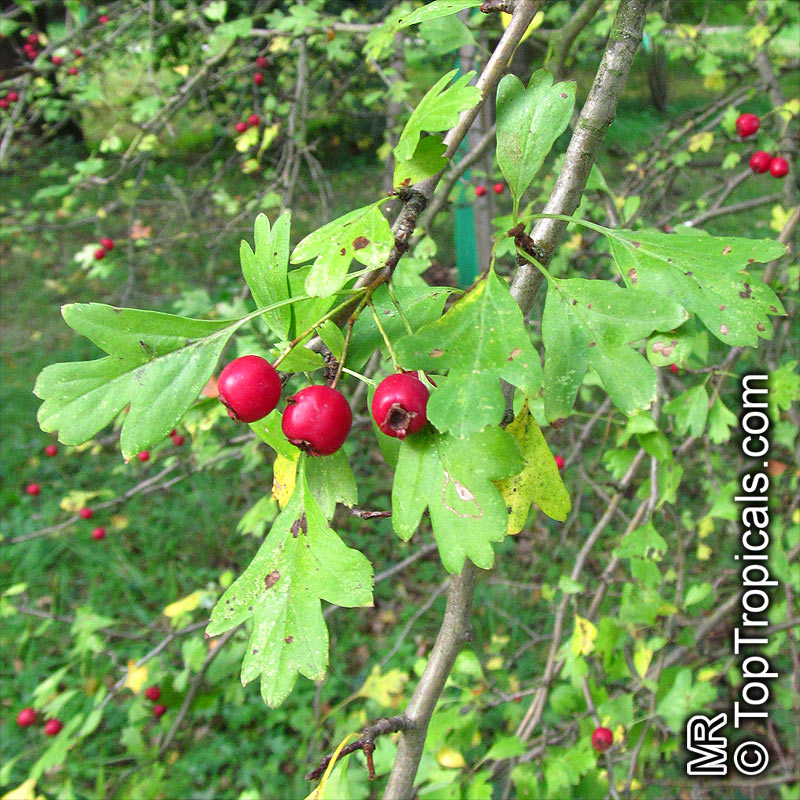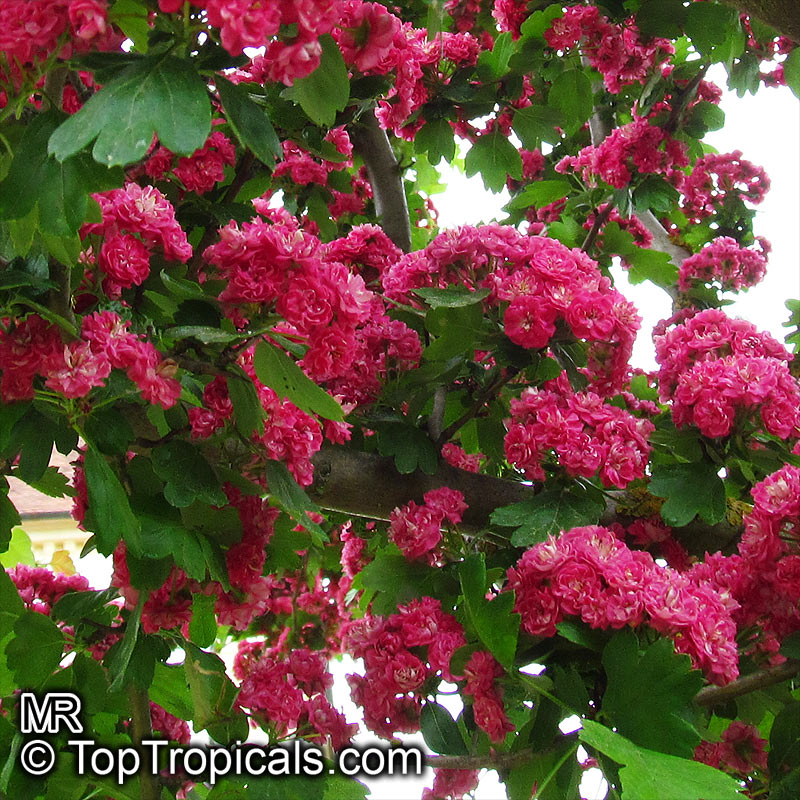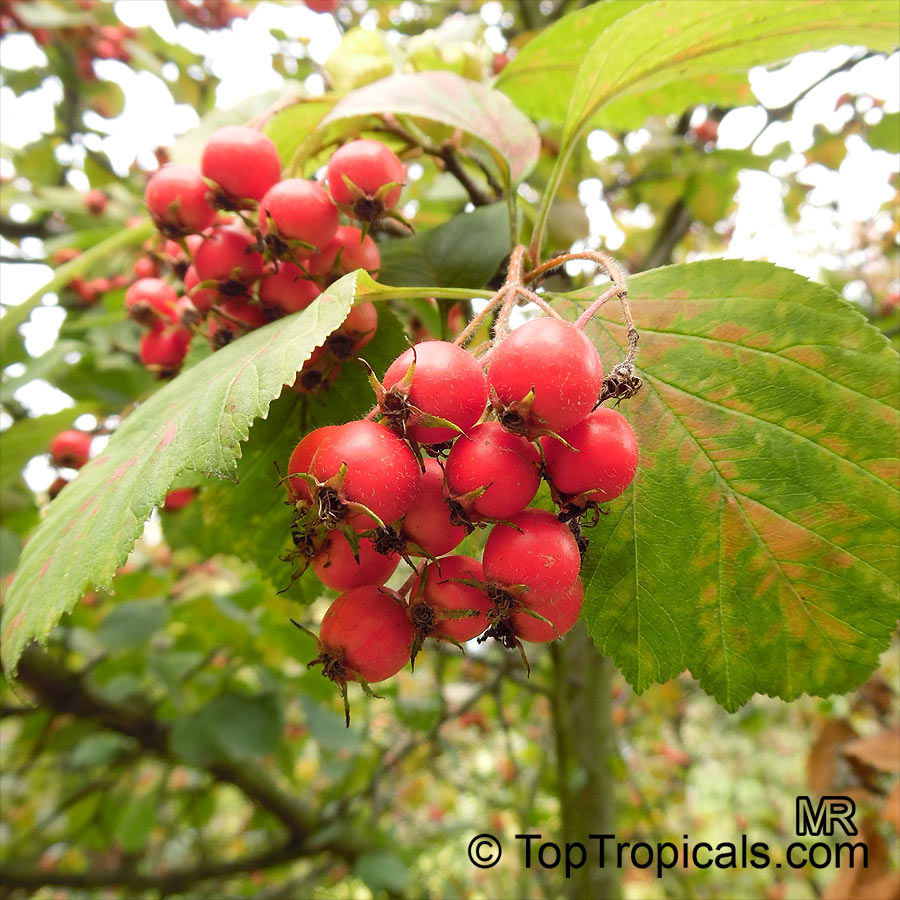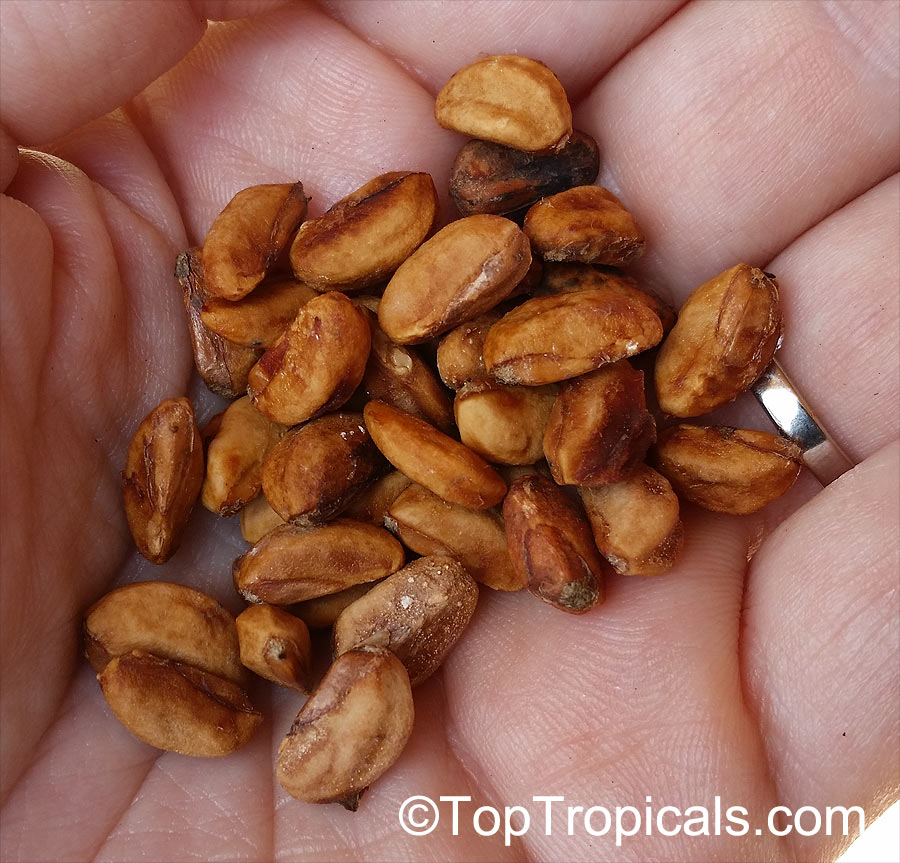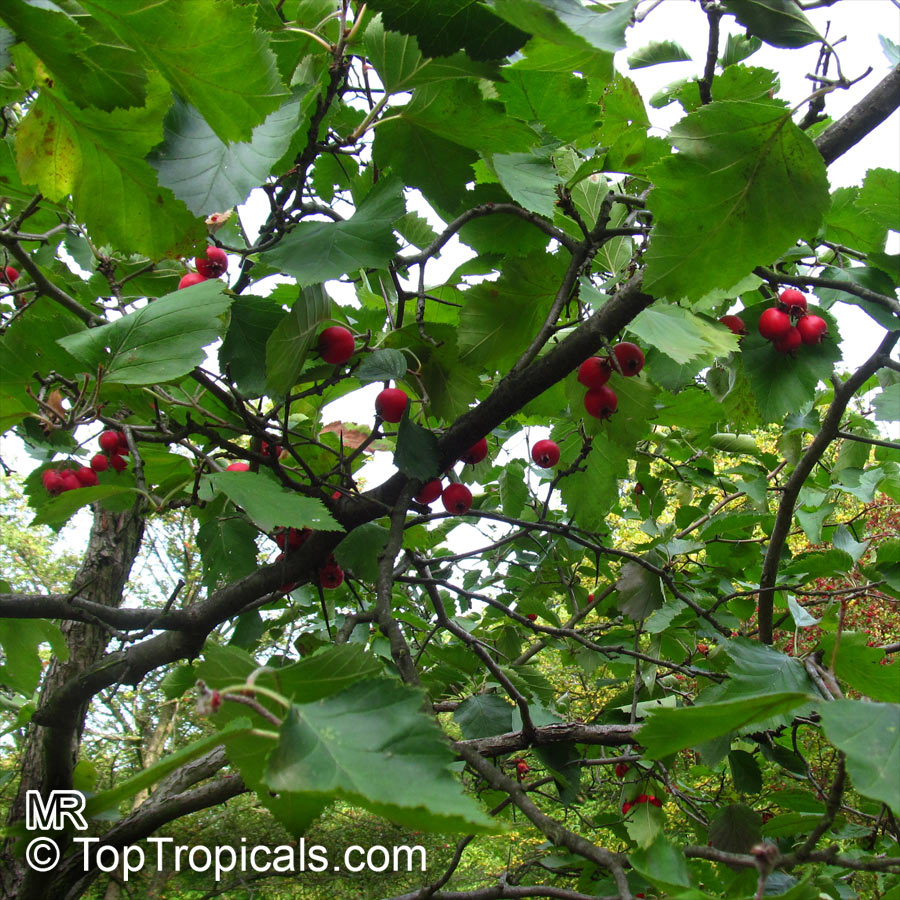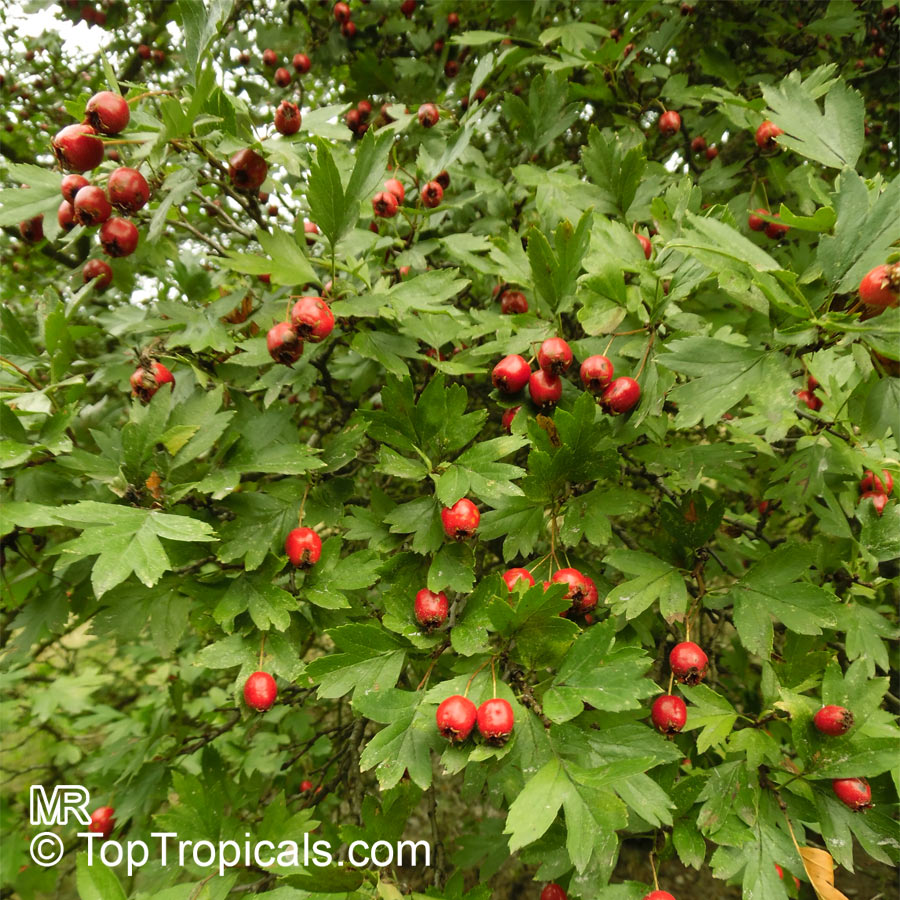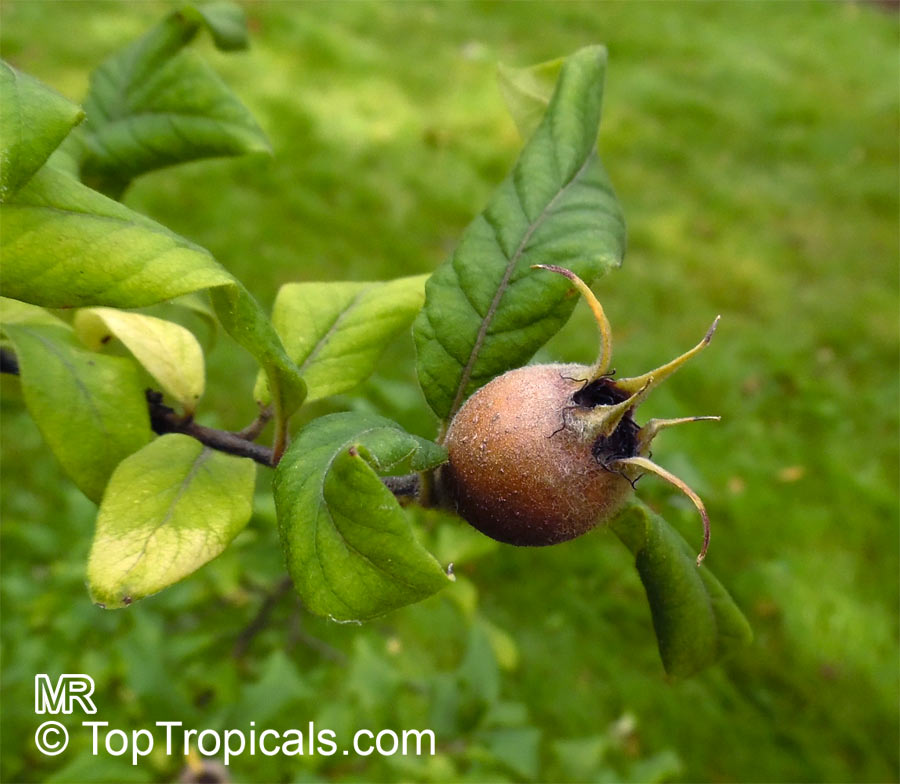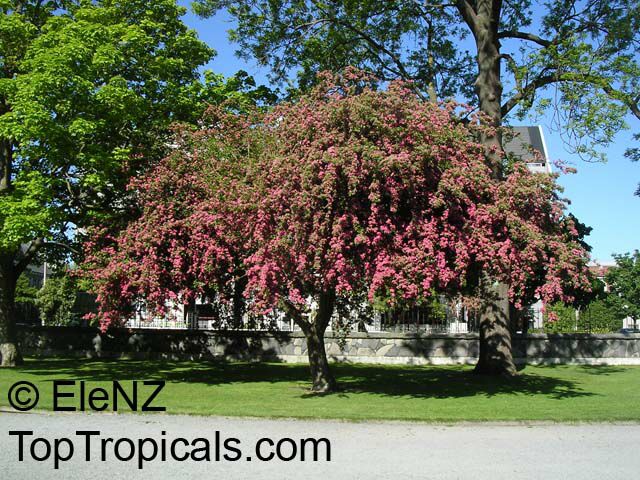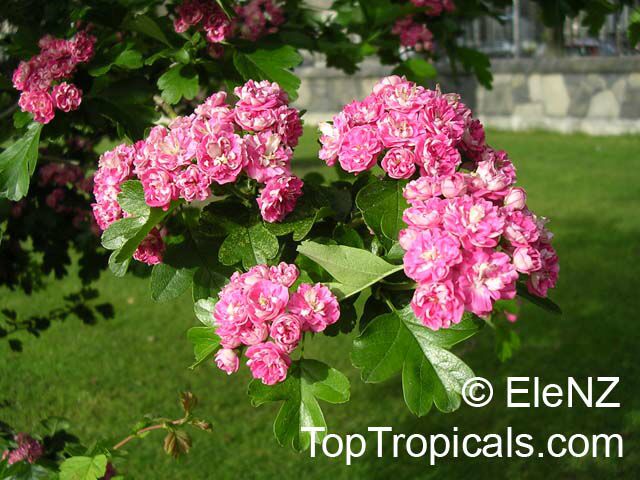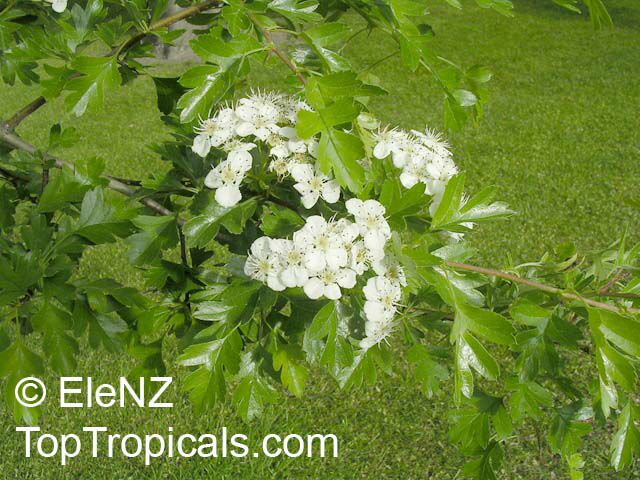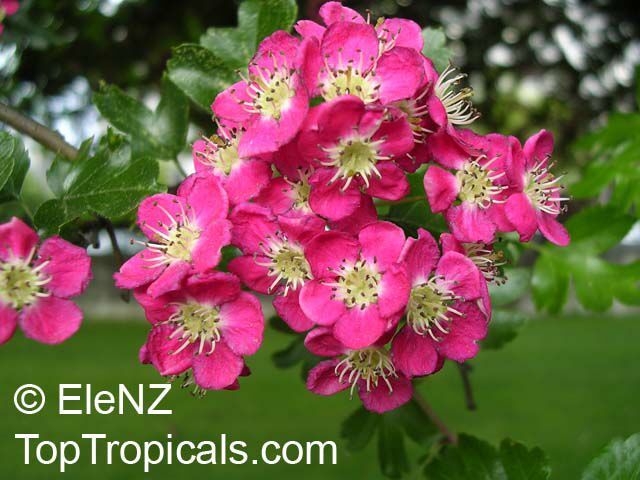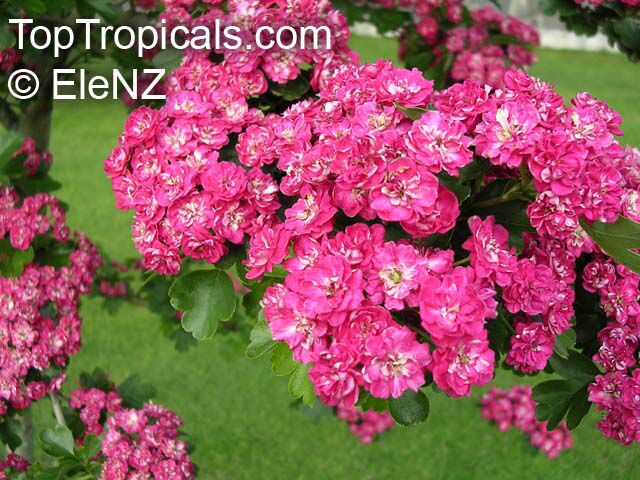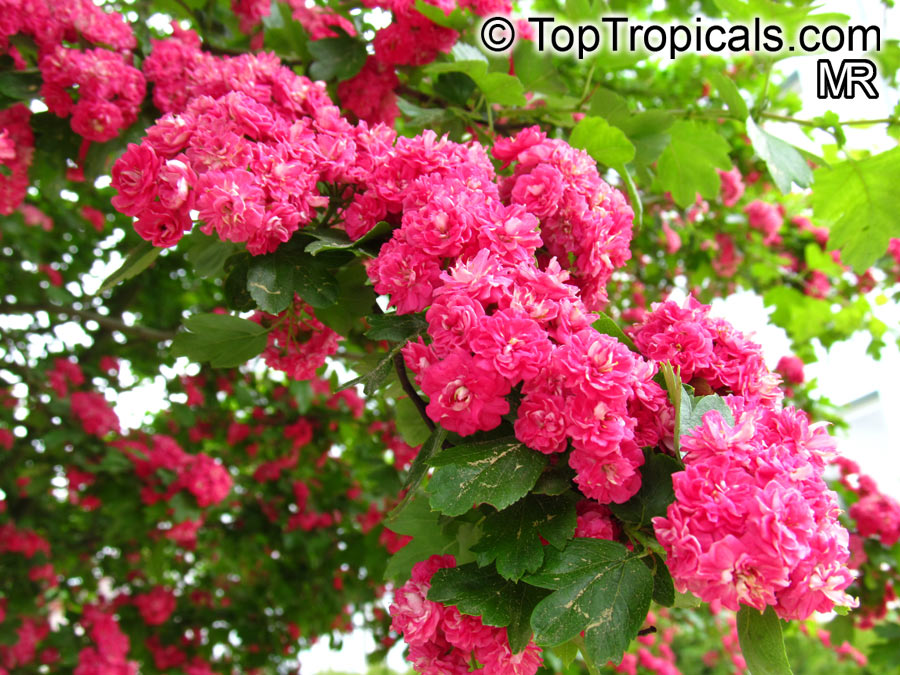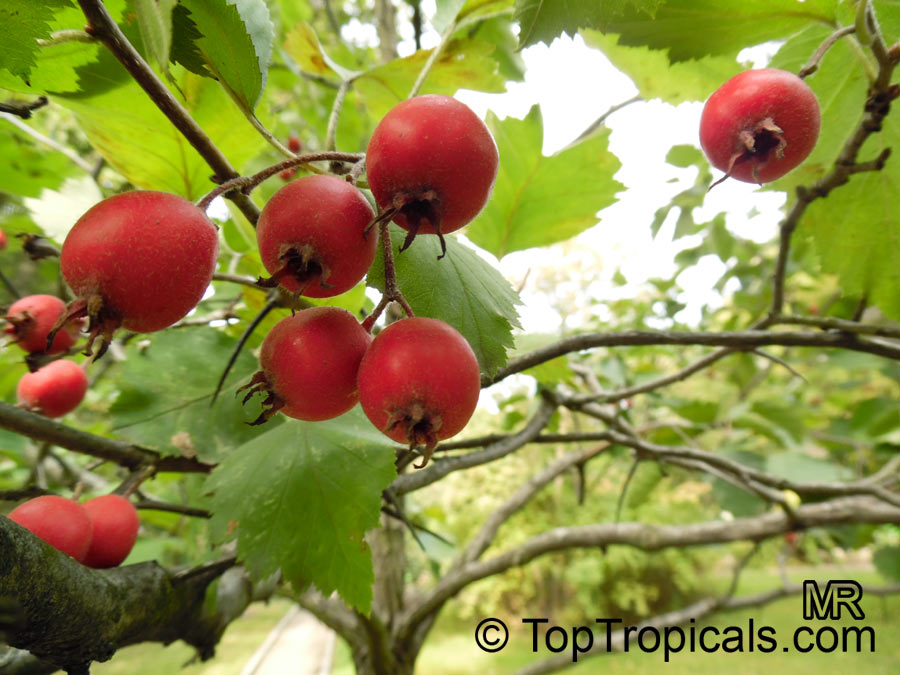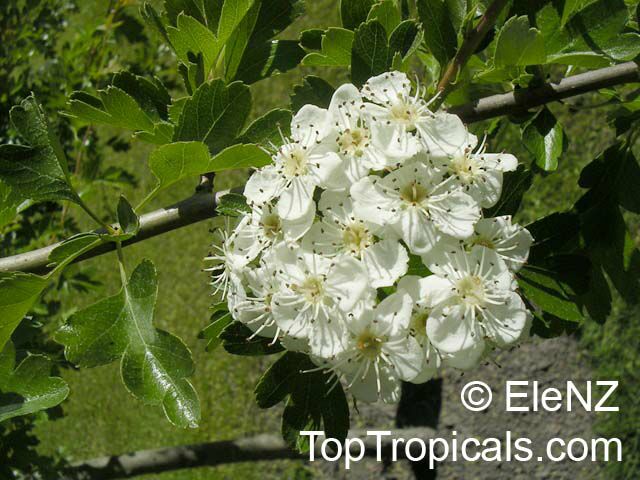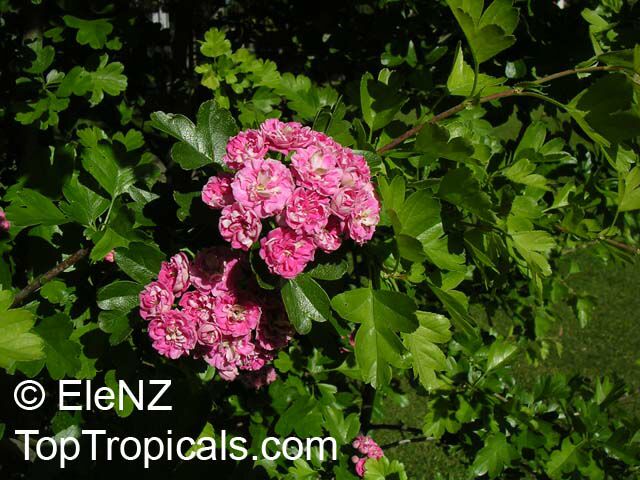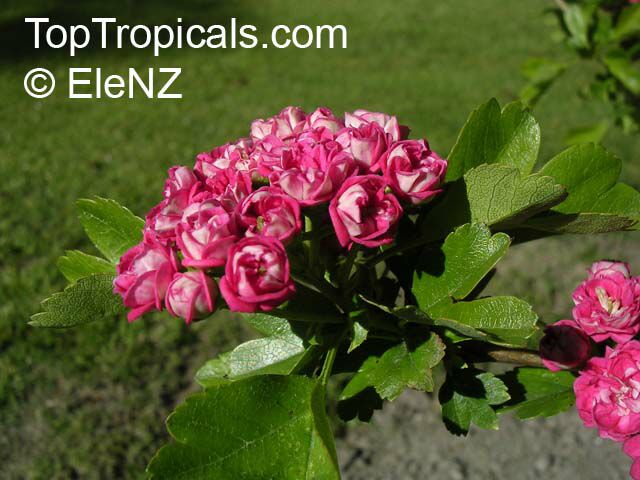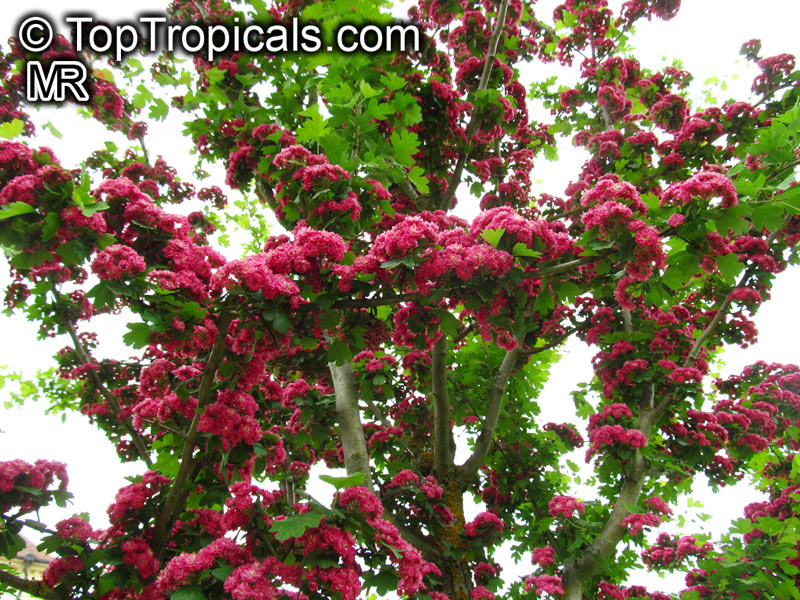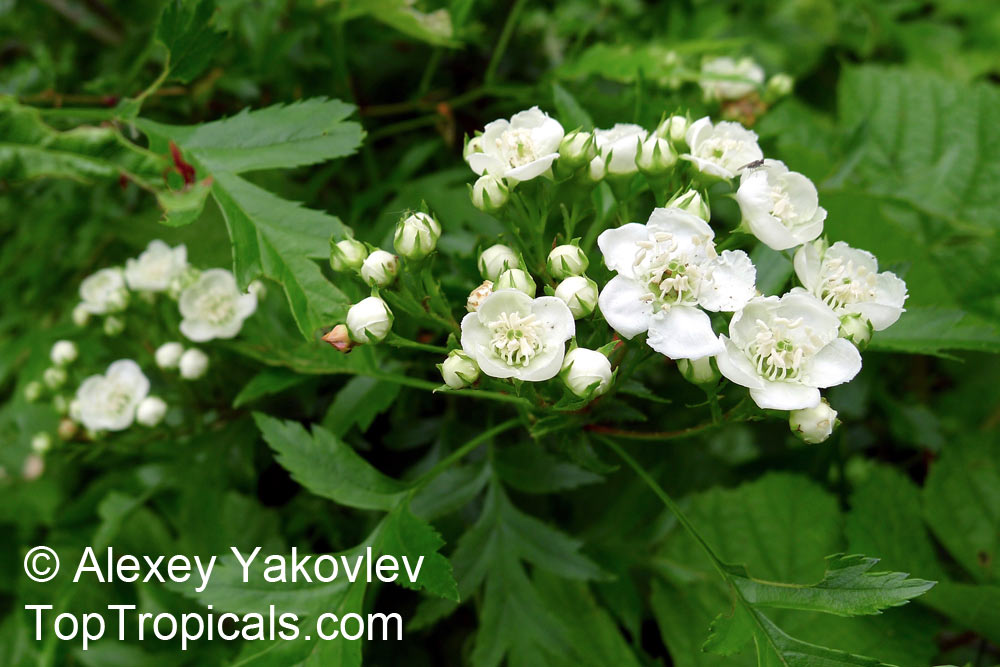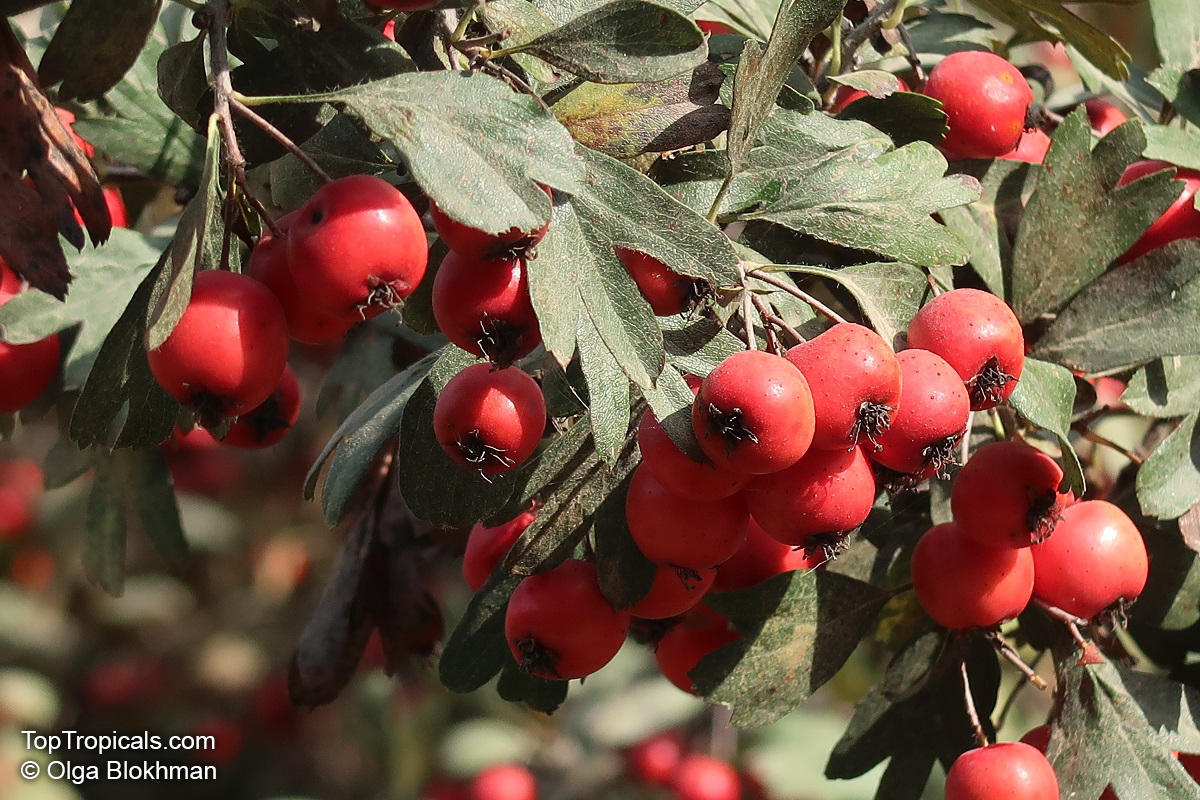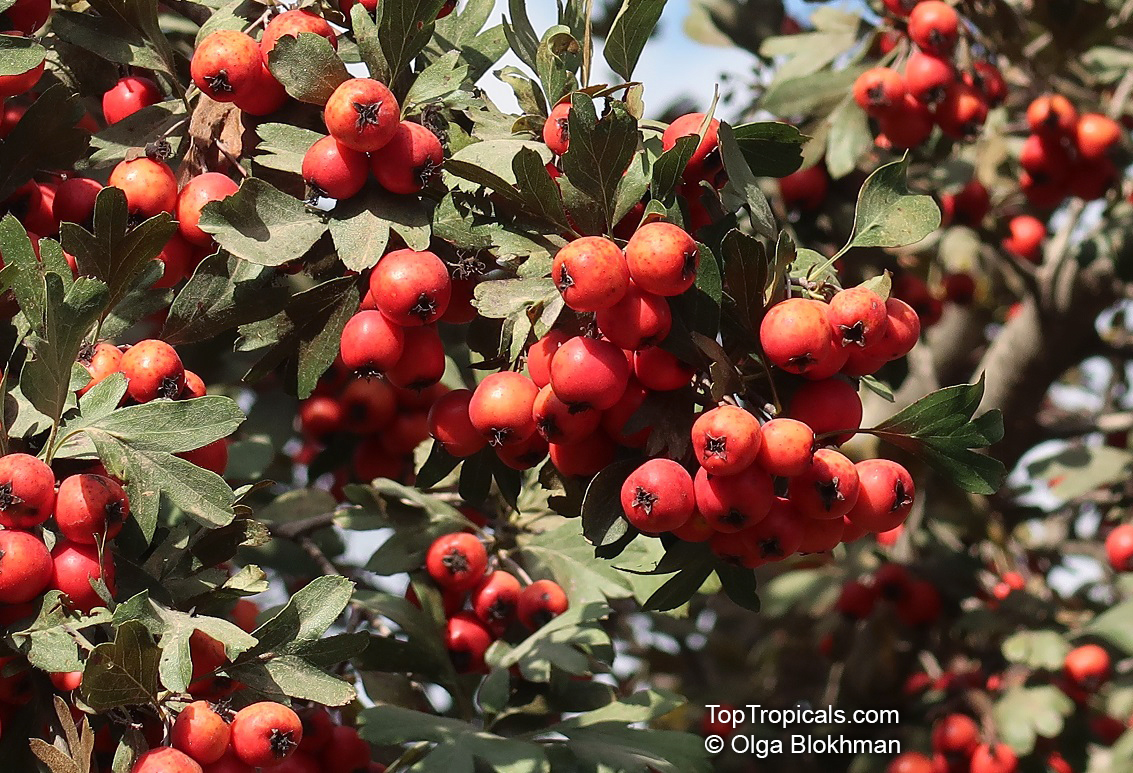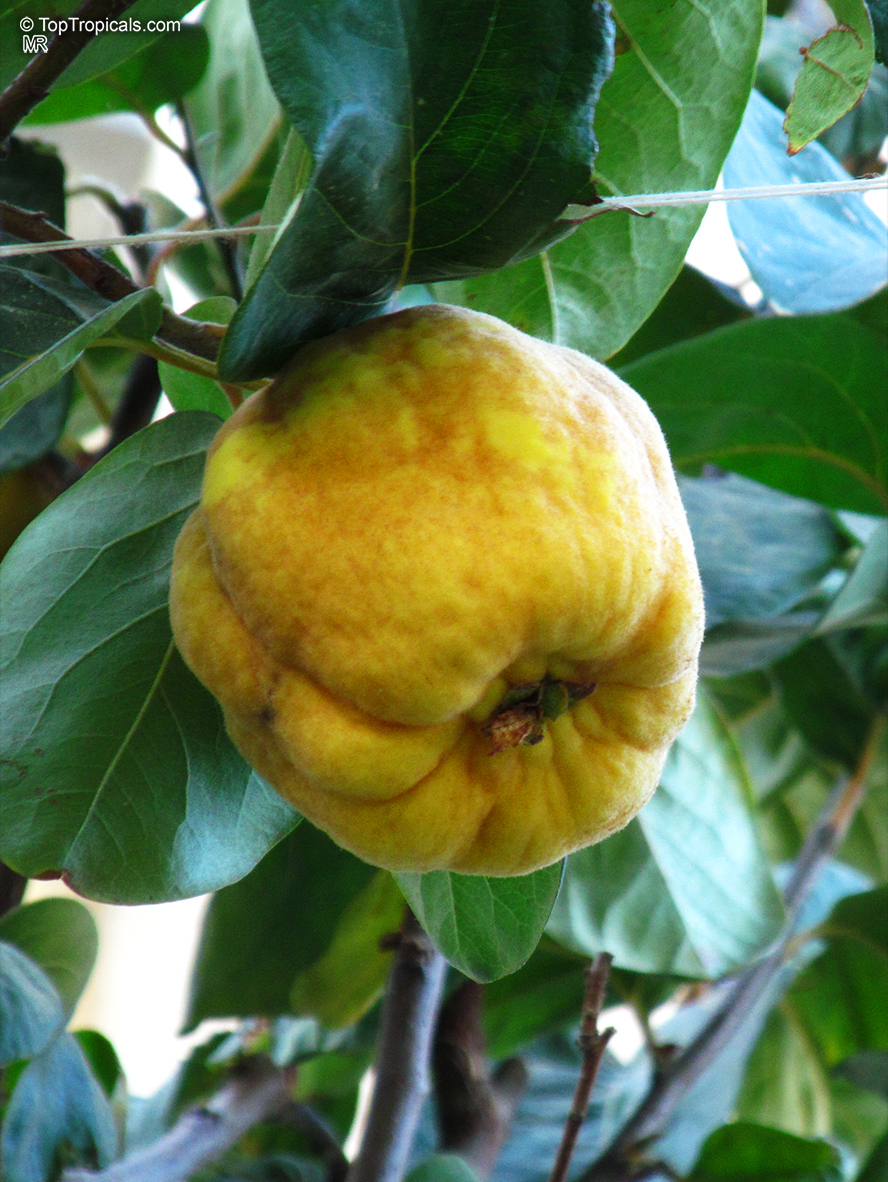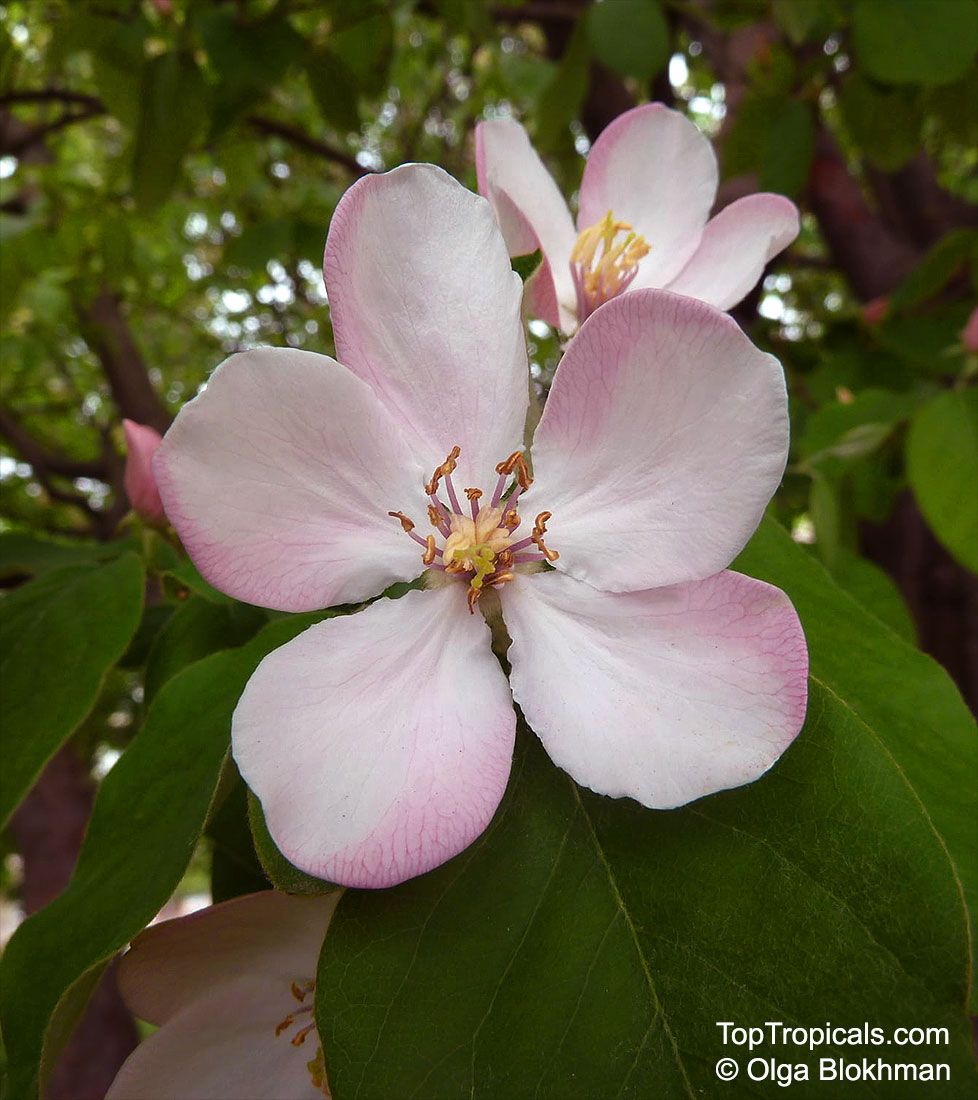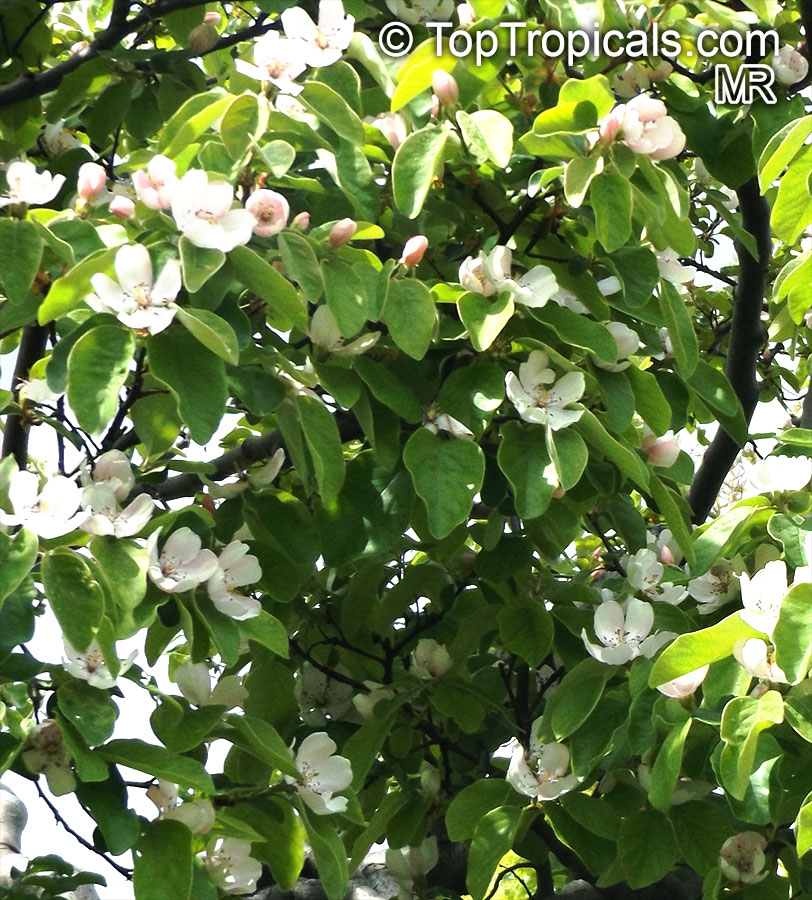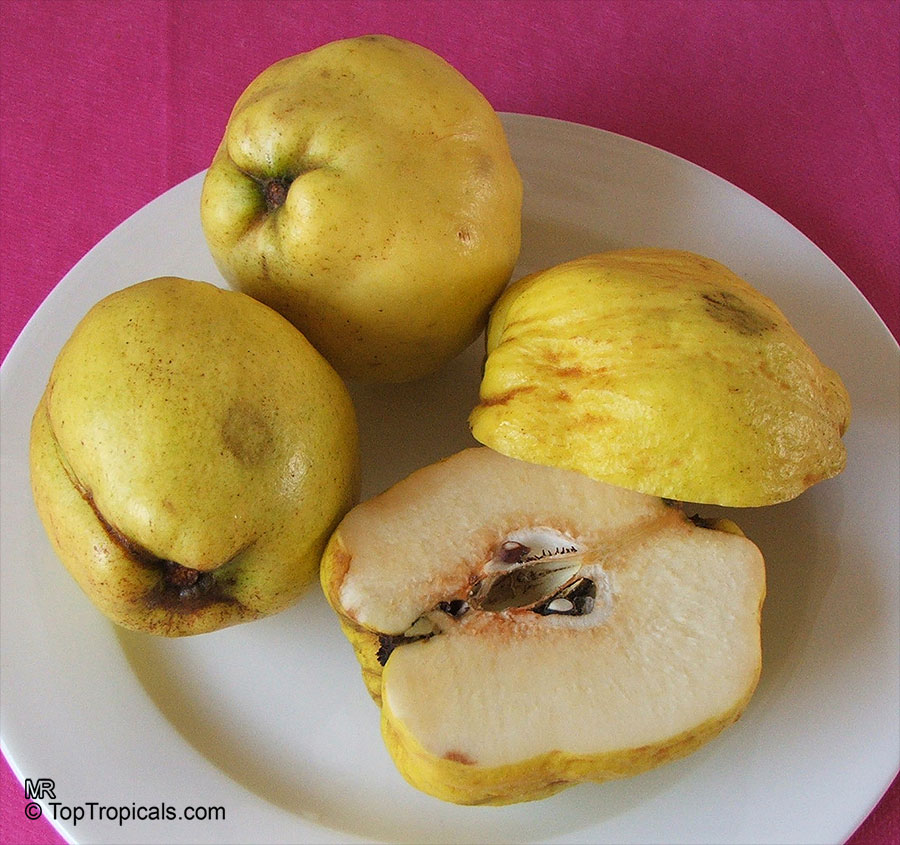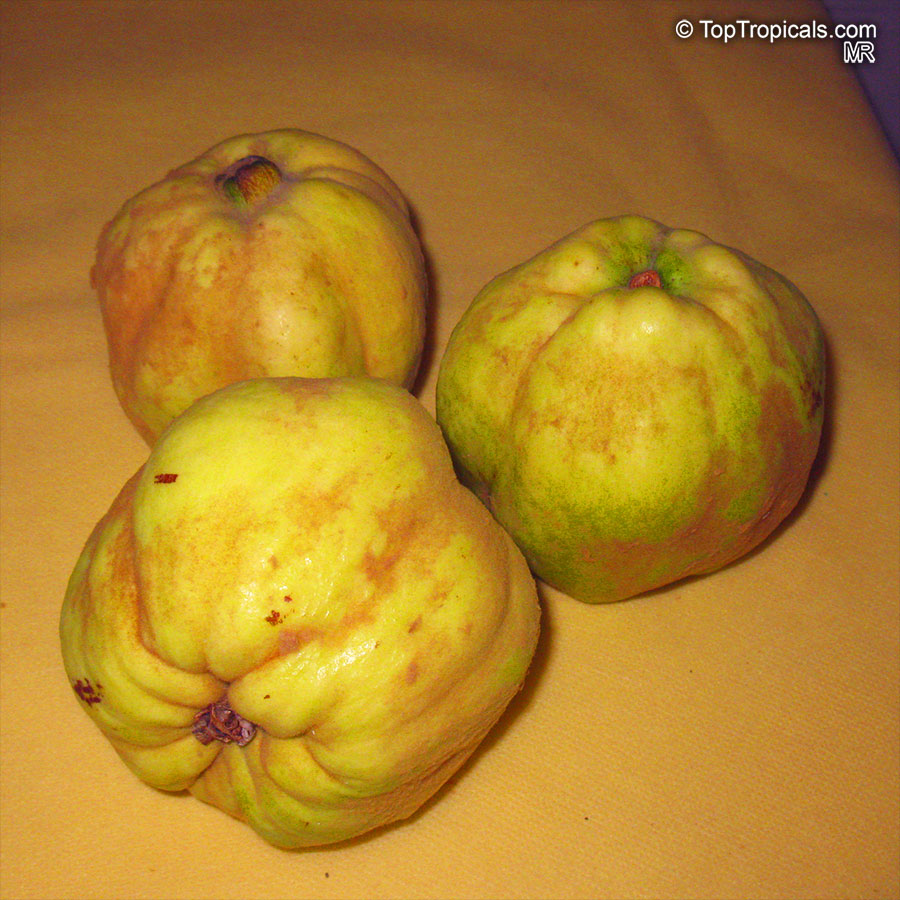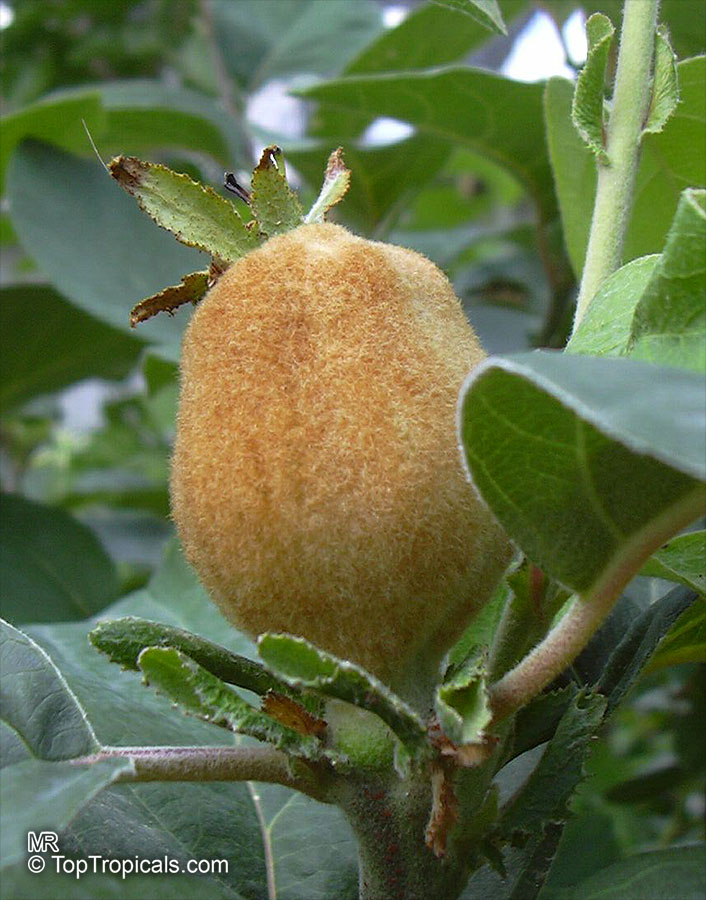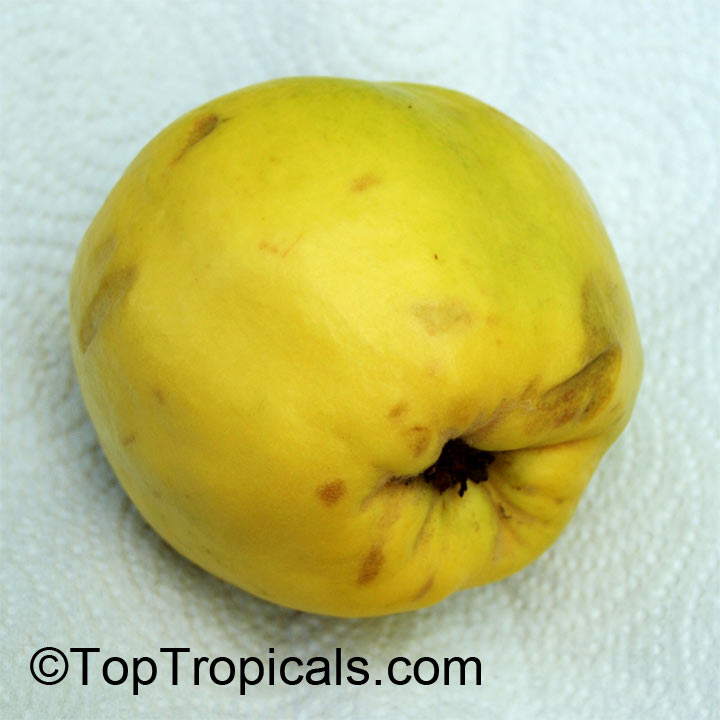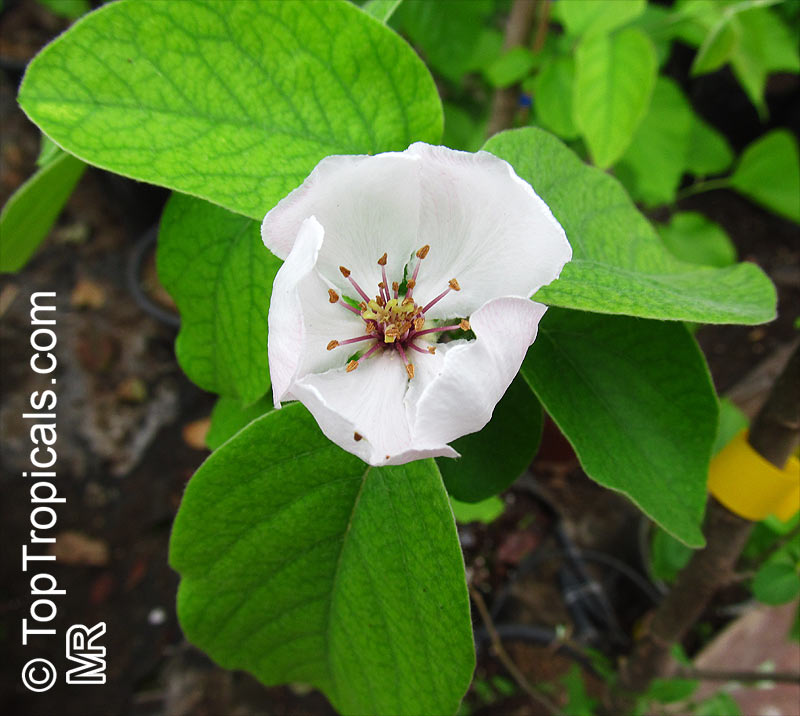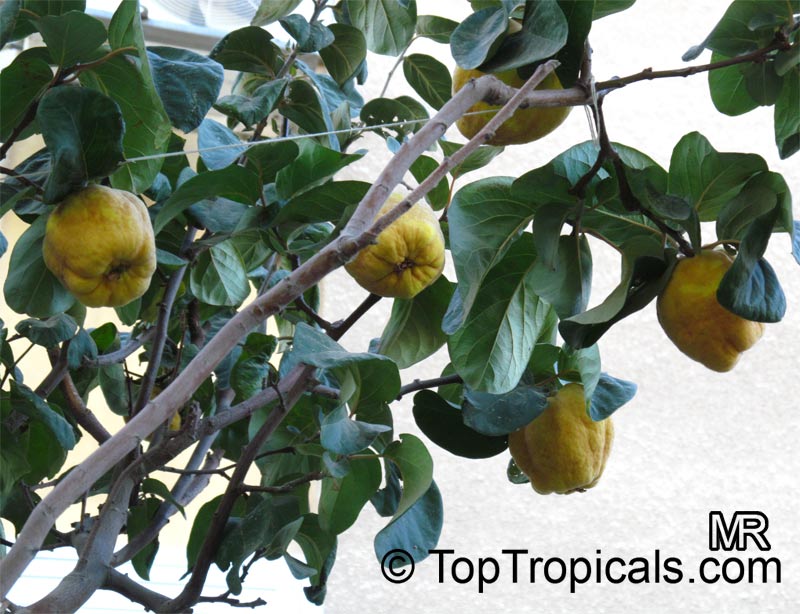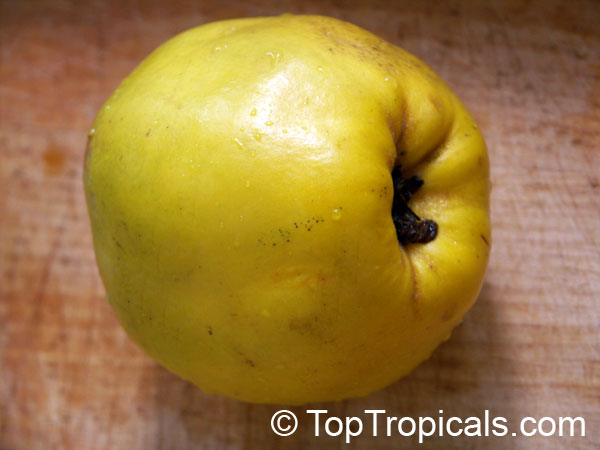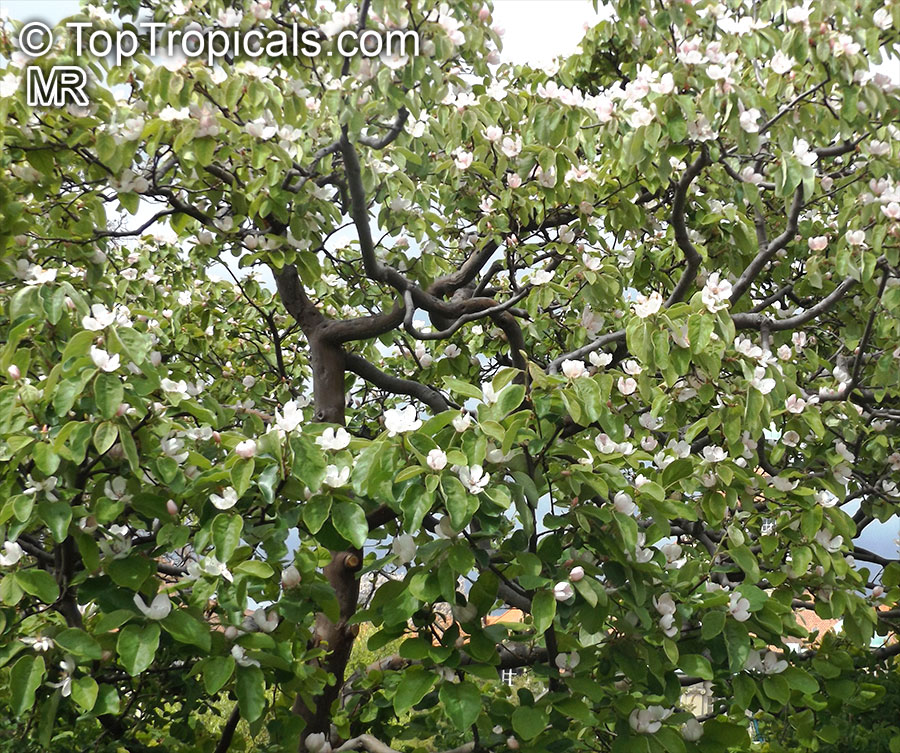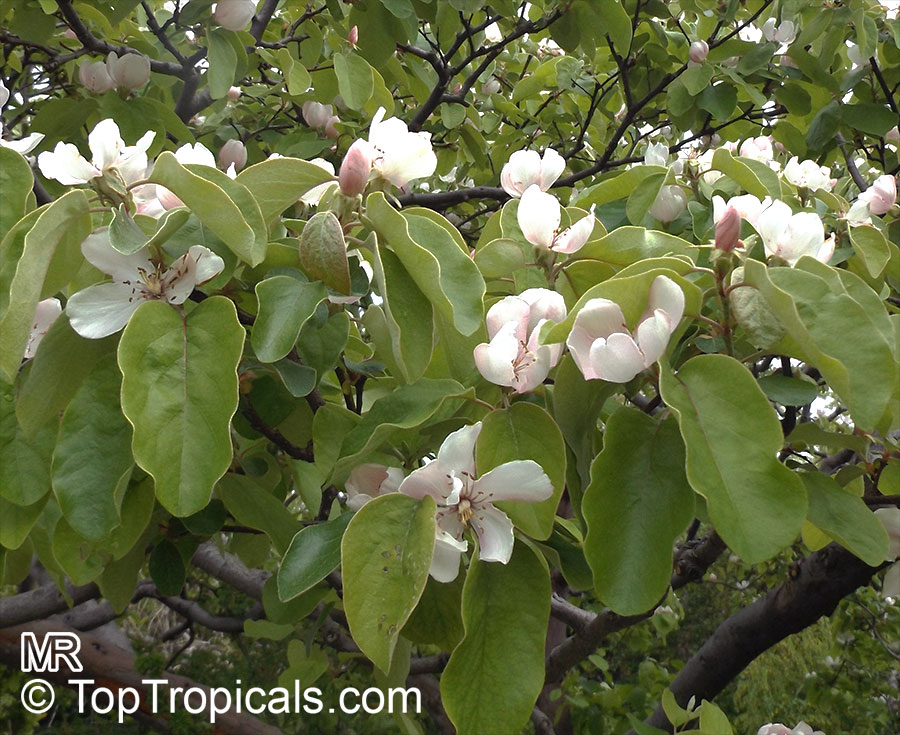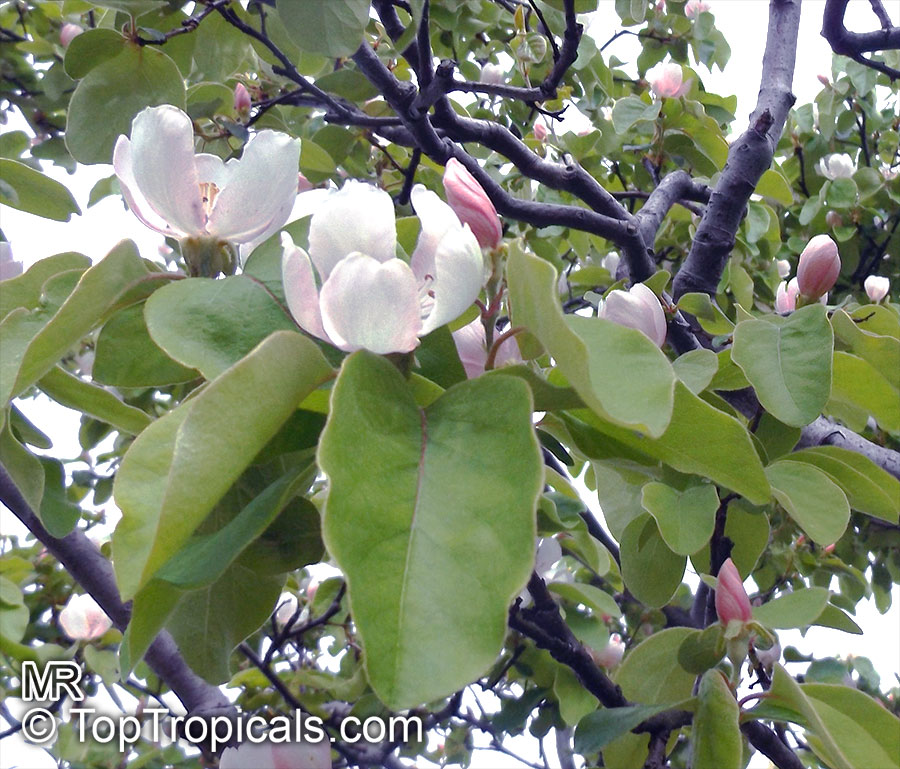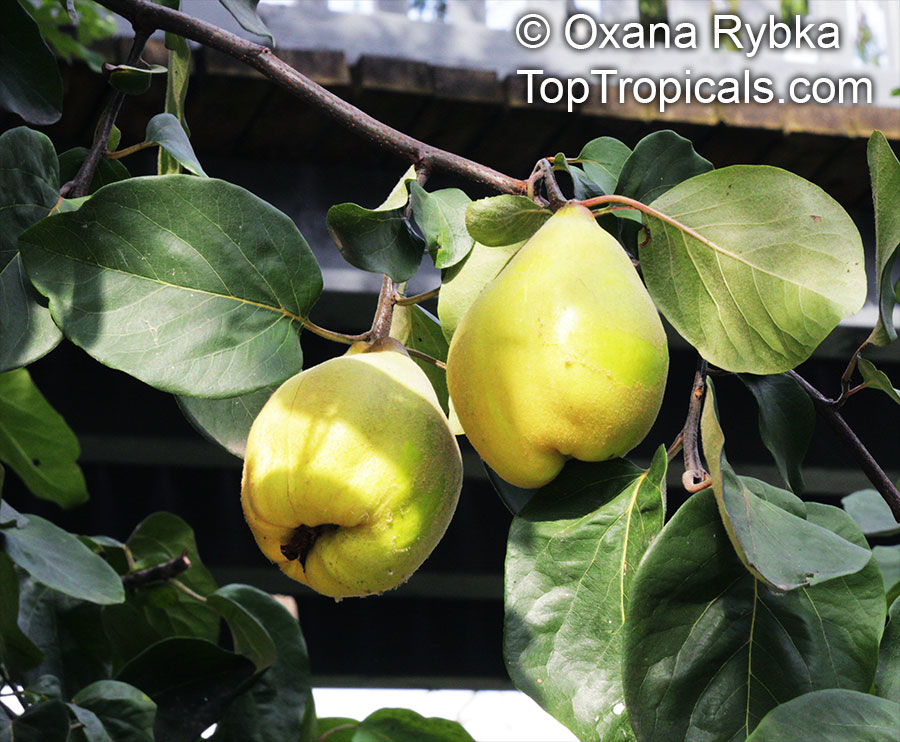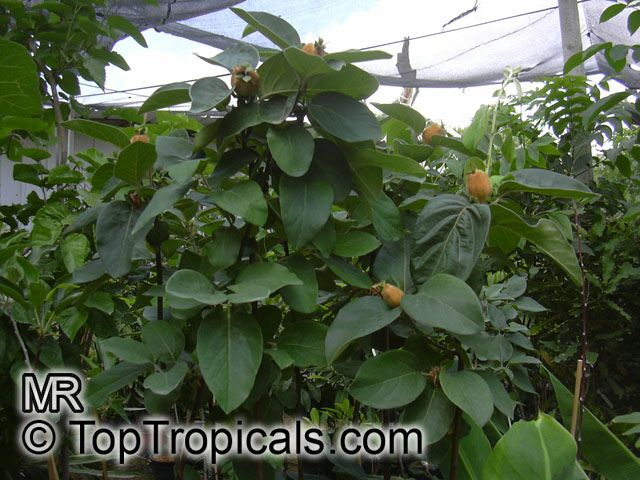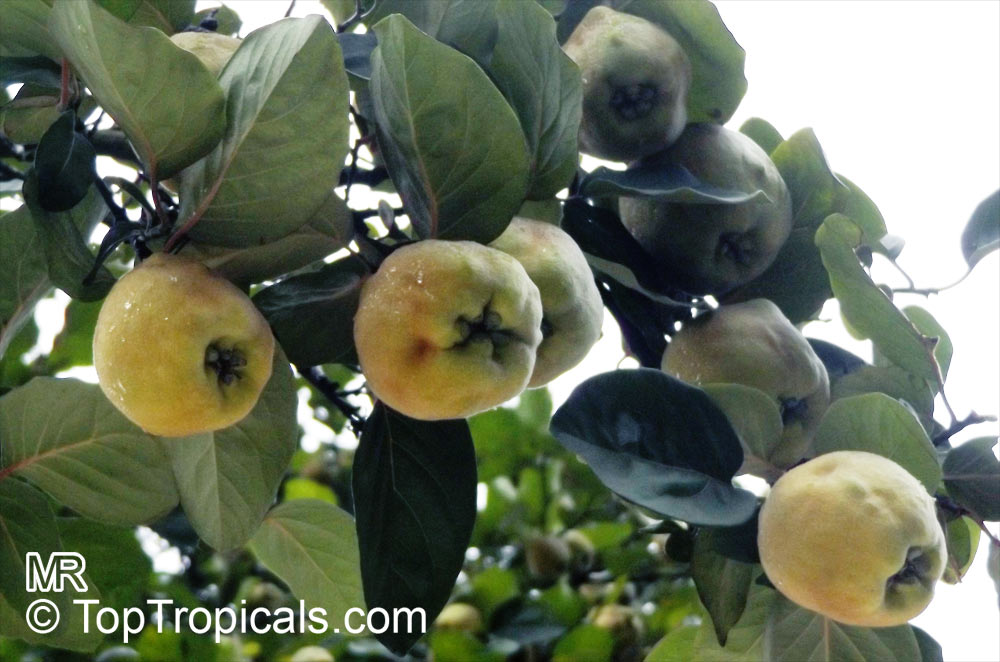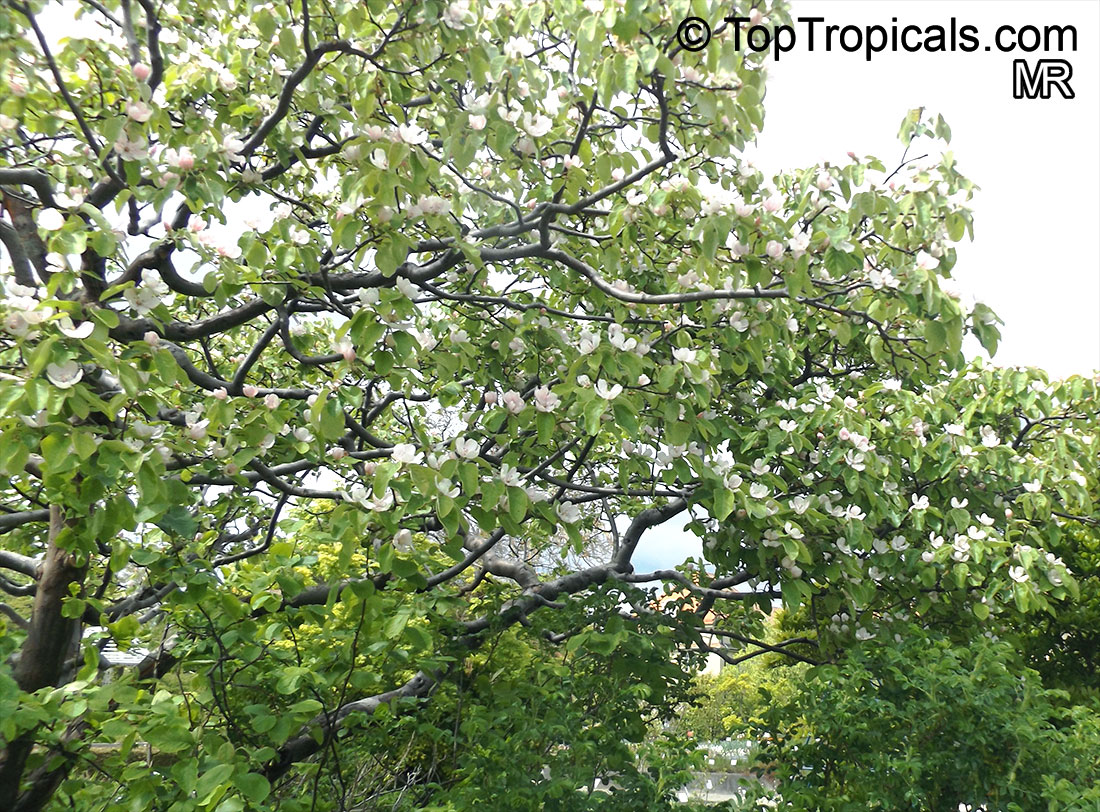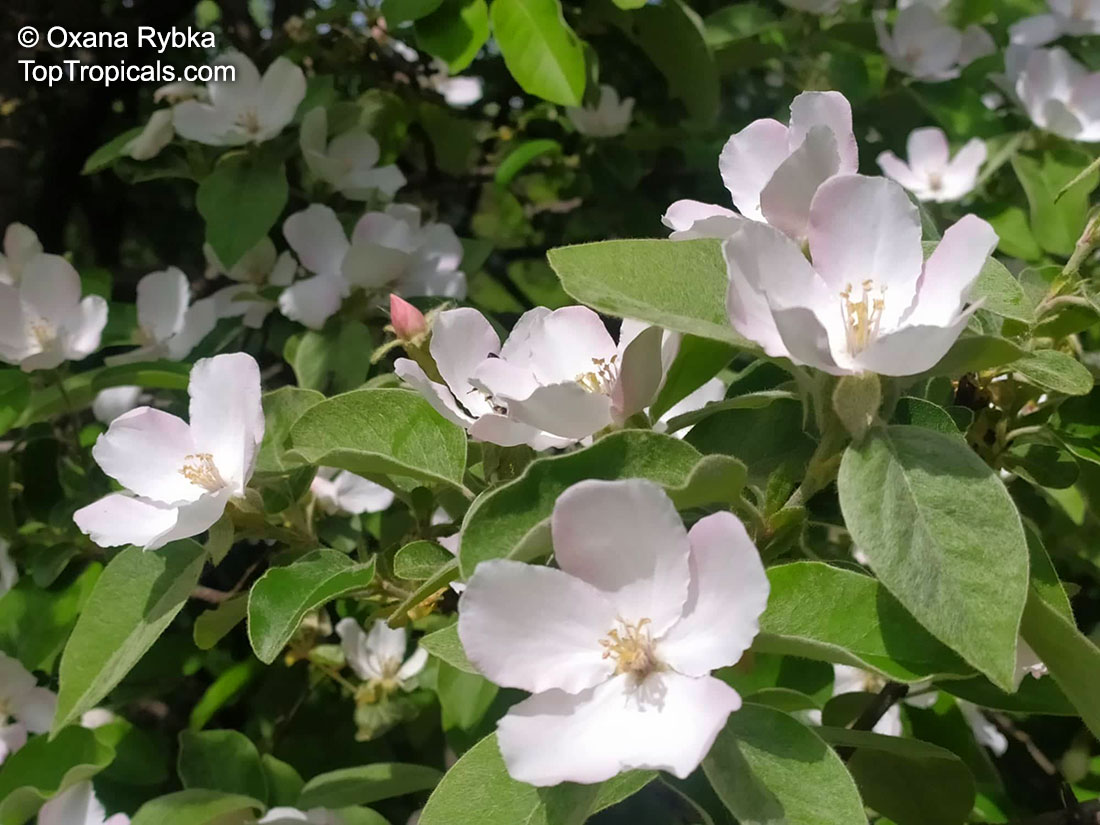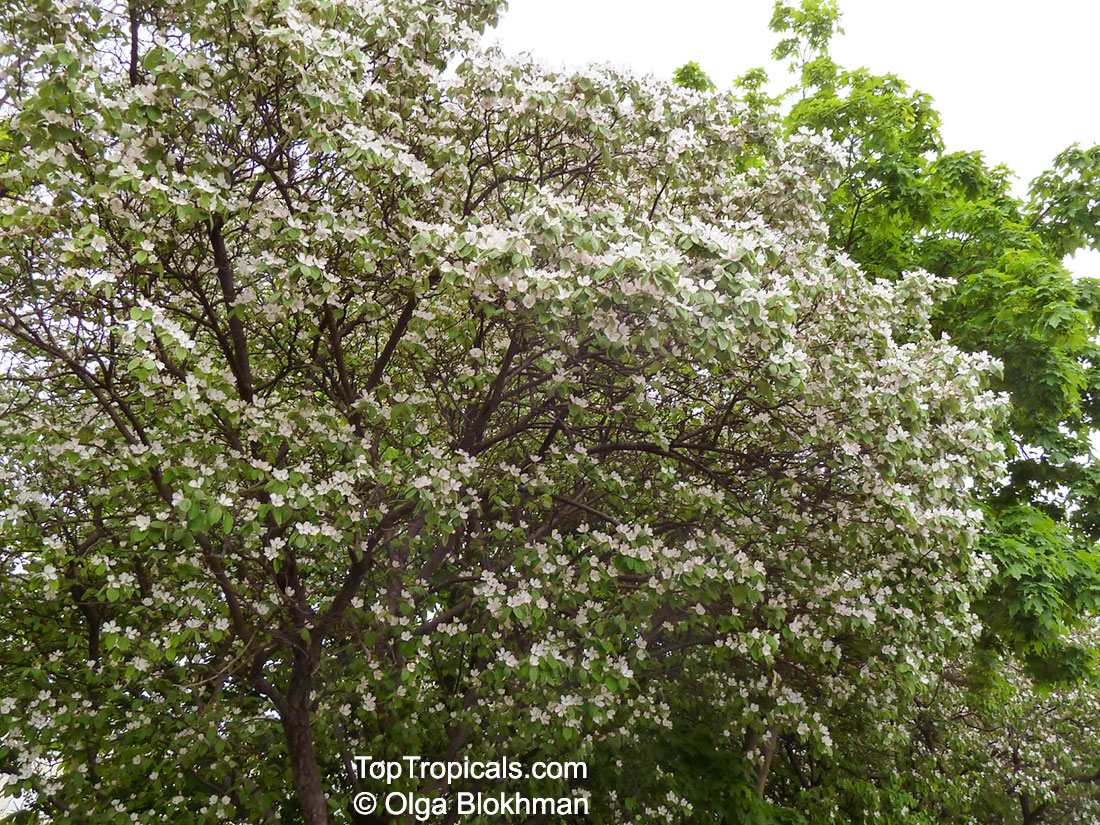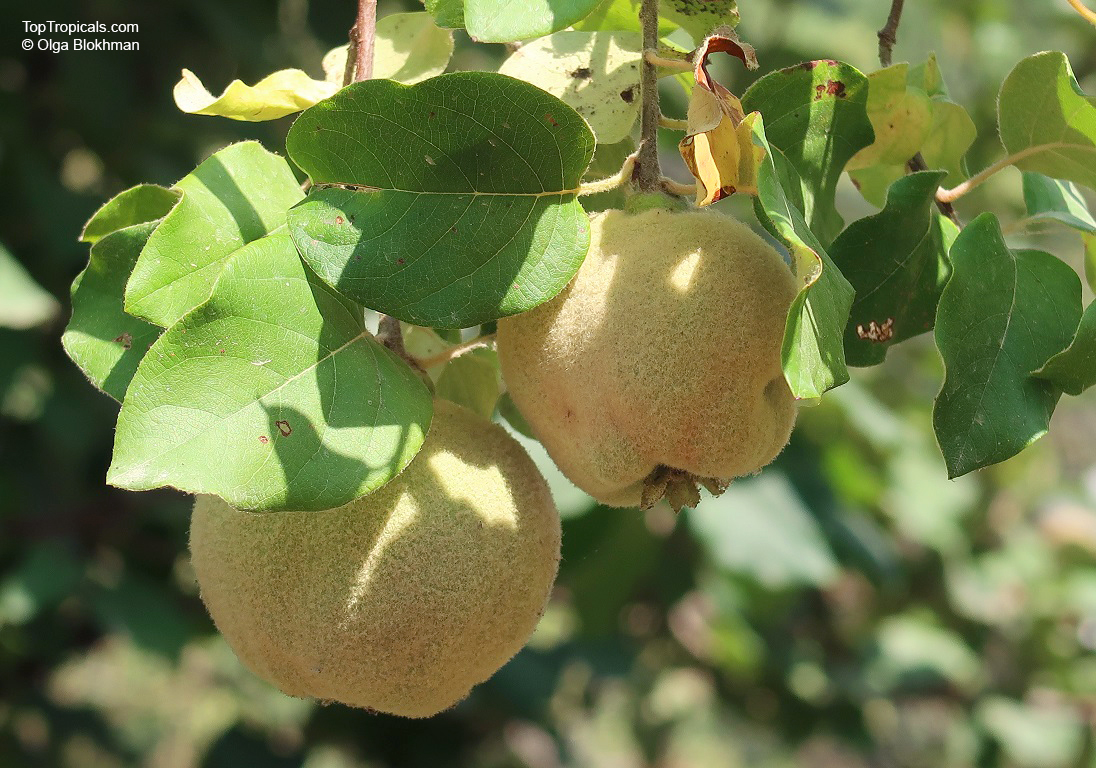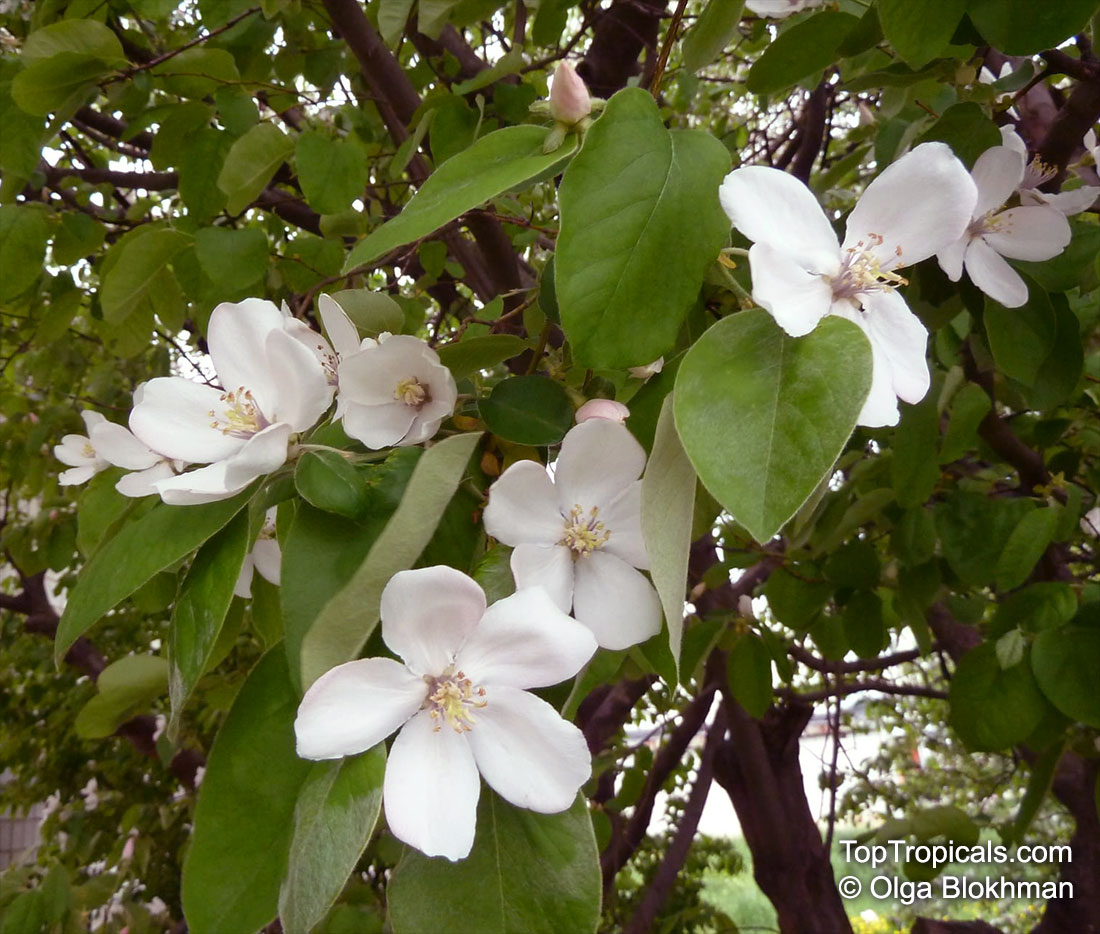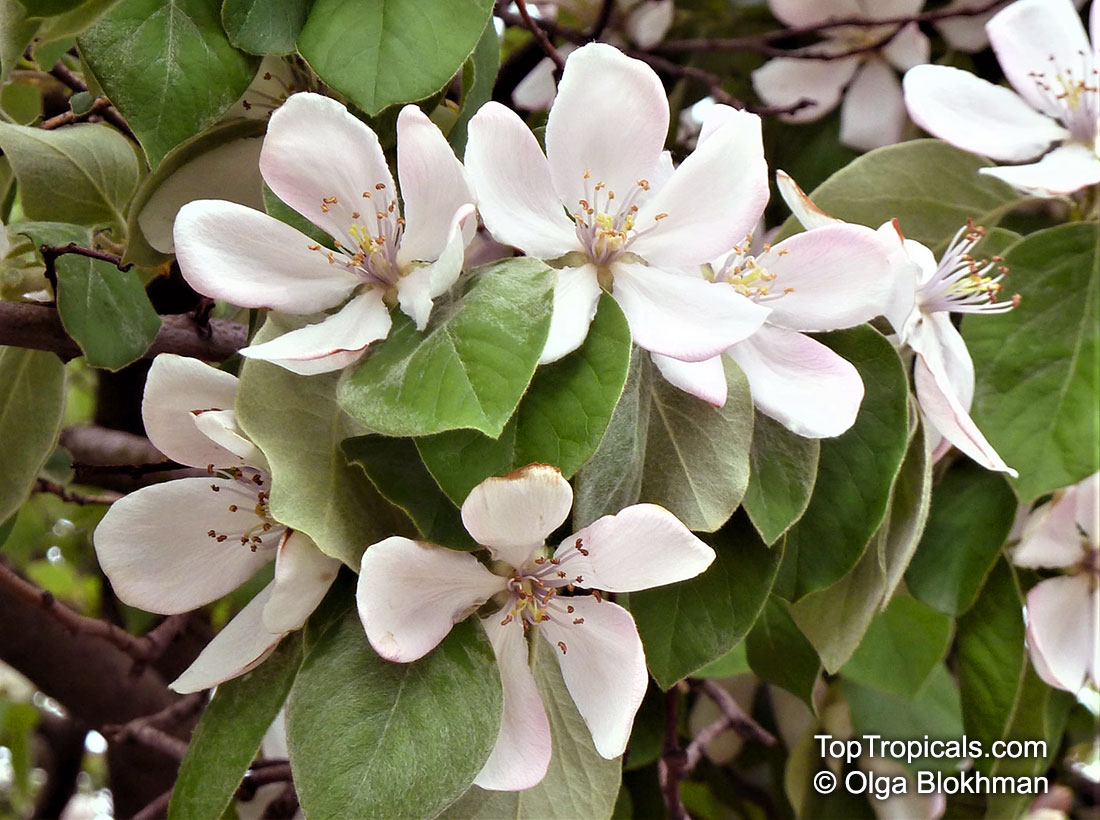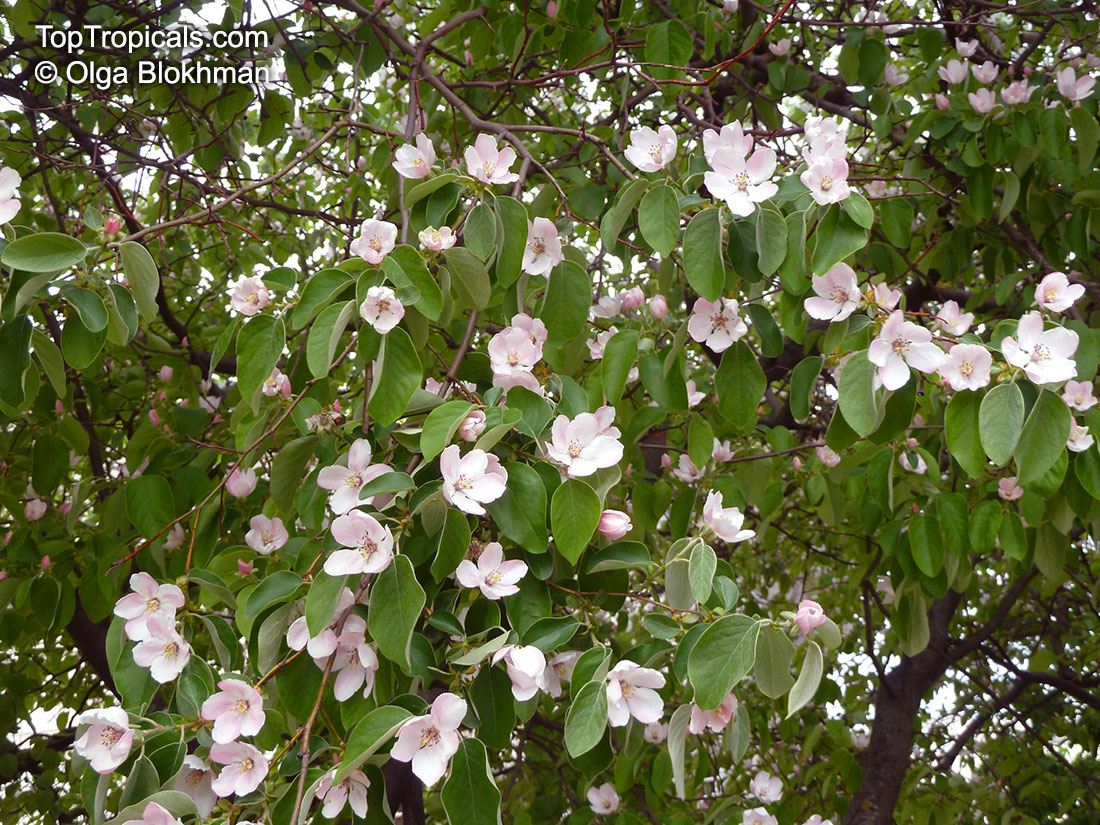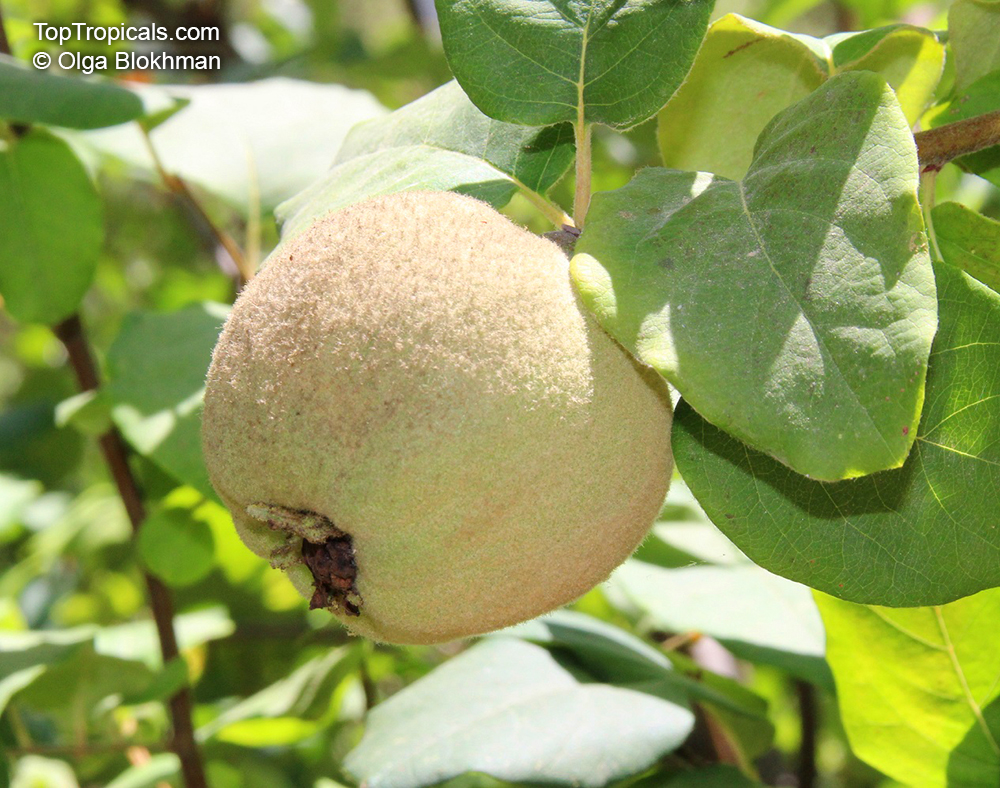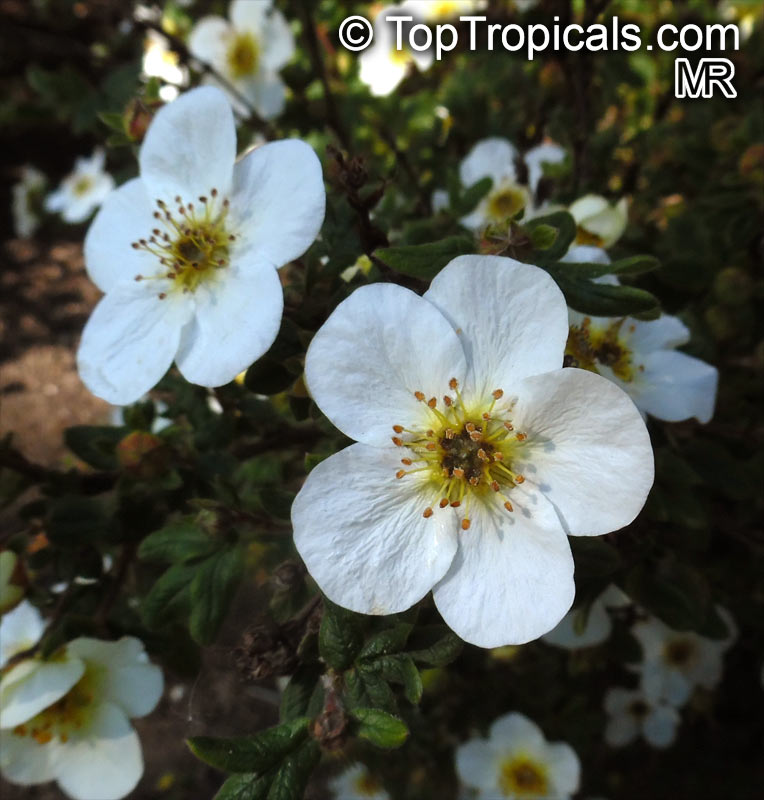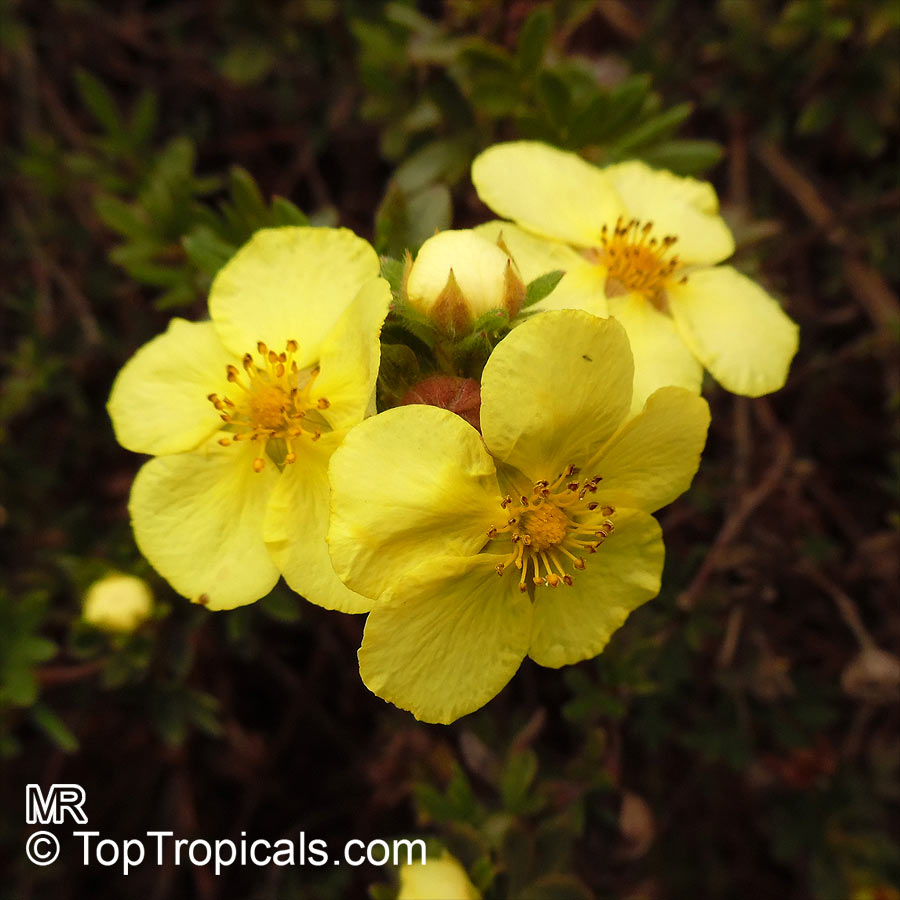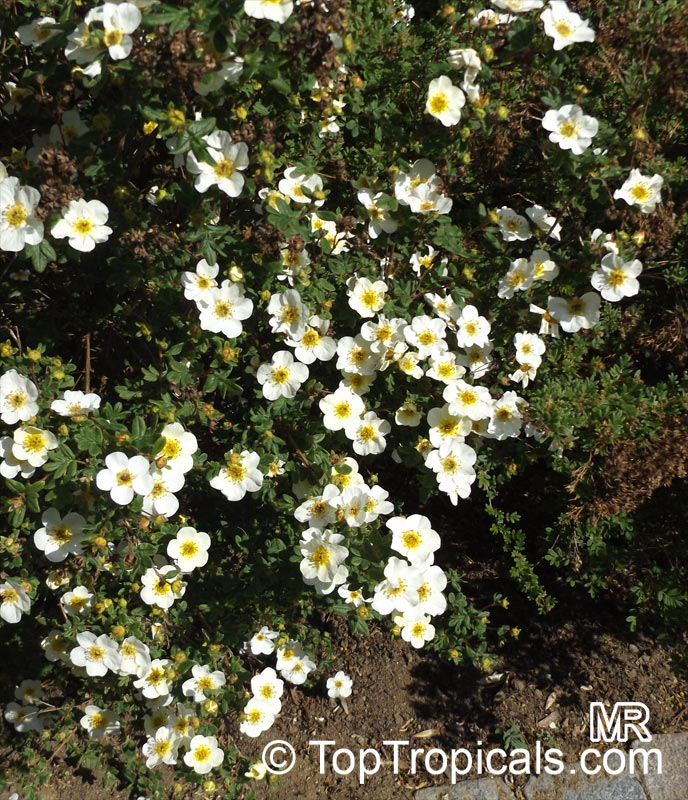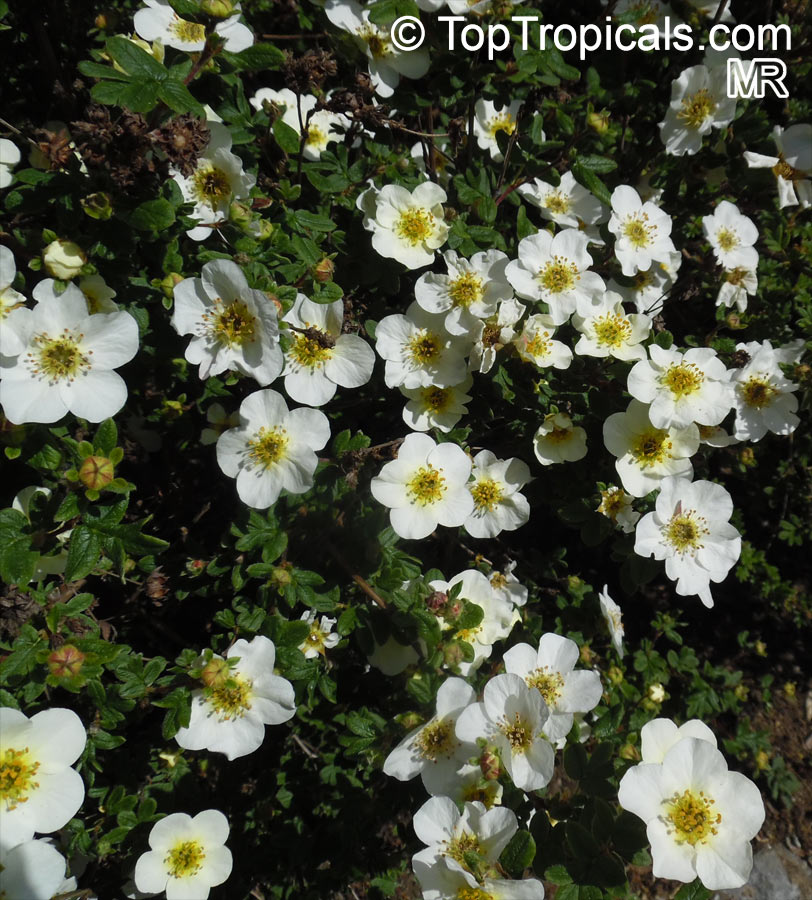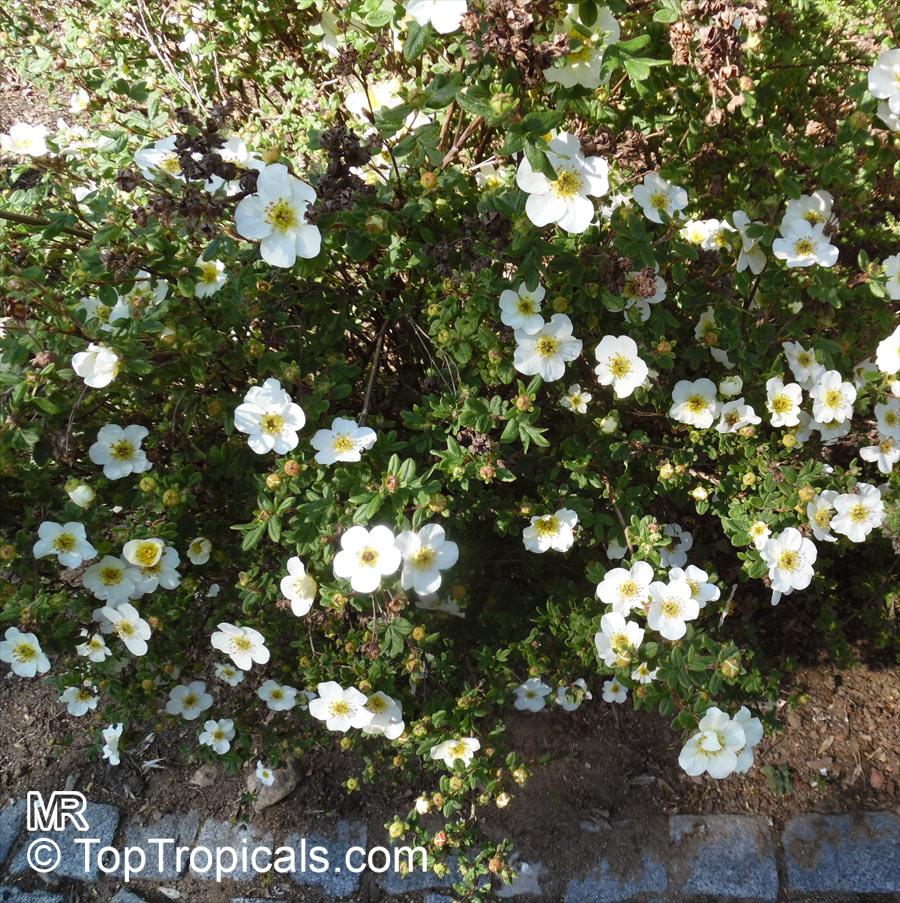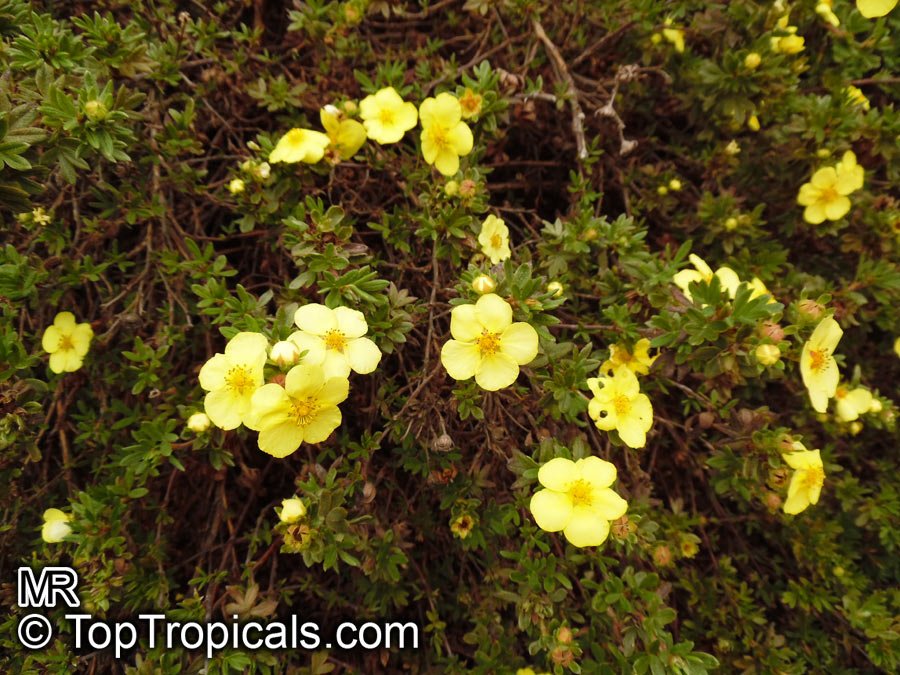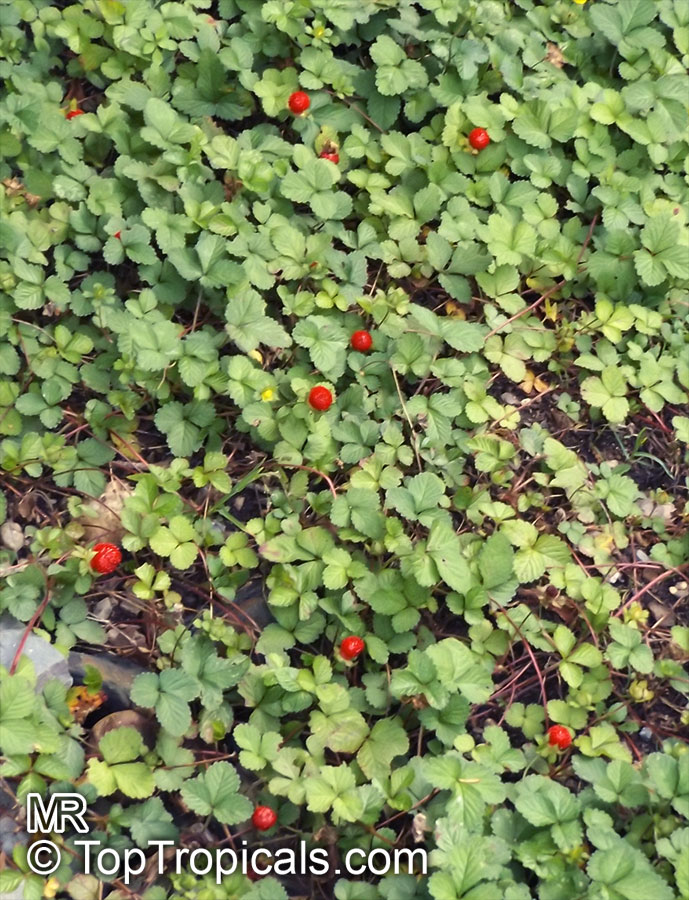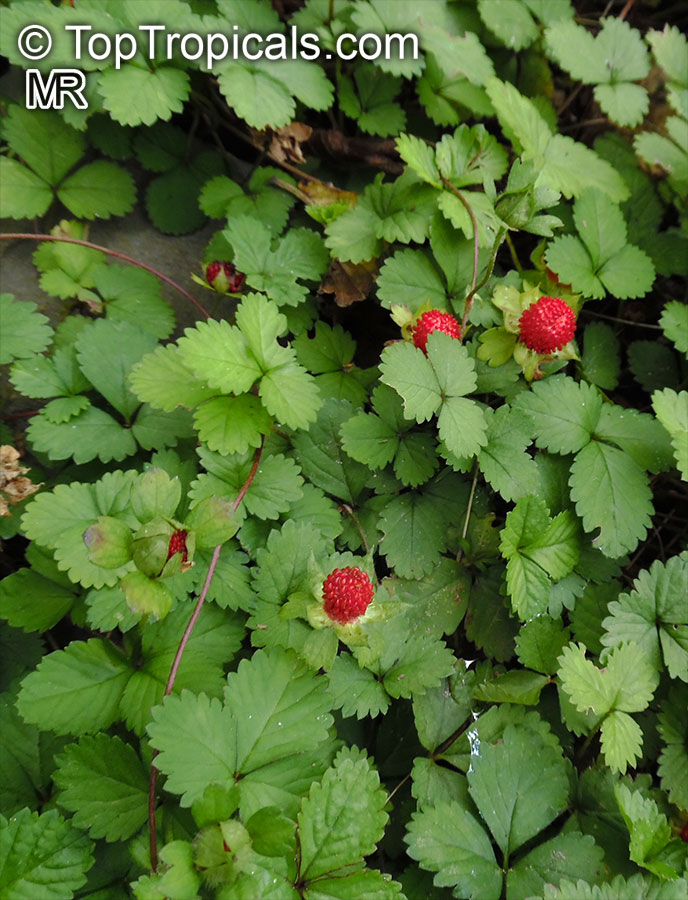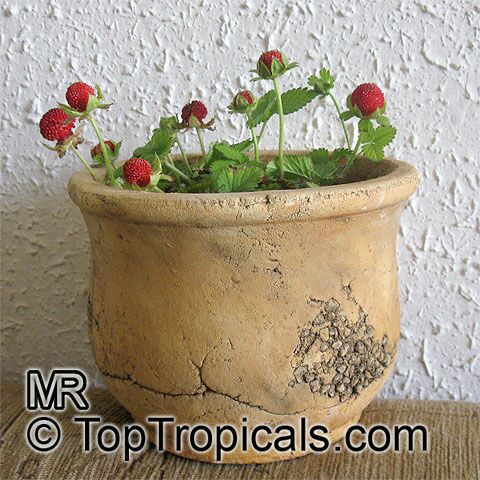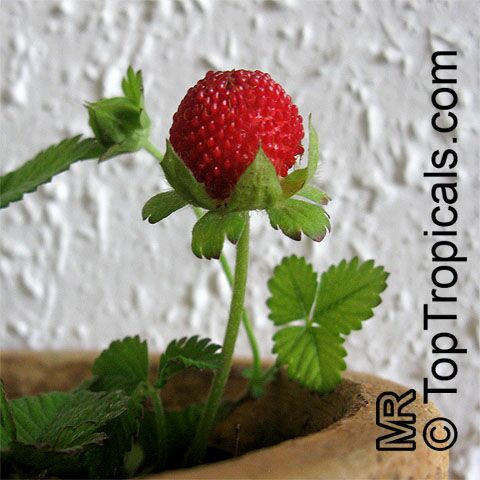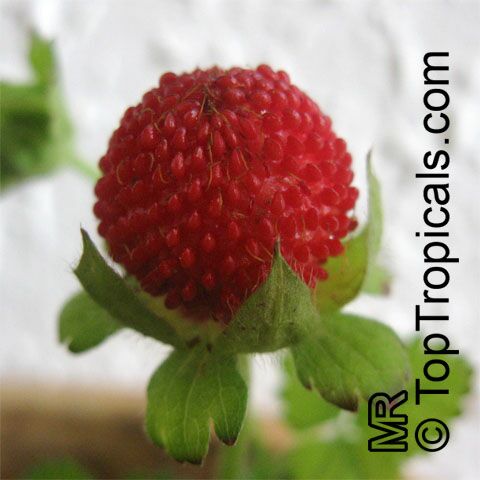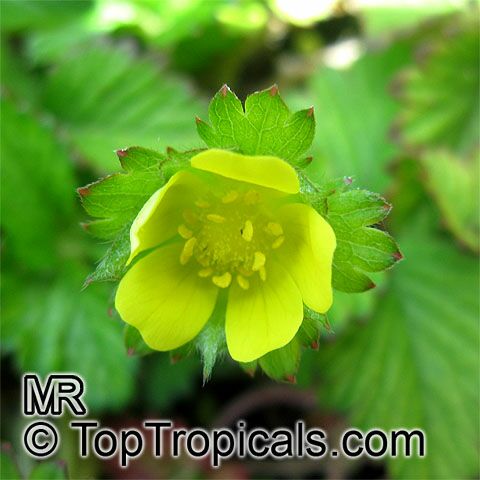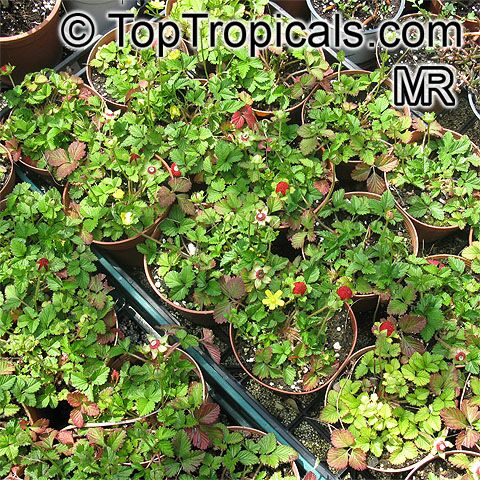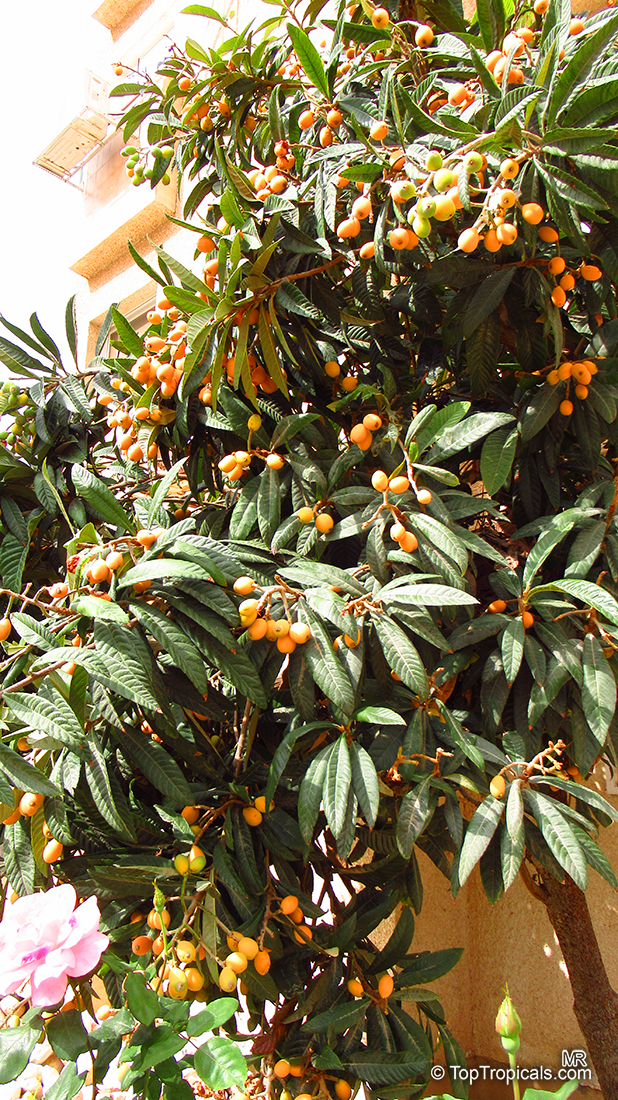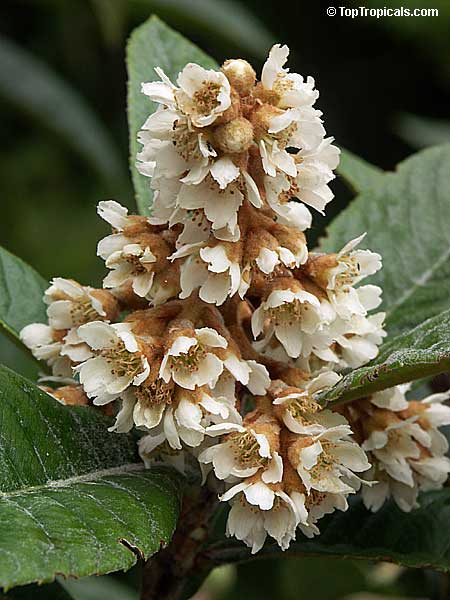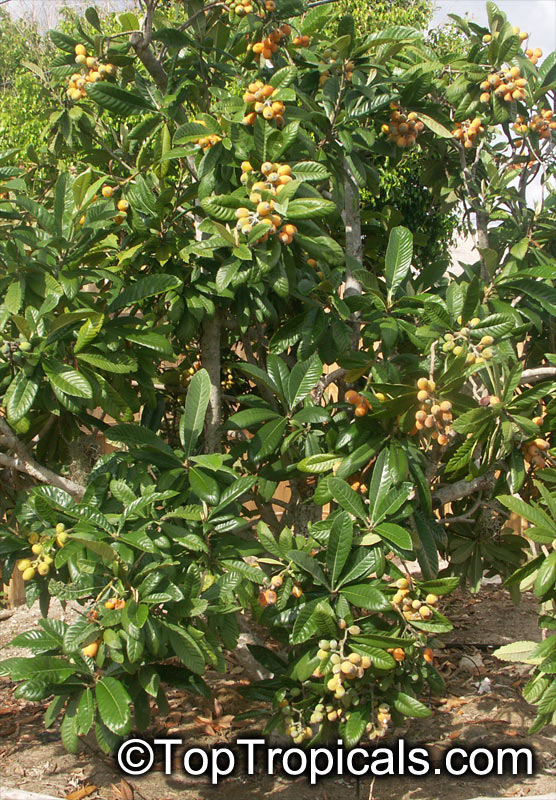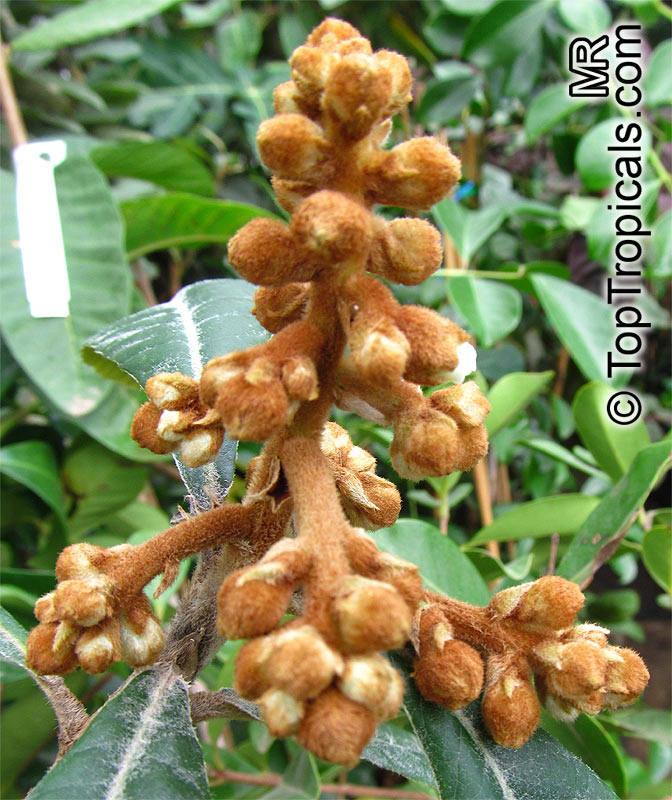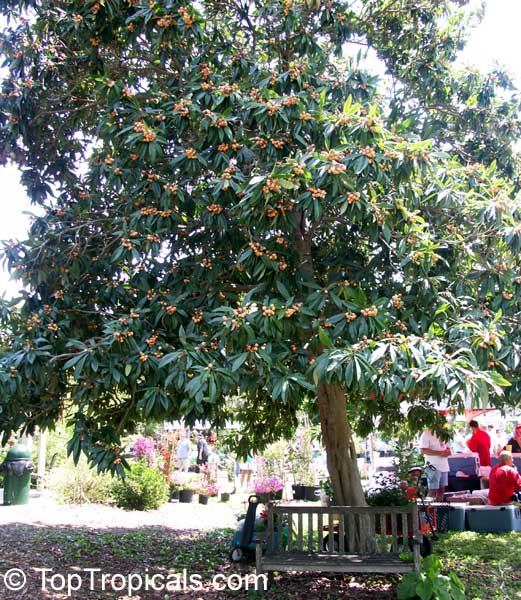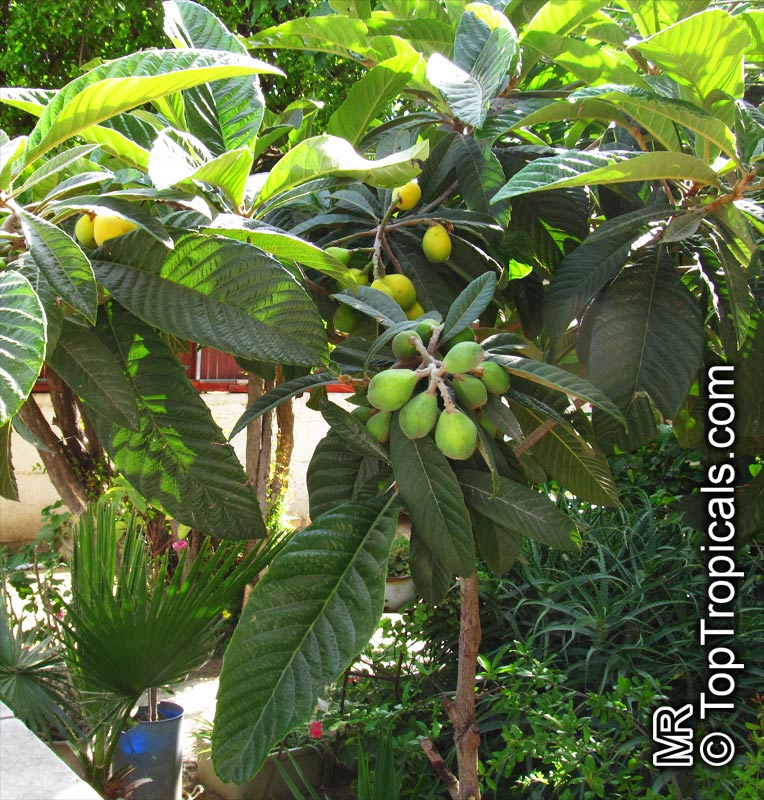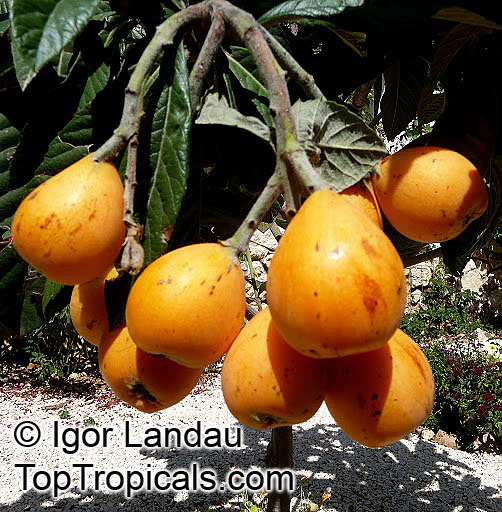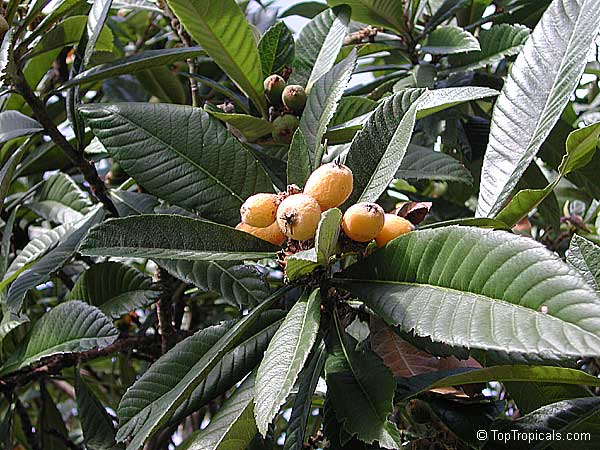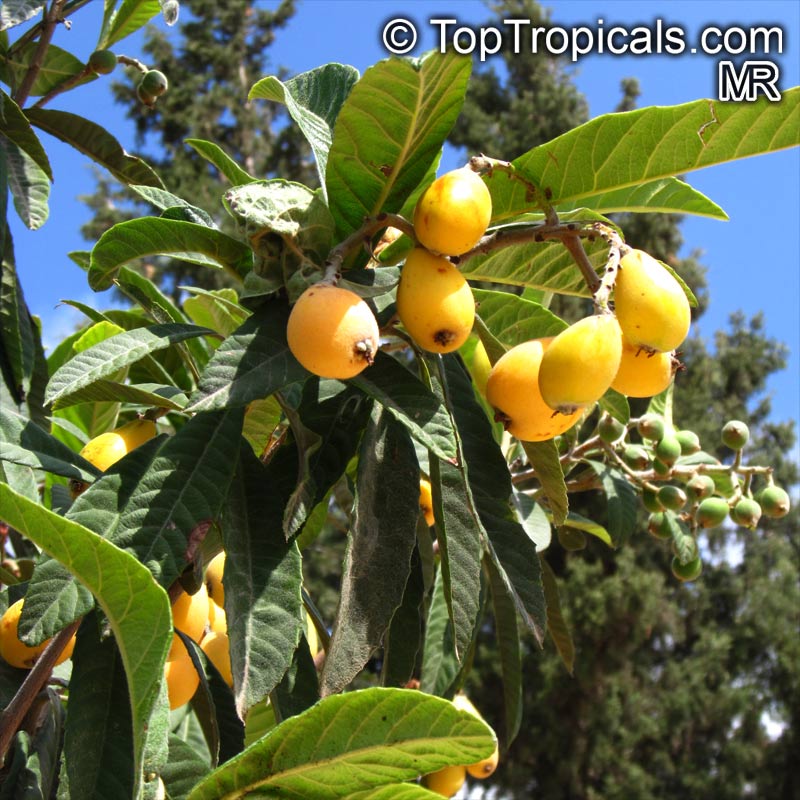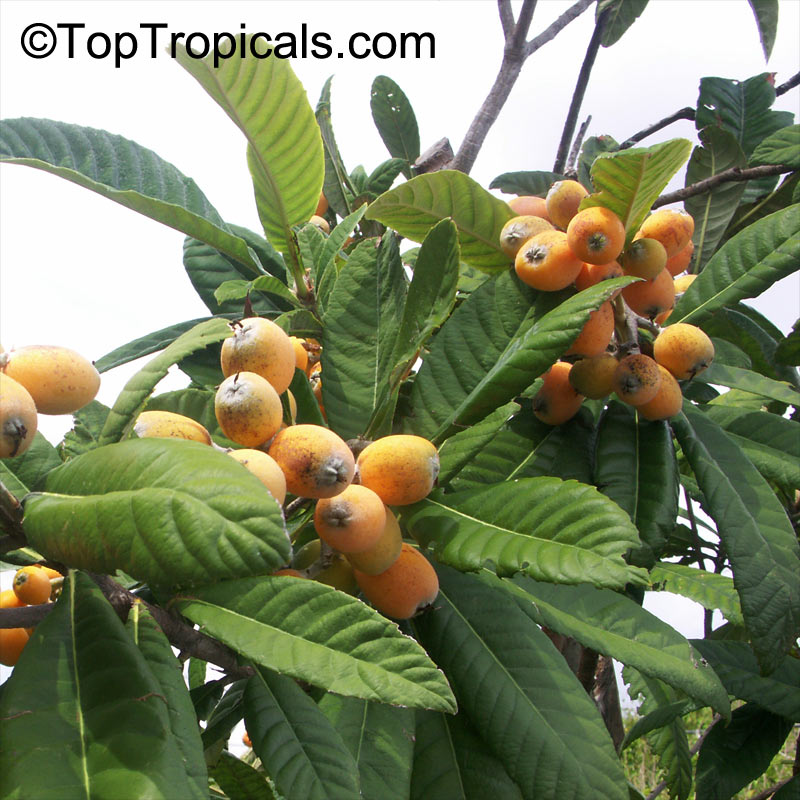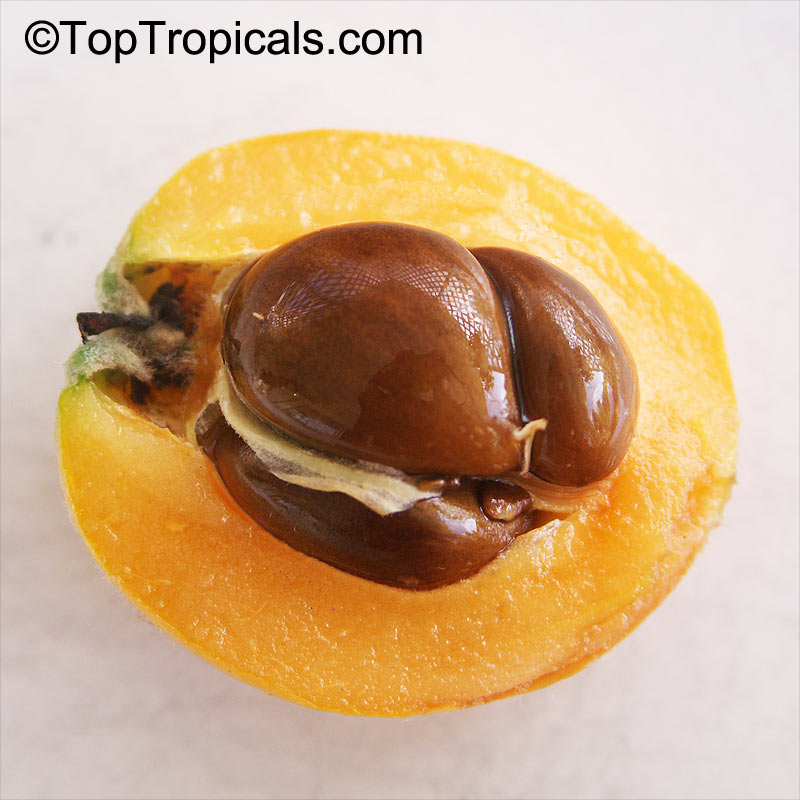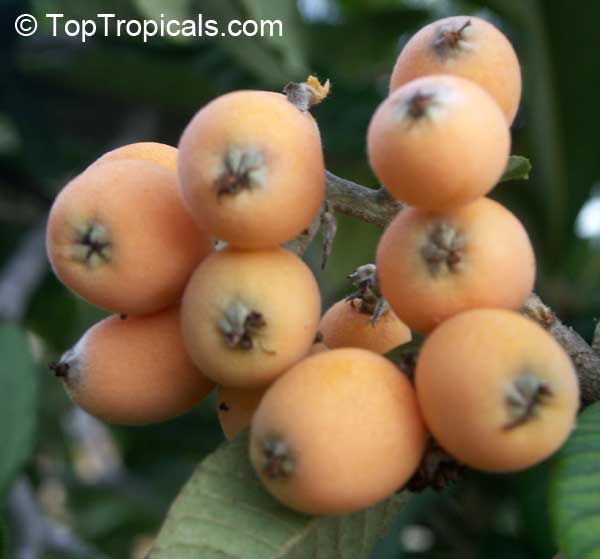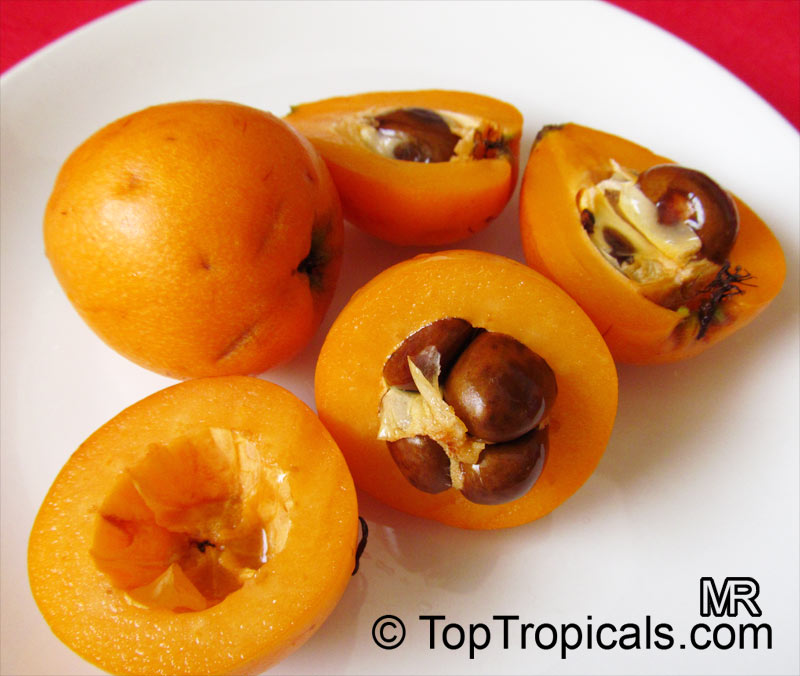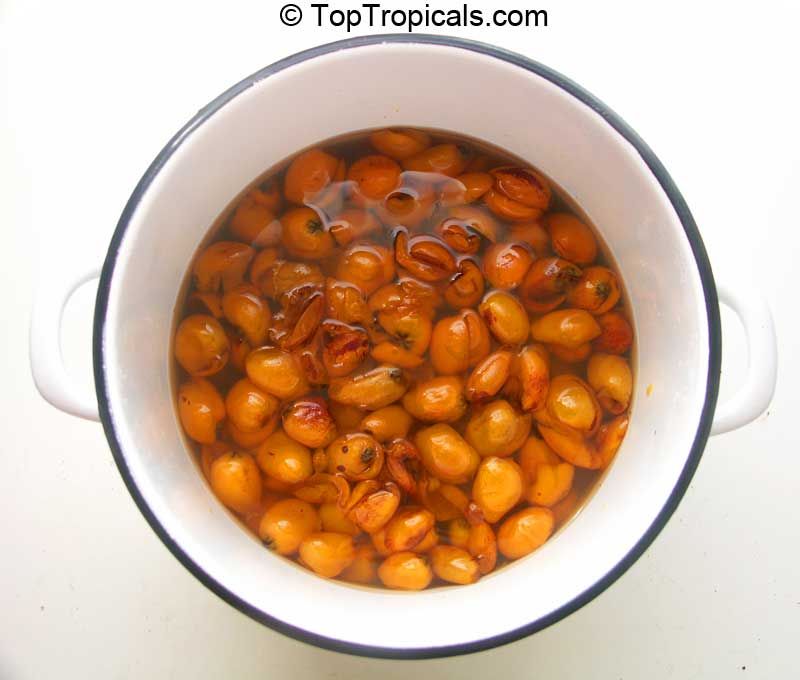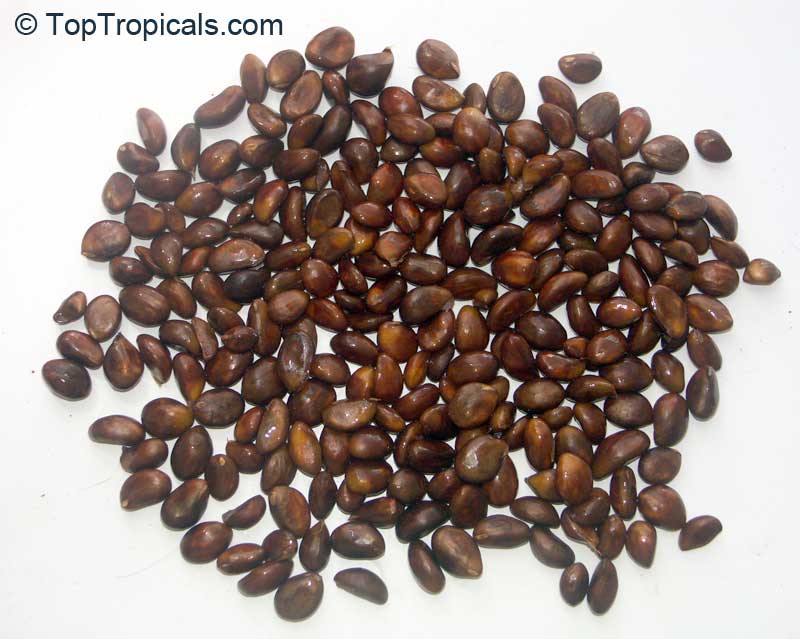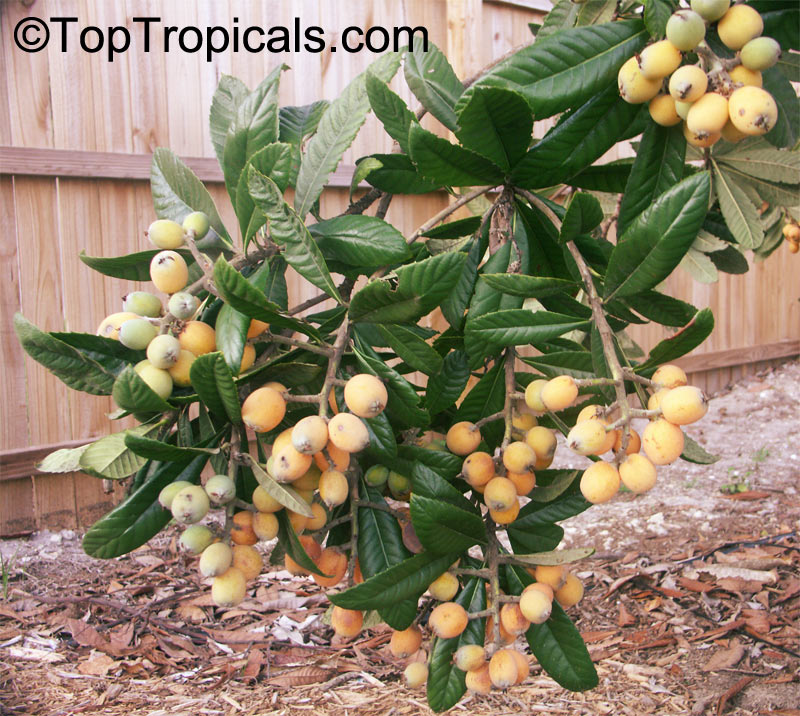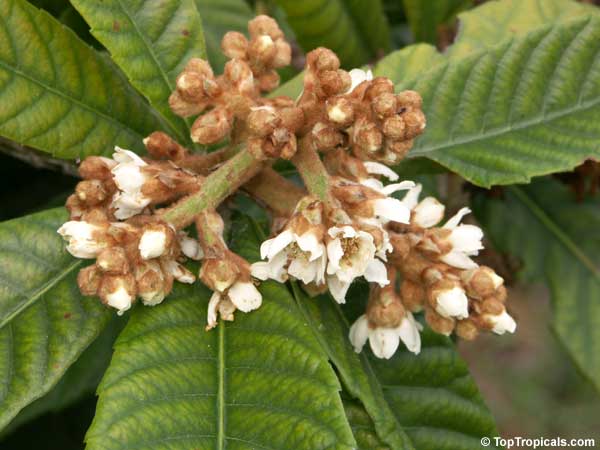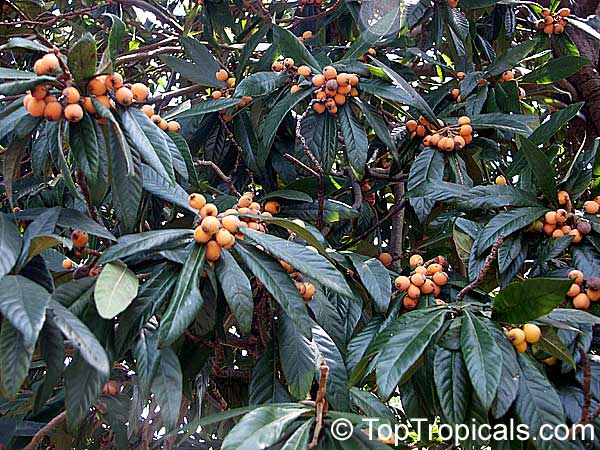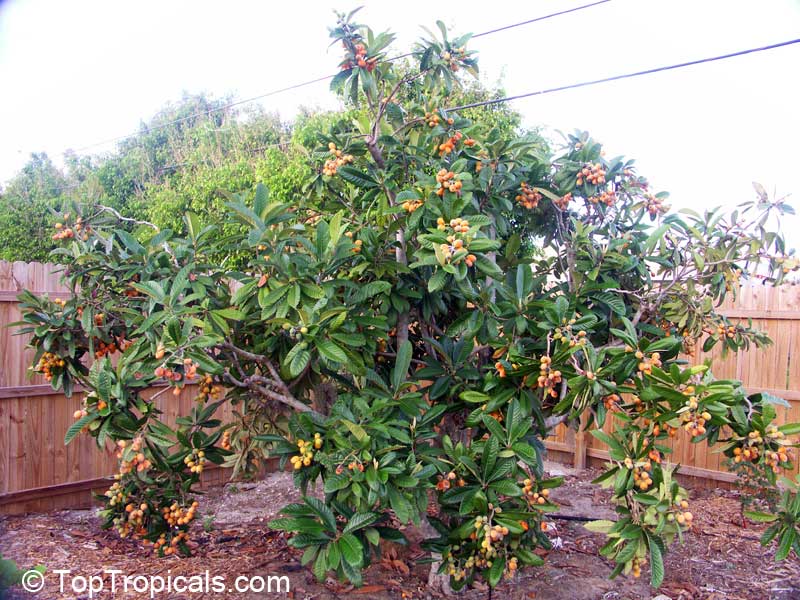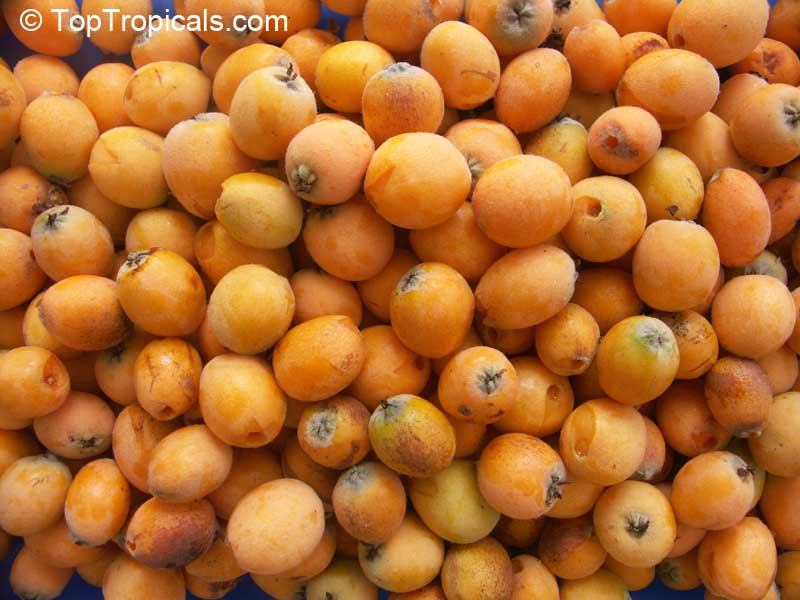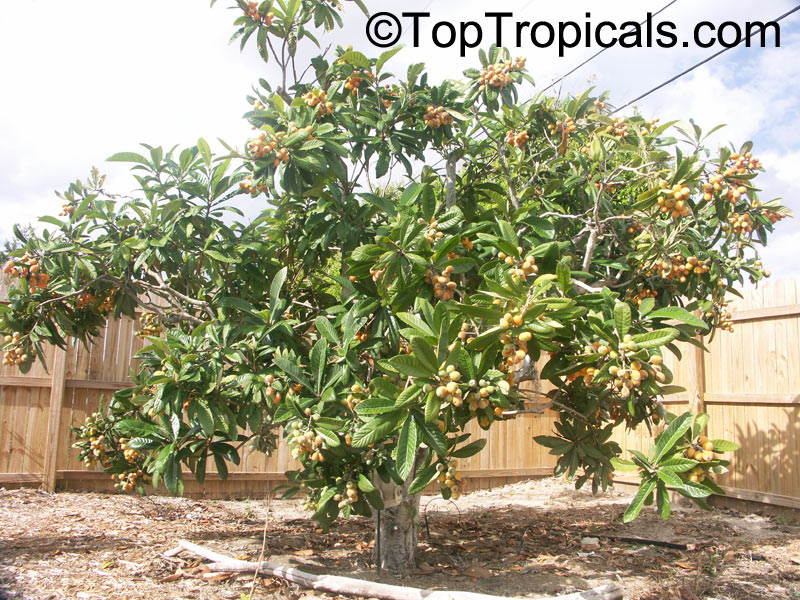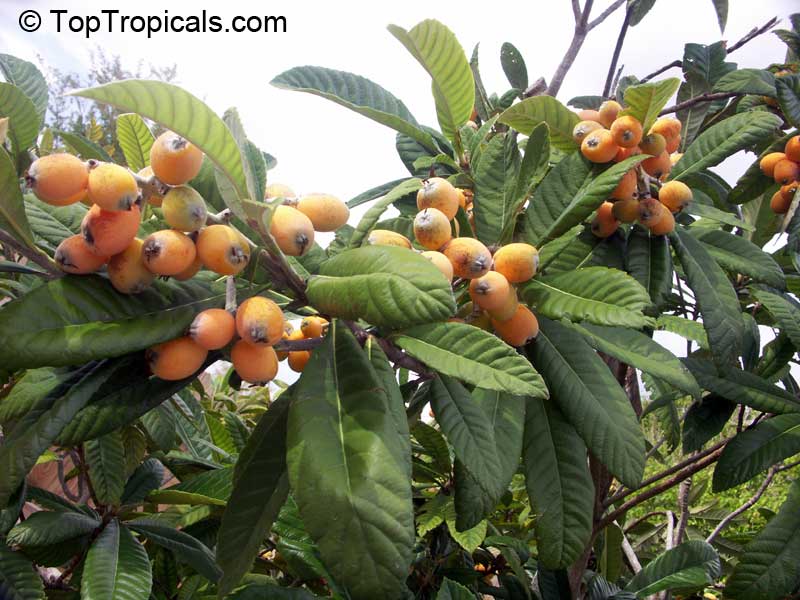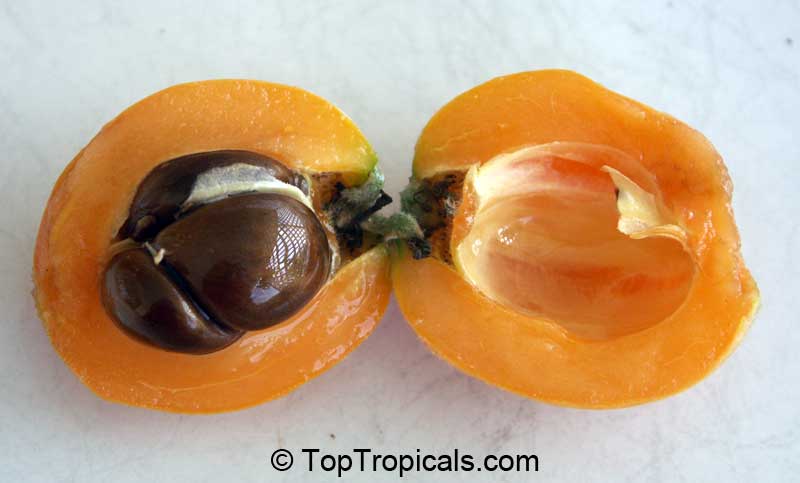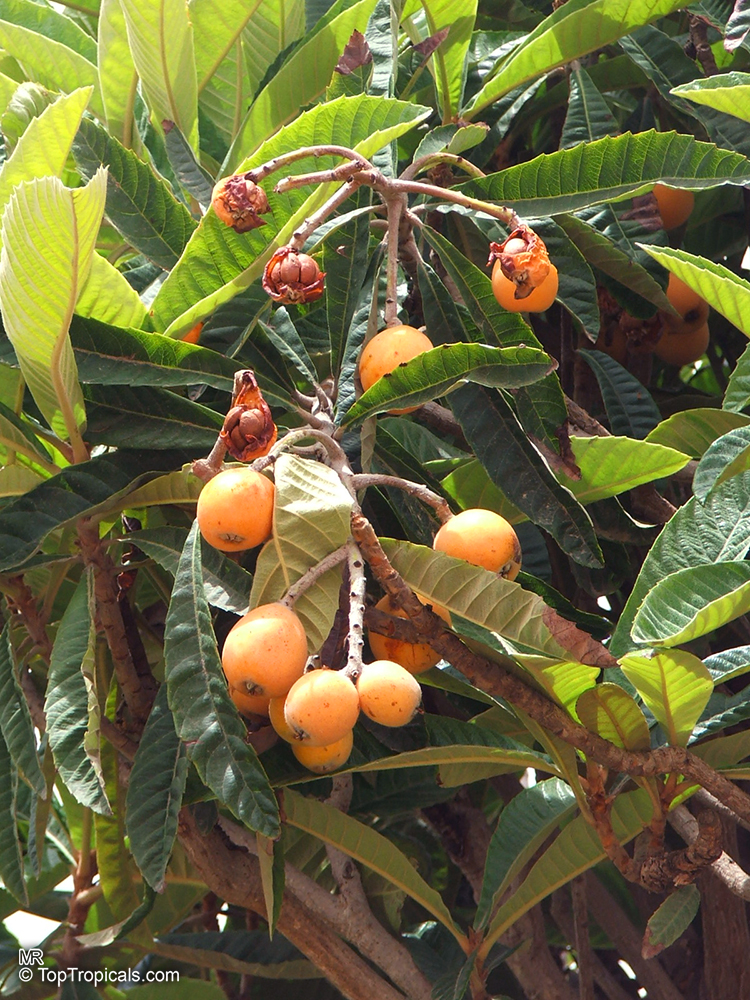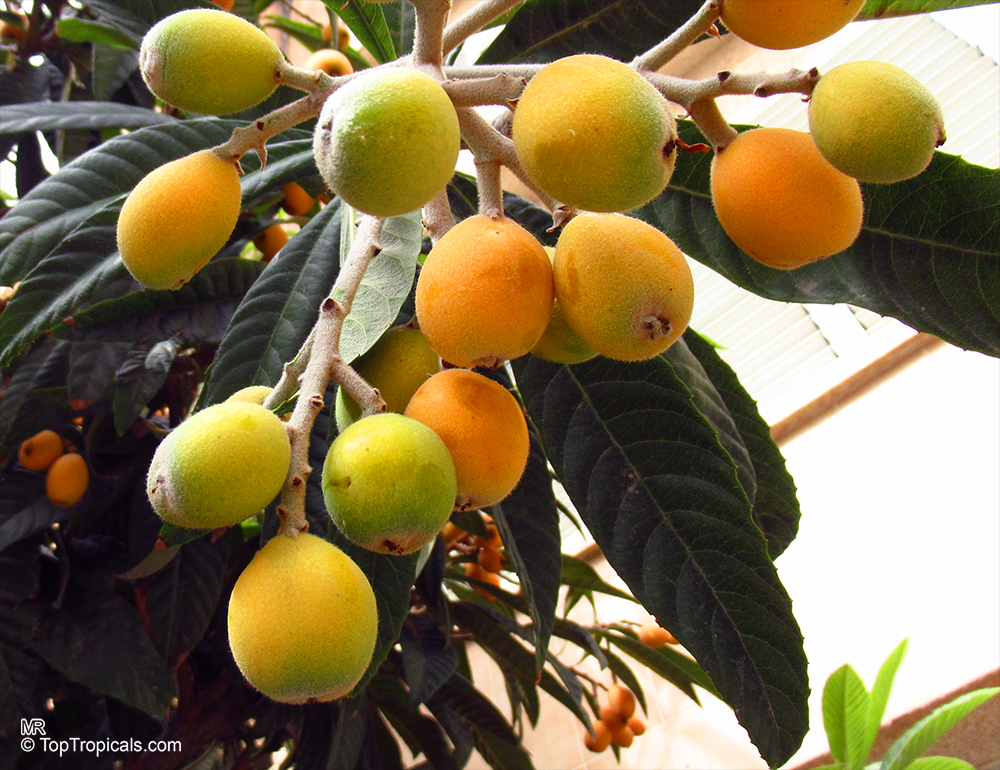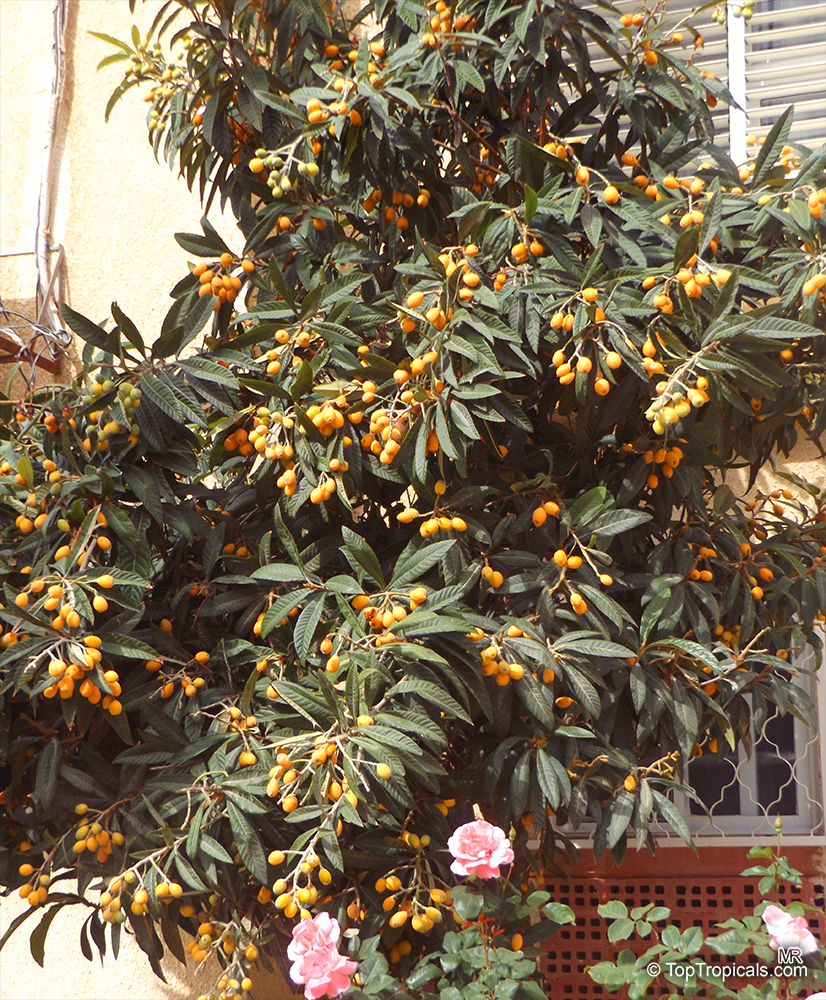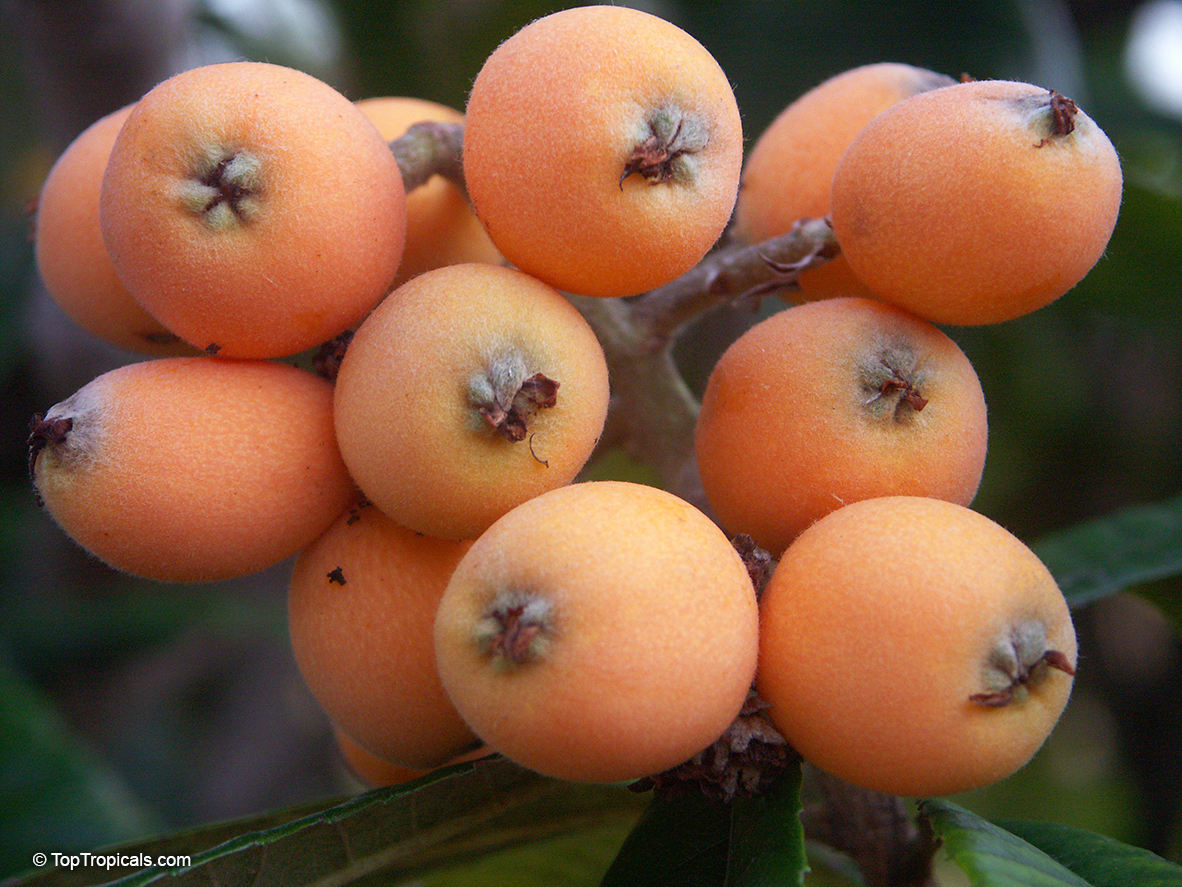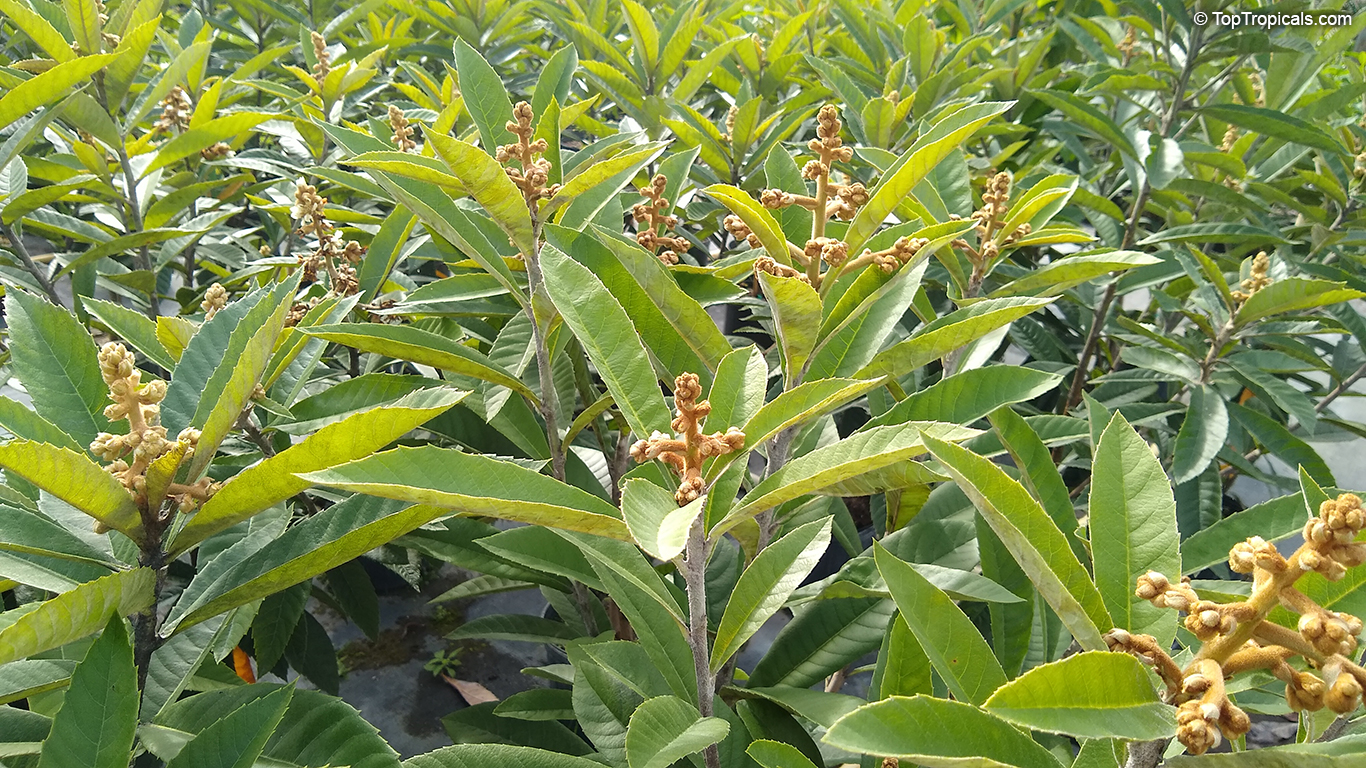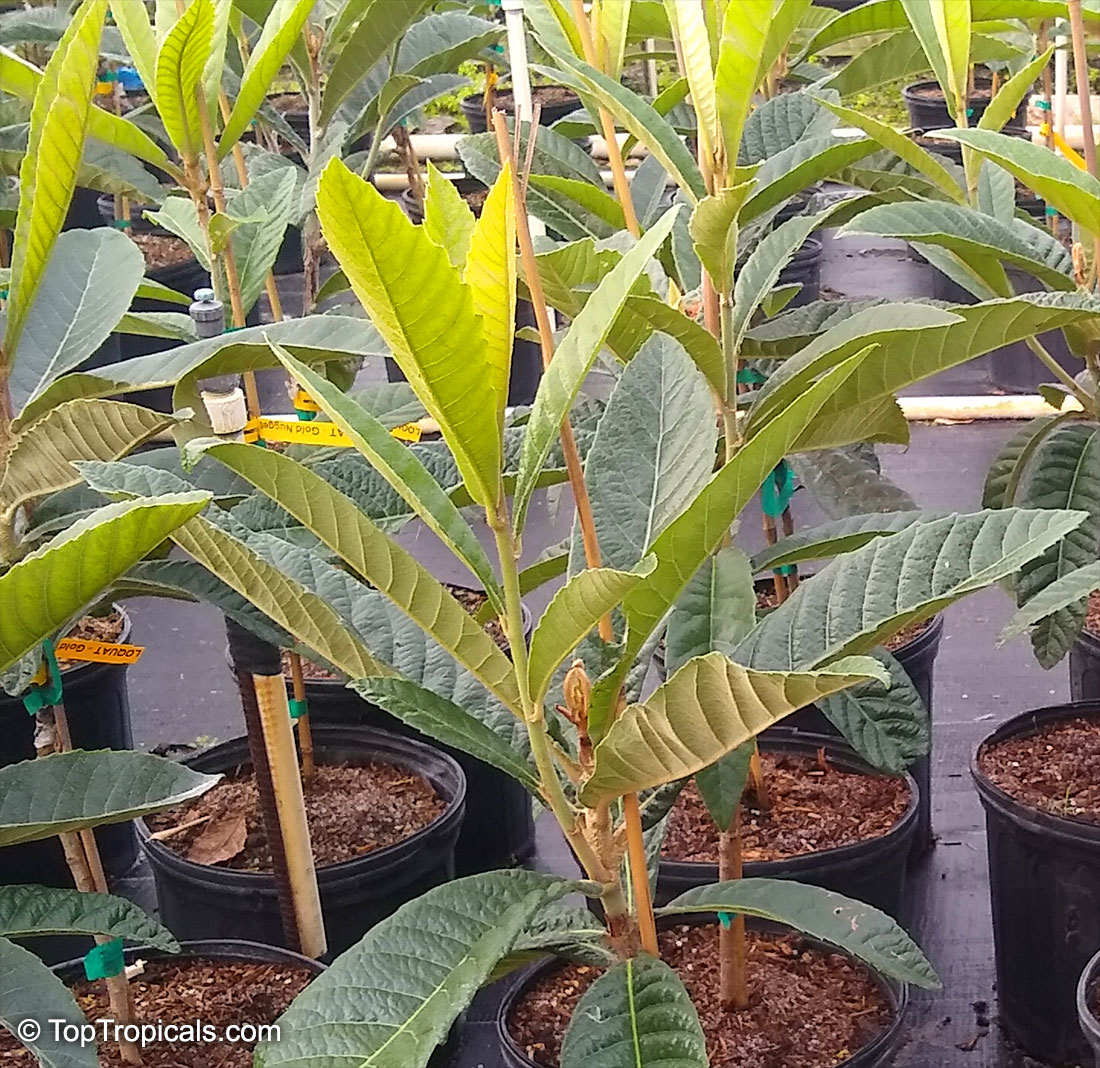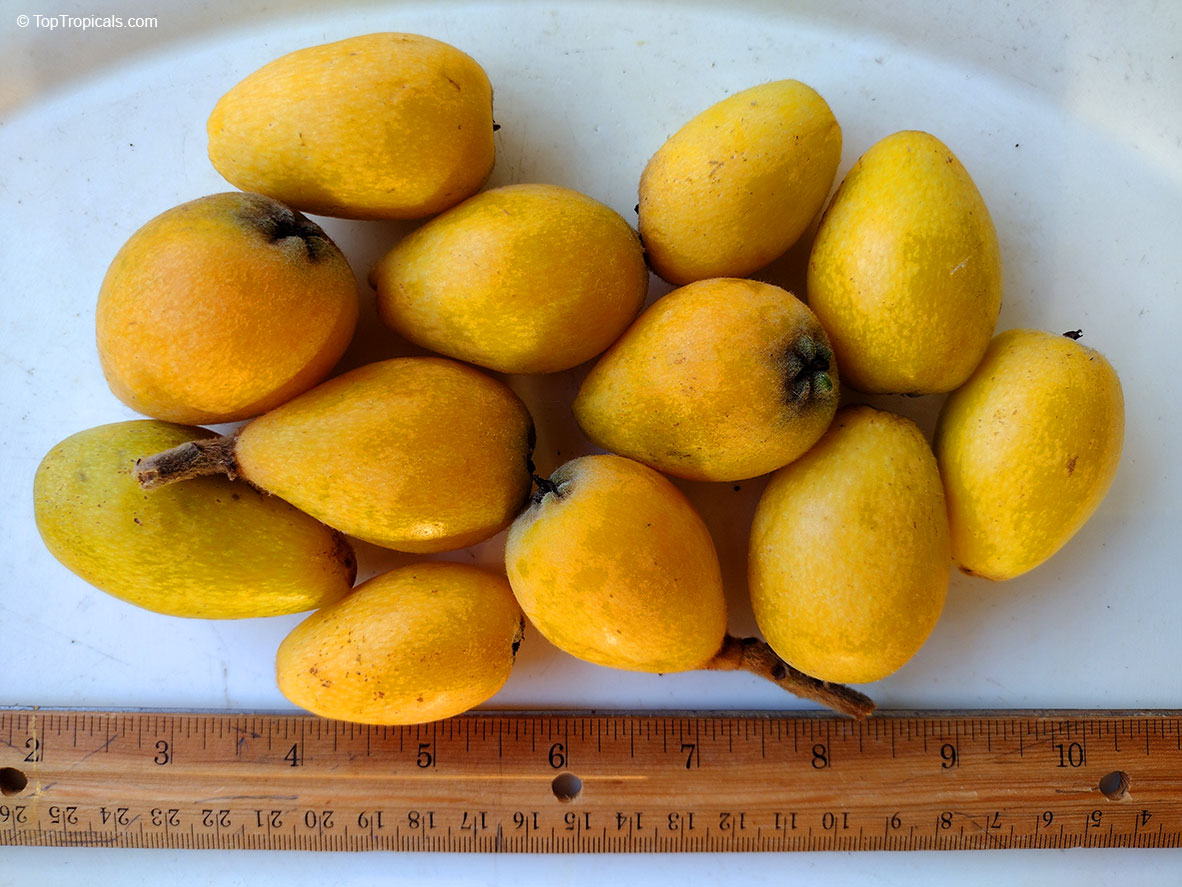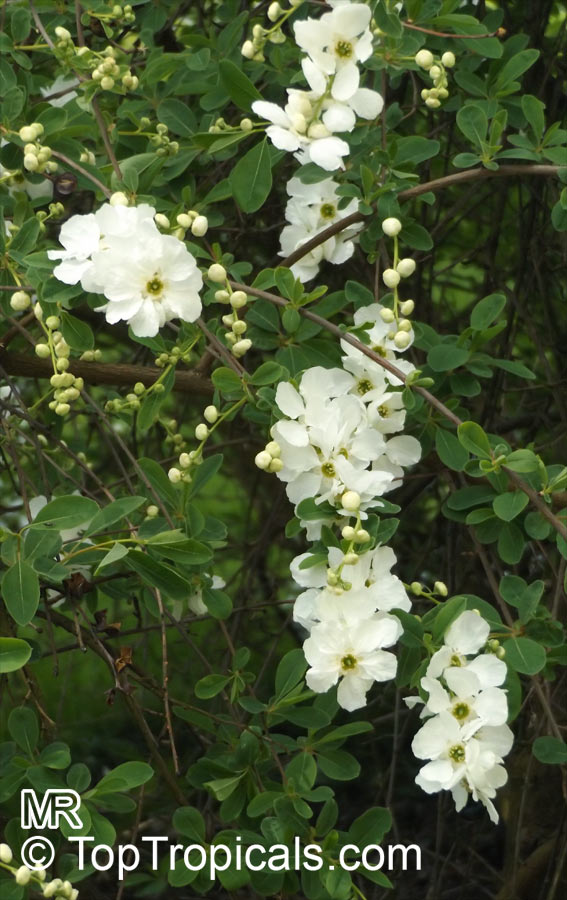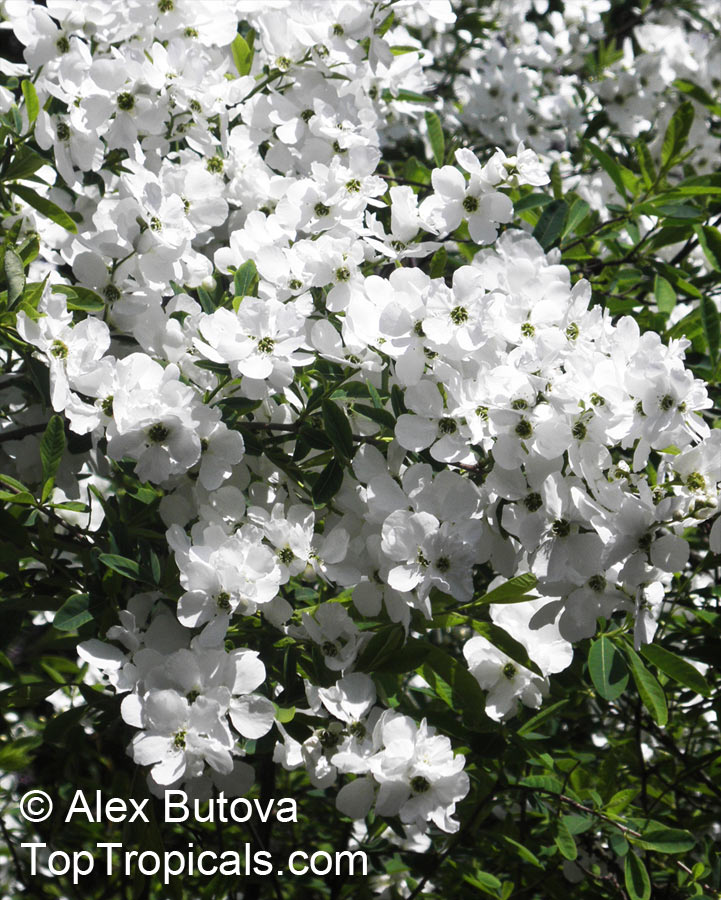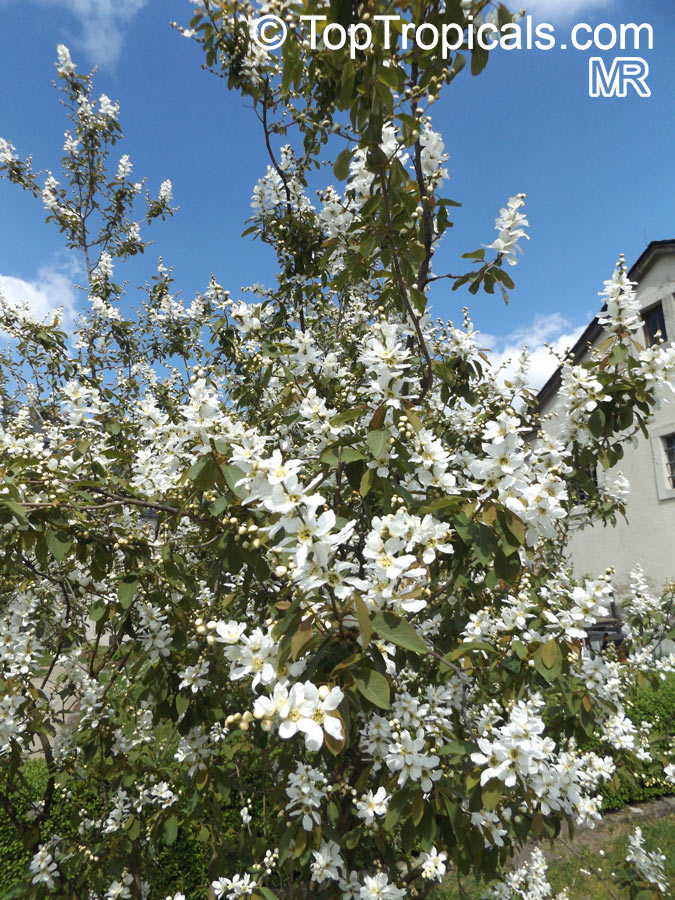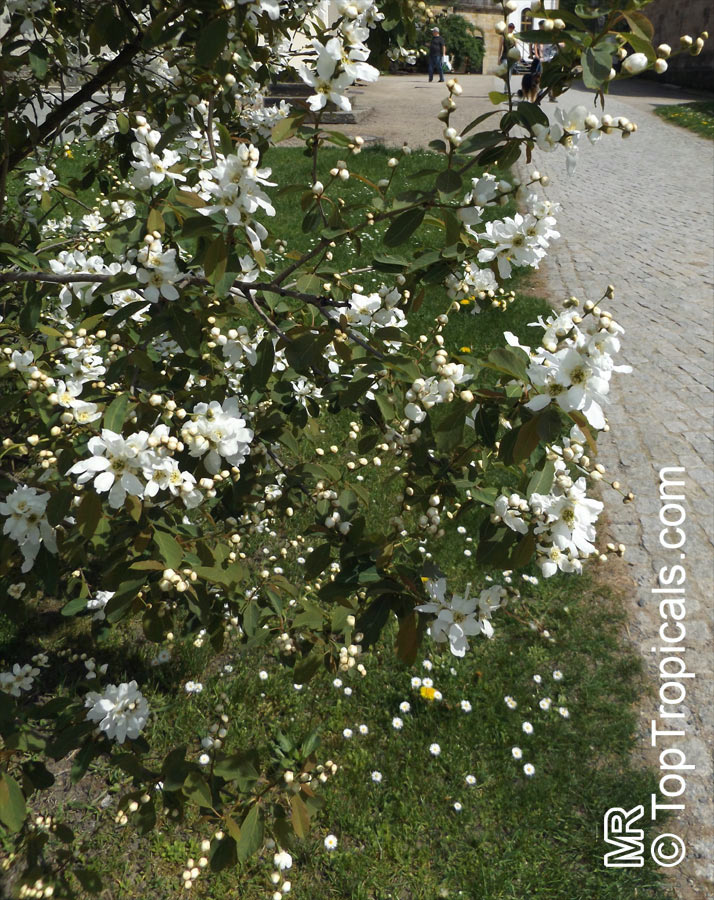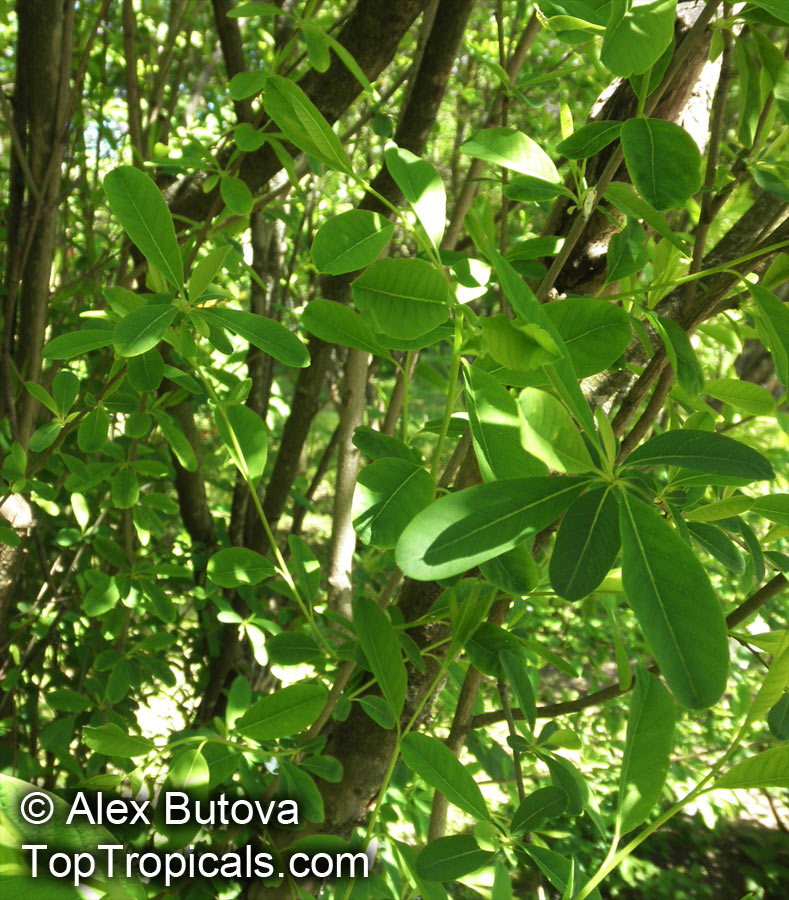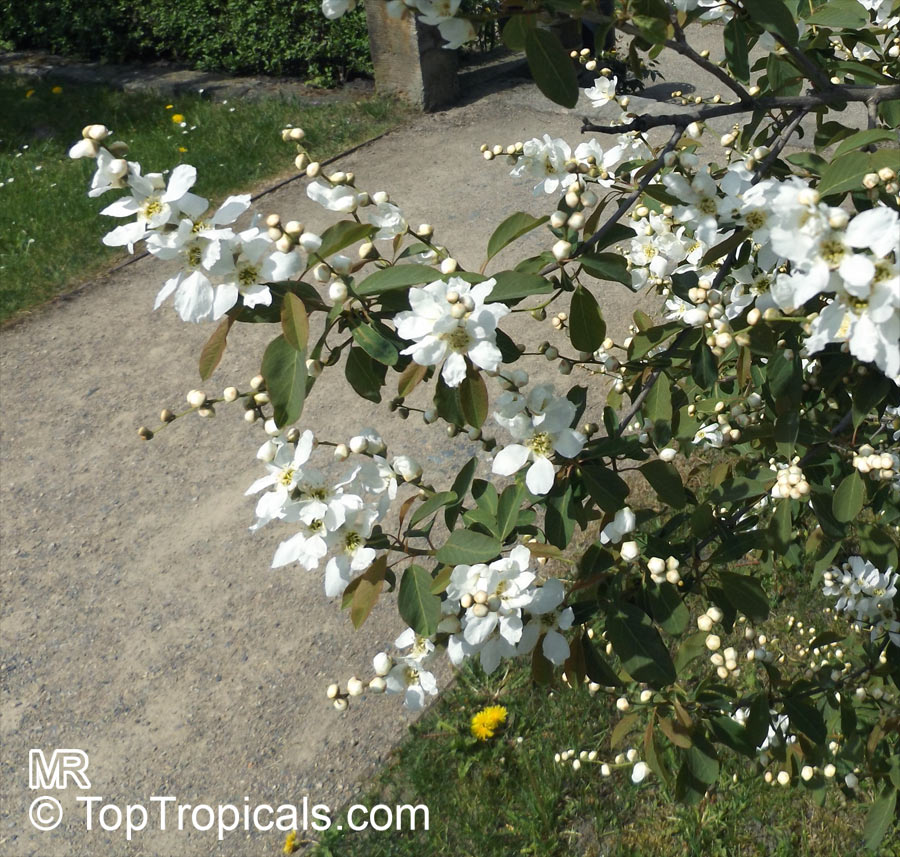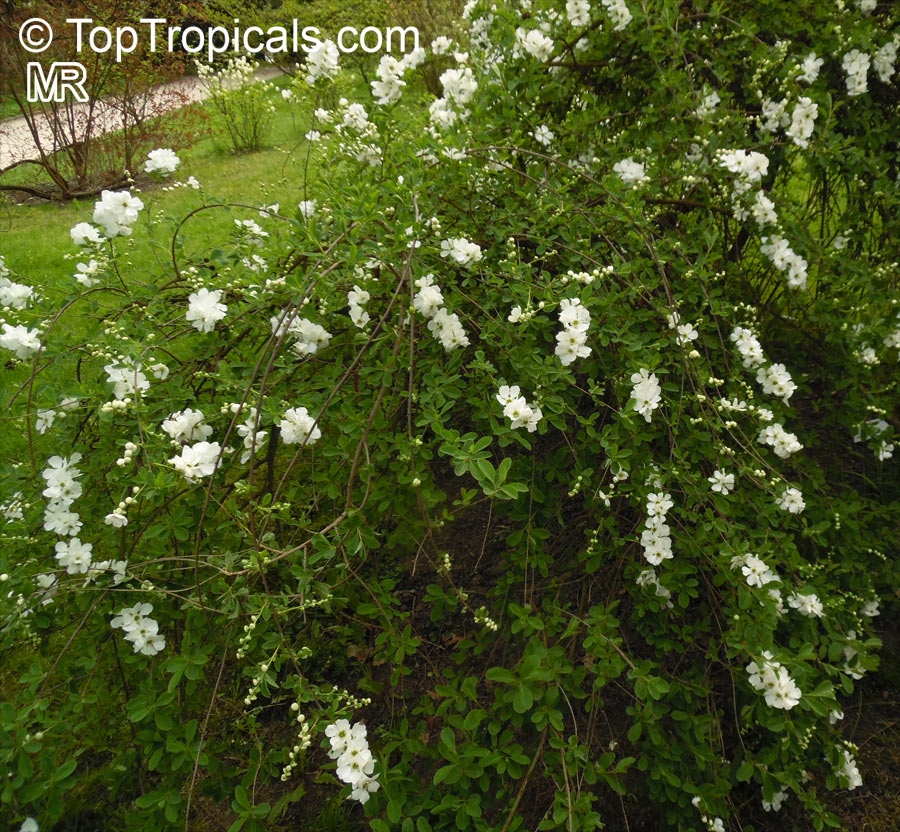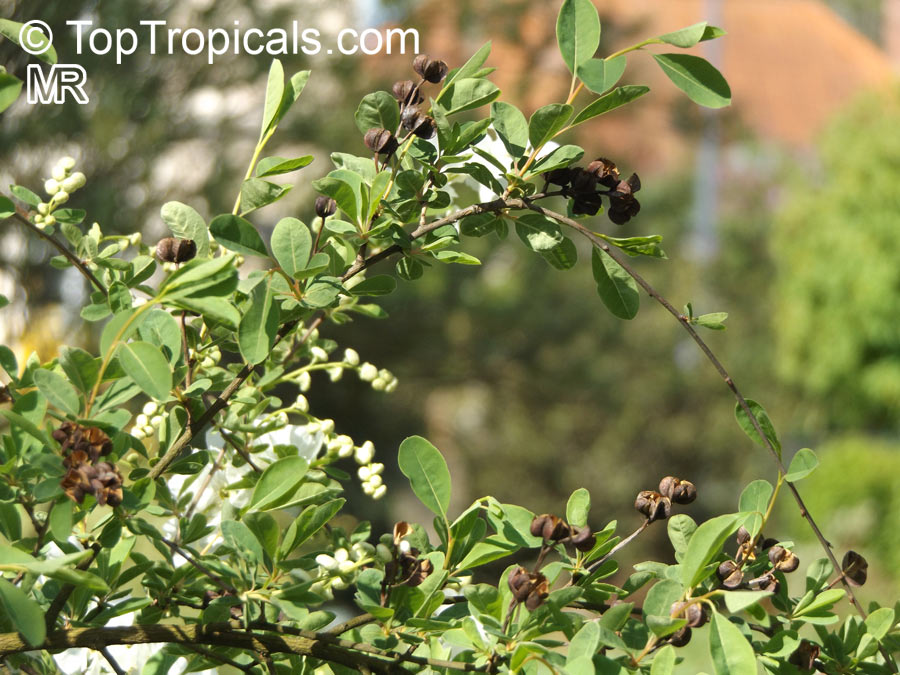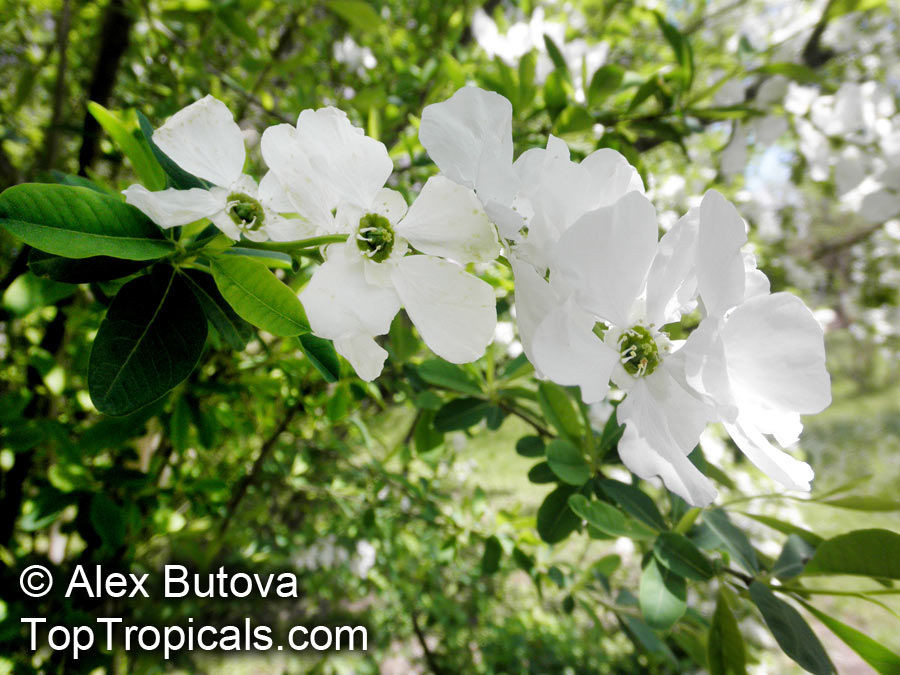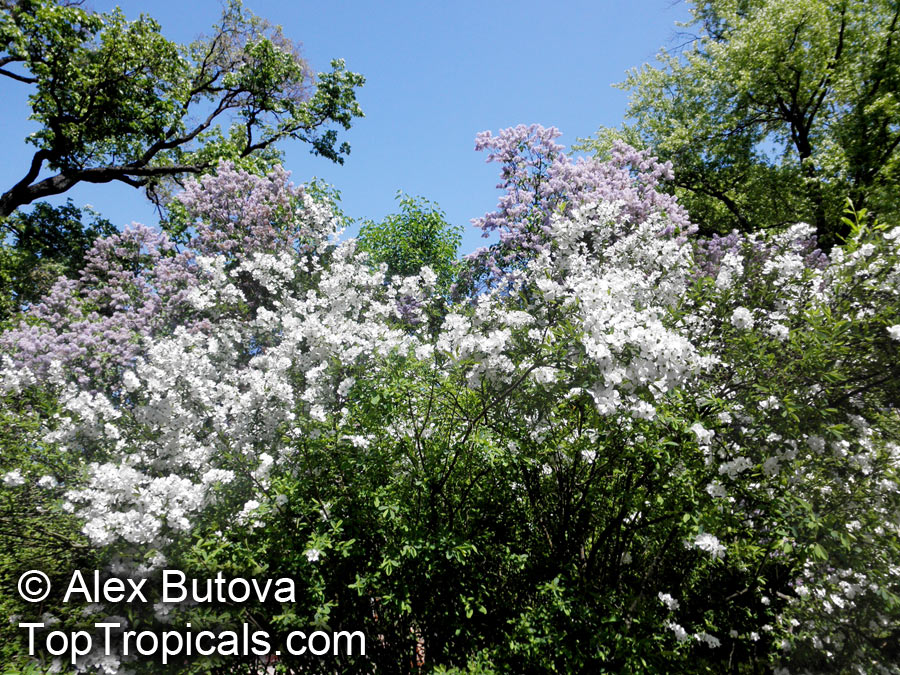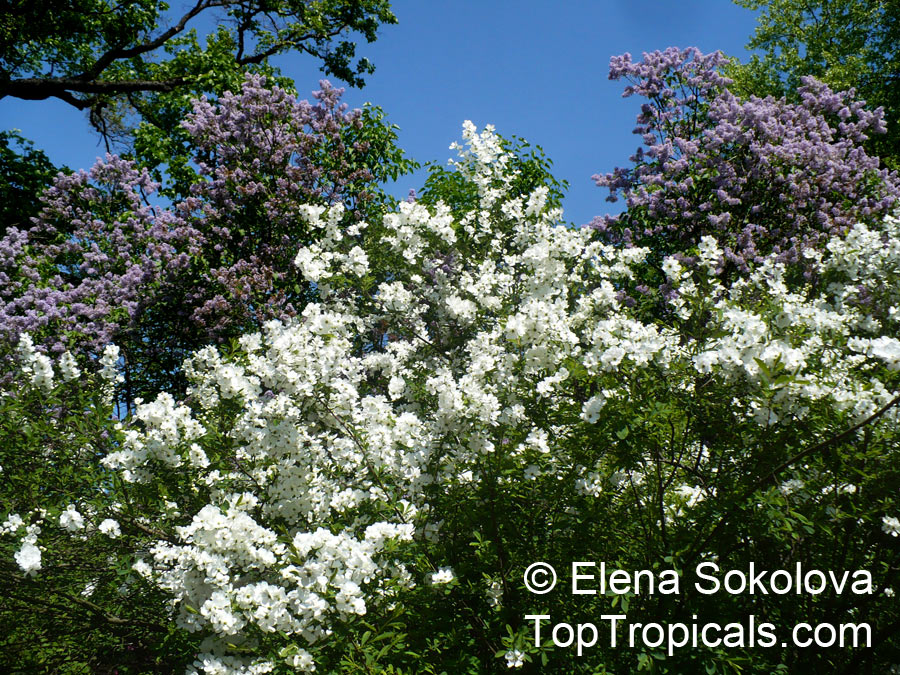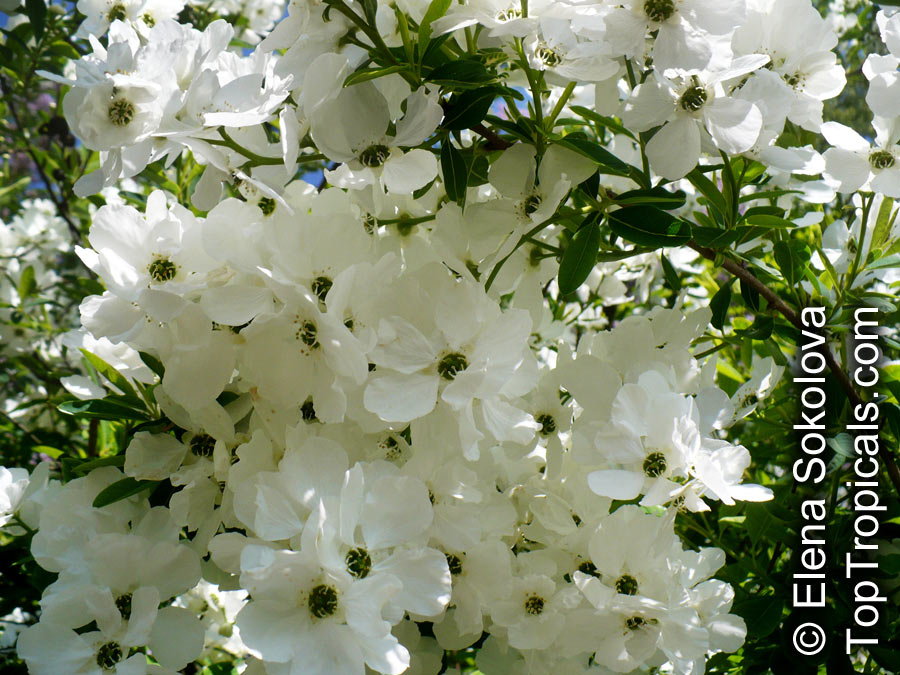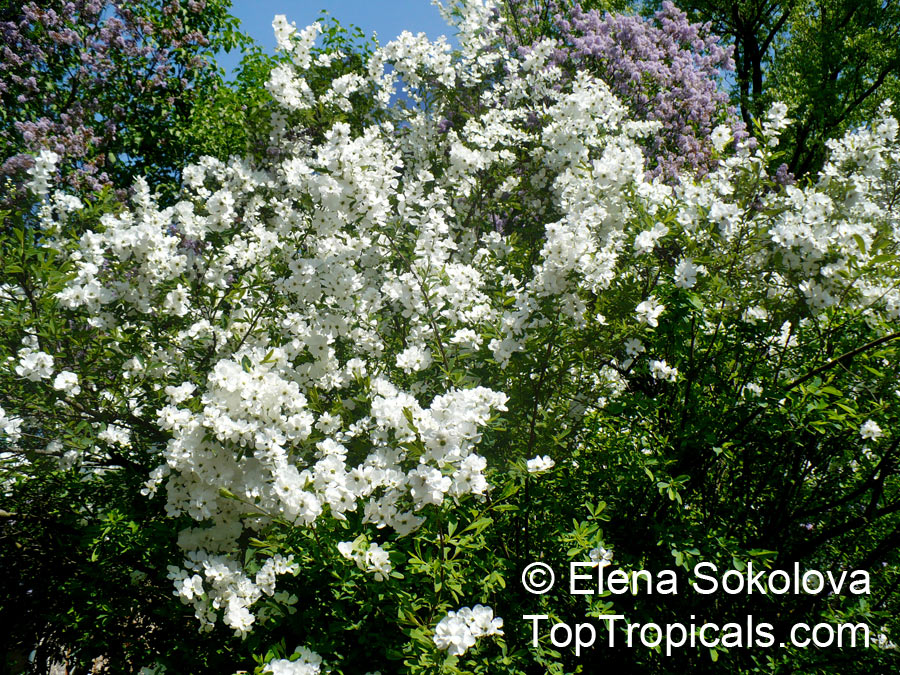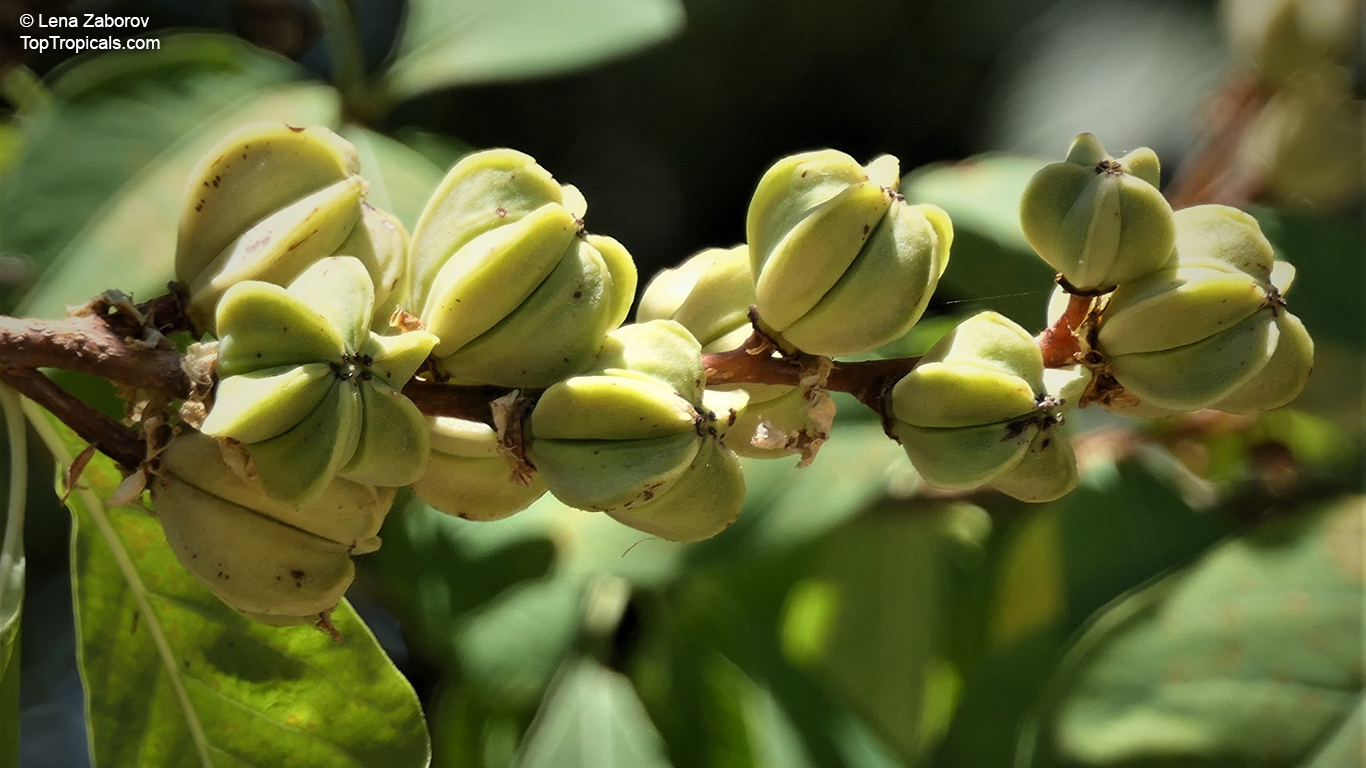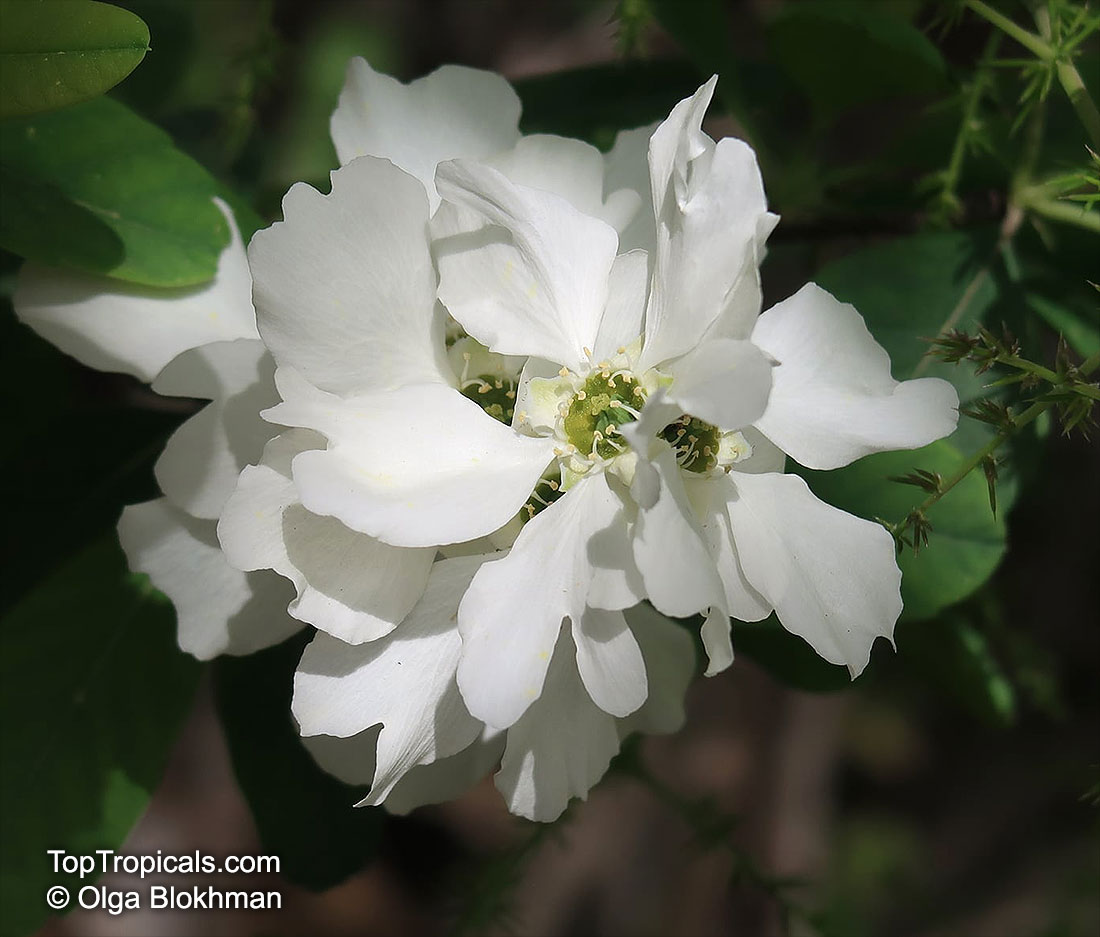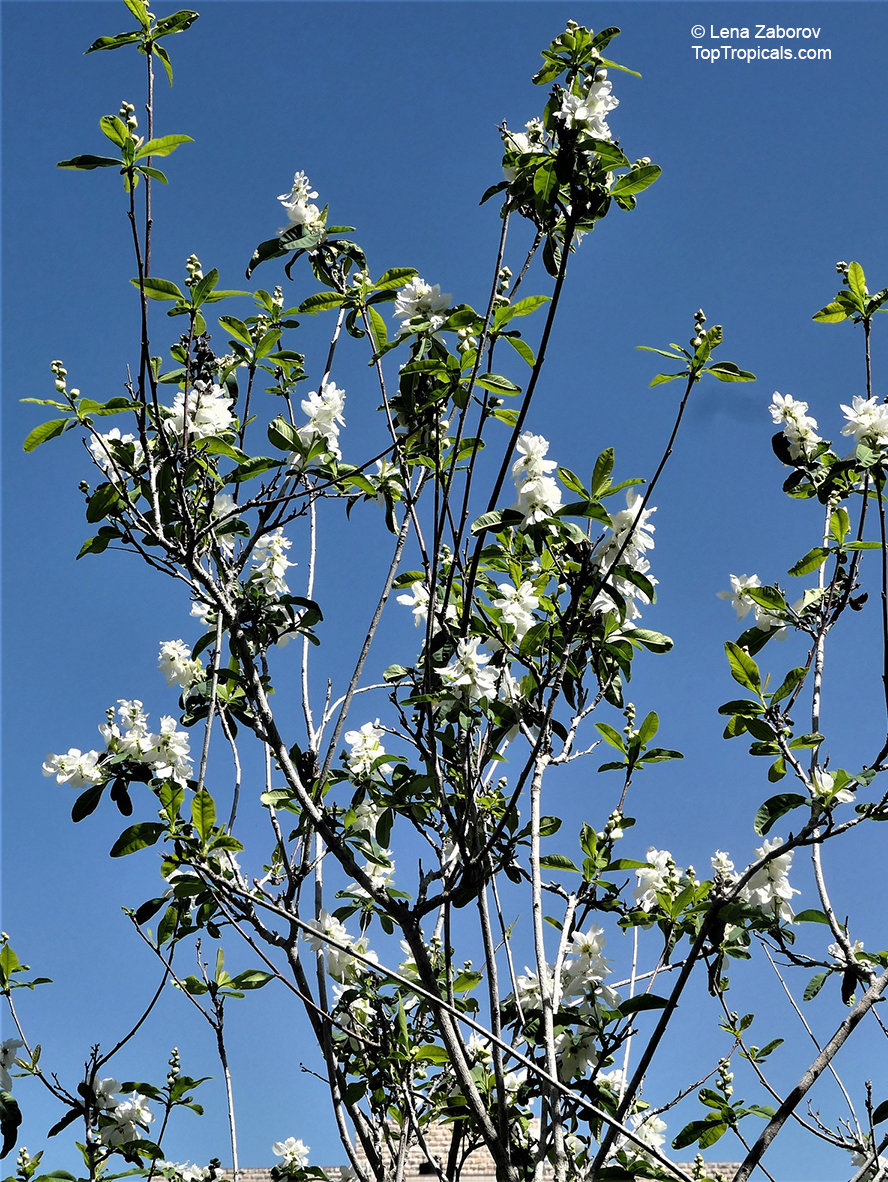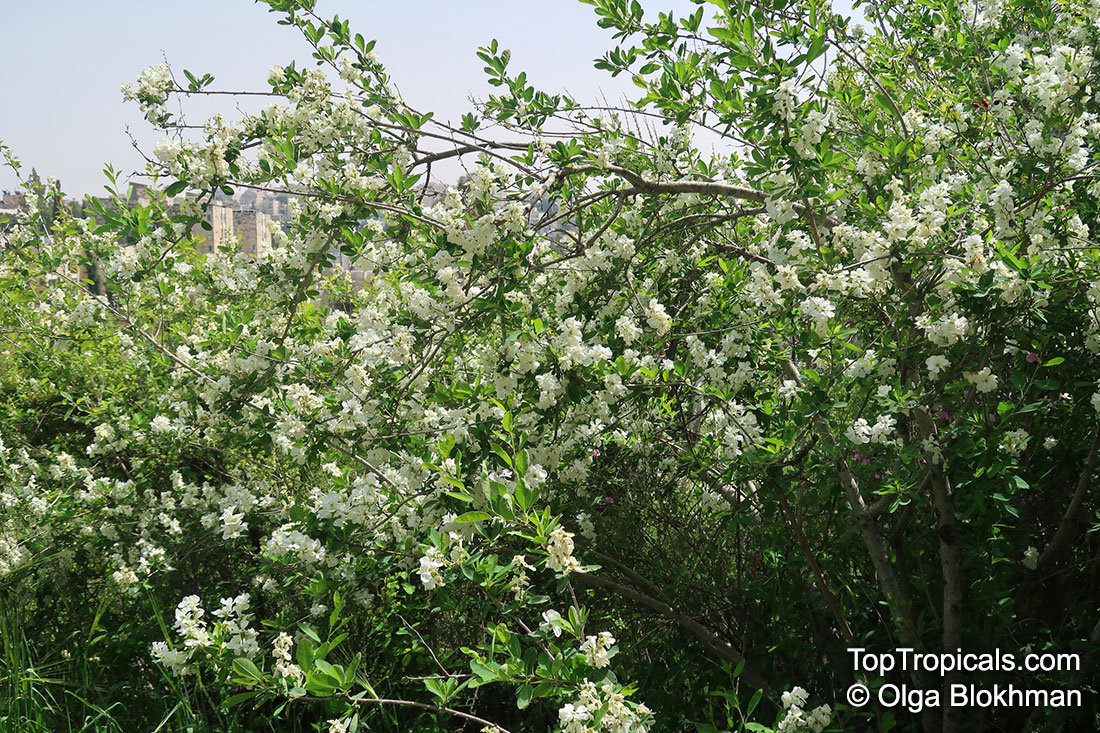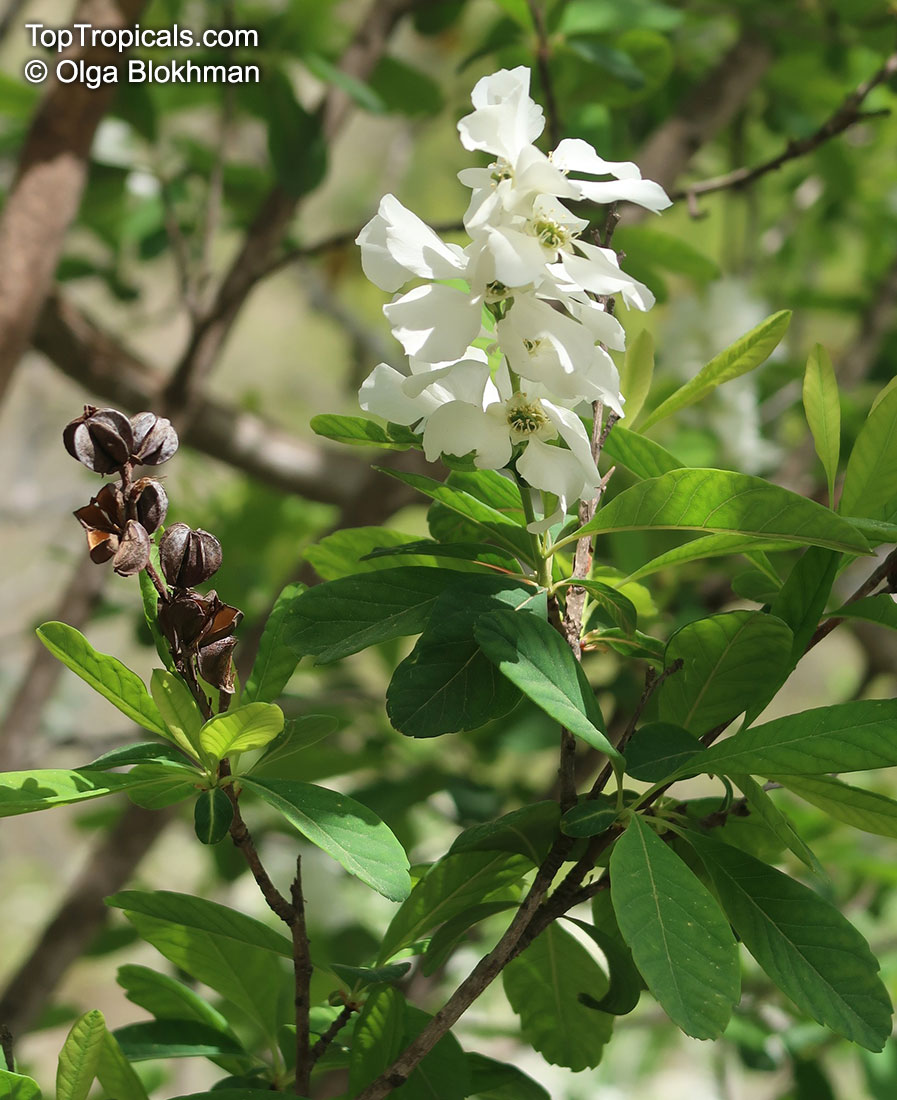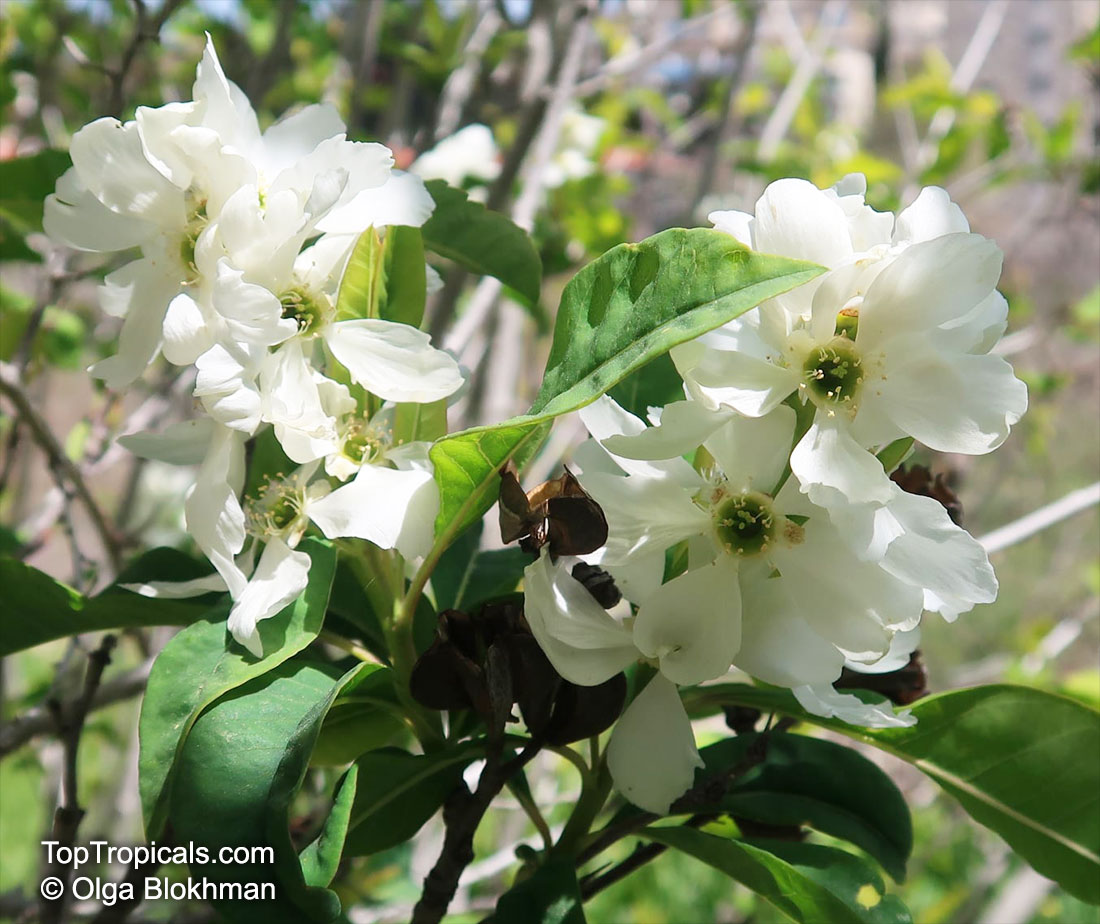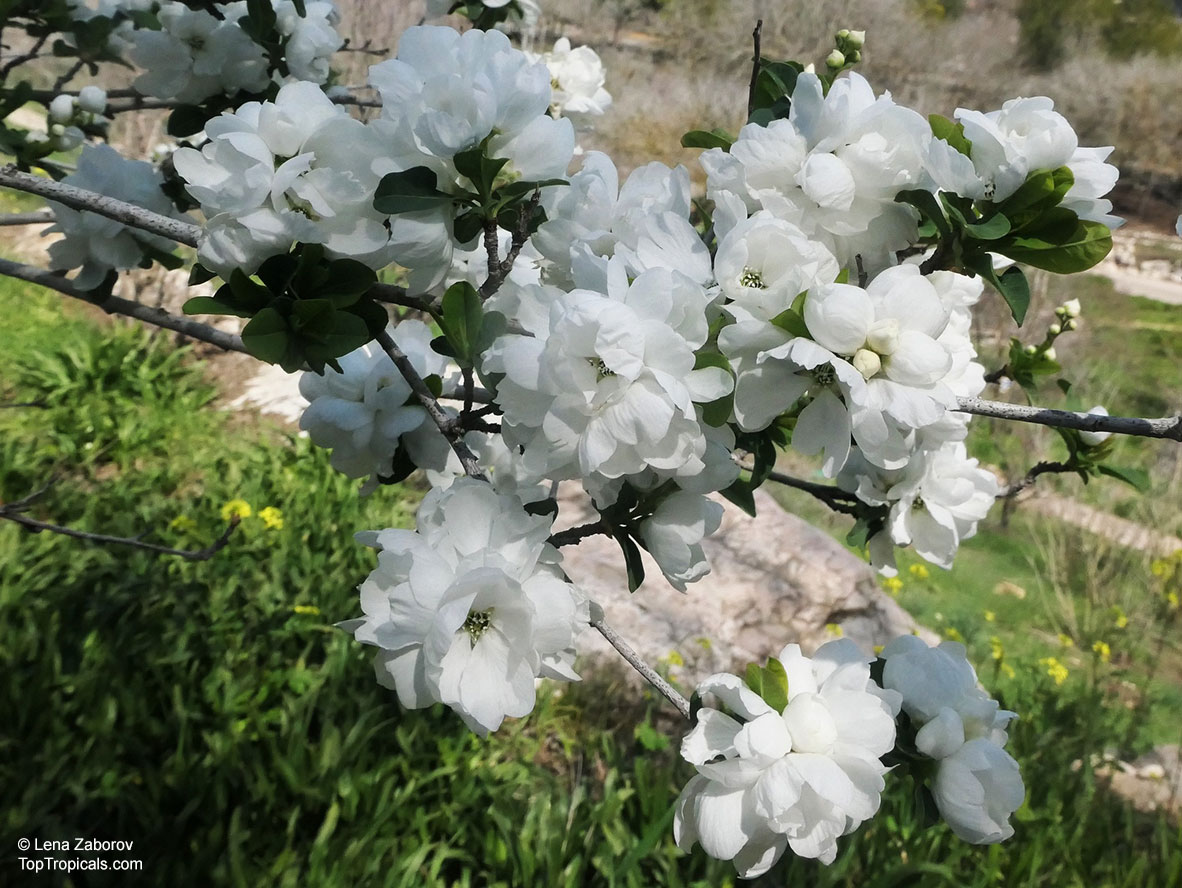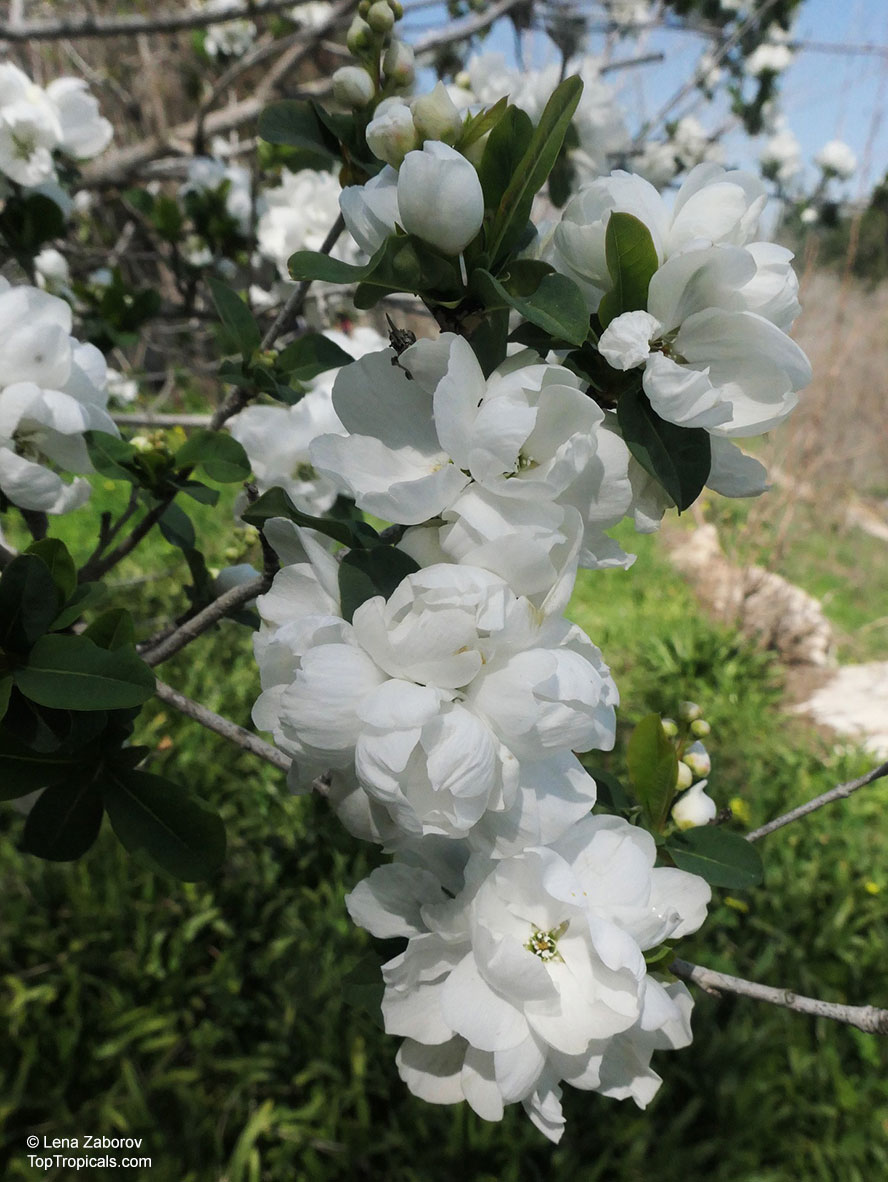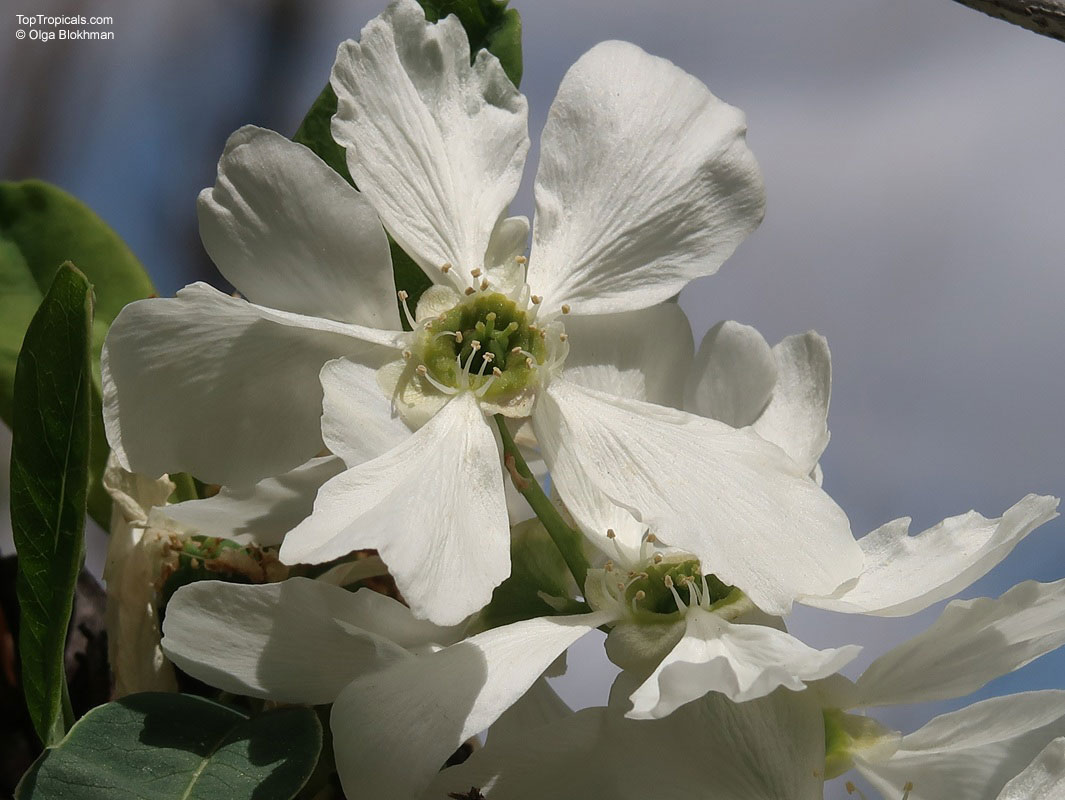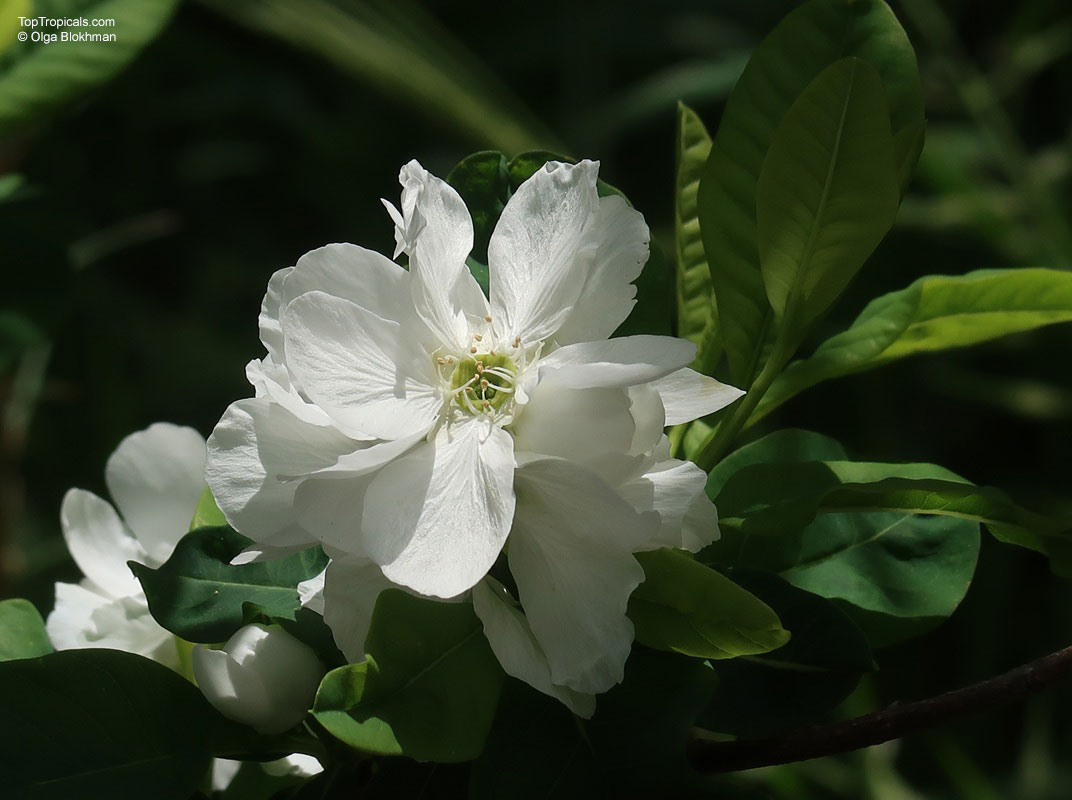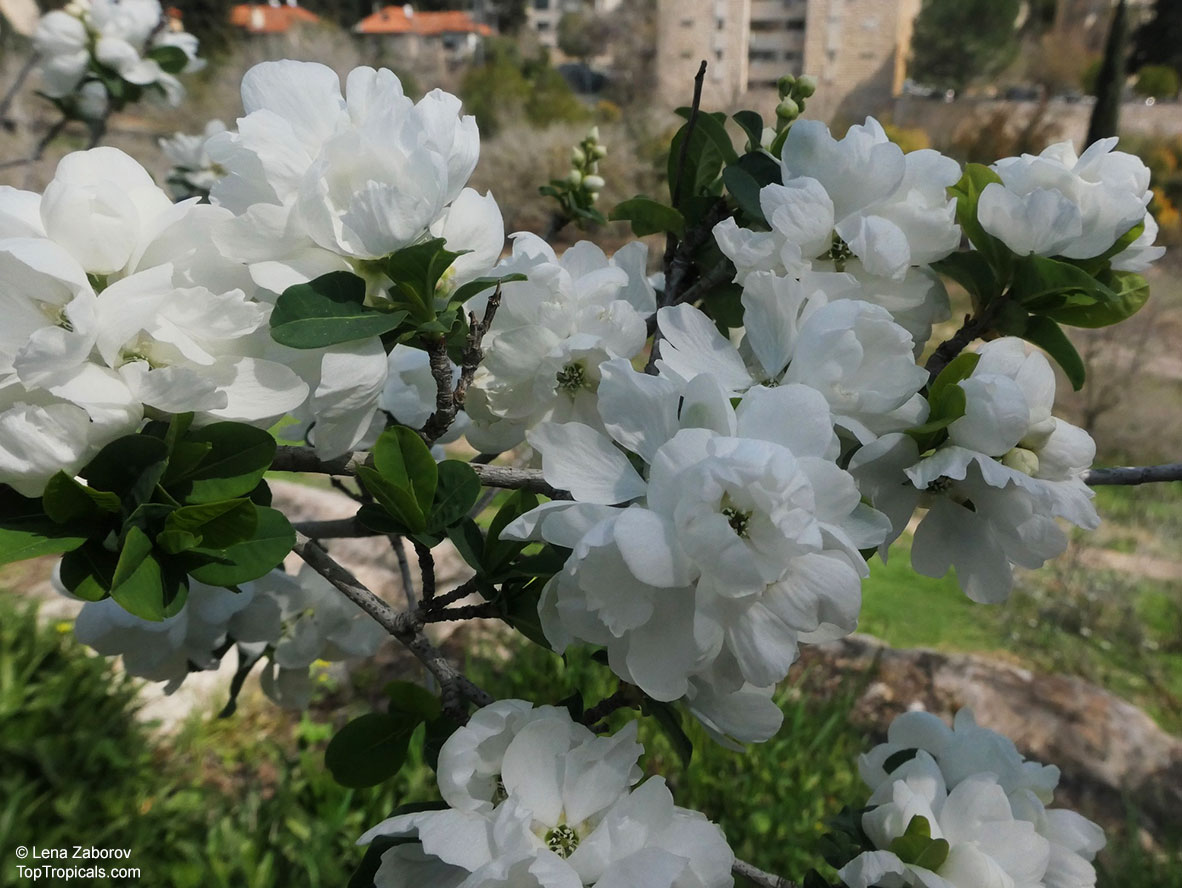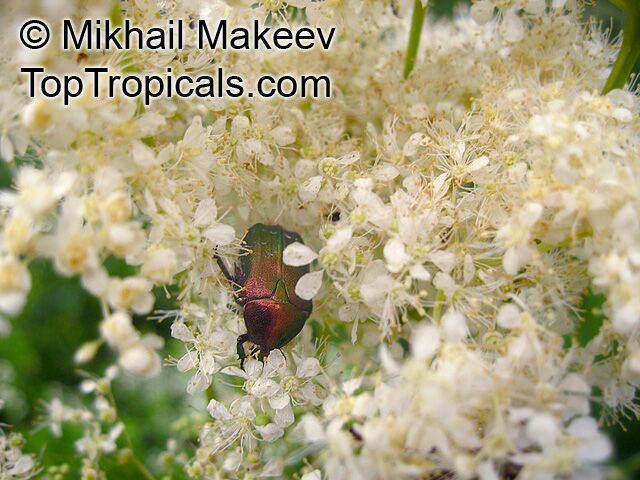Rosaceae - Botanical Family
Top Tropicals Plant Encyclopedia
| Number of plants found: 64 | Next | 
|
Go to page: | 1 | 2 | 3 | 4 | 5 | Last |
Botanical name: Aronia melanocarpa
Common name: Chokeberry
Family: Rosaceae
Origin: North America










Native to eastern North America and most commonly found in wet woods and swamps, Aronia is also naturalized in Europe.
Chokeberries are cultivated as ornamental plants and as food products. The sour berries can be eaten raw off the bush, but are more frequently processed. They can be found in wine, jam, syrup, juice, soft spreads, tea, salsa, chili starters, extracts, beer, ice cream, gummies and tinctures. The name "chokeberry" comes from the astringency of the fruits, which create a sensation making one's mouth pucker.
Cultivar Viking was selected in Europe for use in orchards but gardeners quickly discovered it's many attributes as a landscape plant. Masses of fragrant, white flowers bloom in spring a bit earlier than the species. Gorgeous red fall colors and extra large berries follow the glossy summer foliage. Persistent, purplish black berries are high in nutrients and can be used for pies and jellies or left on the shrub to provide food for birds and other wildlife. The berries can persist into spring feeding the first returning robins. Viking is self-fertile, so you need plant only one for a full crop of berries. It needs no pruning, is quite drought-tolerant once established in your garden, and as a native shrub, has proven remarkably resistant to pests and diseases. In other words, it is utterly trouble-free and very, low maintenance. USDA hardiness zone 3-9.
Aronia berries are harvested in September and October. Enjoy them in an array of foods as they are rich in vitamins. One of the true super fruits, they are high in antioxidants with huge health benefits. This fruit is used in Eastern Europe in holistic medicine for lowering blood pressure. Fruit should be consumed with caution as excessive amount can cause significant blood pressure drop.
See article: Cold hardy Aronia and its Superfruit: a Magic gift from the Native Americans
Botanical name: Chaenomeles sp.
Common names: Flowering quince, Dwarf quince
Family: Rosaceae
Origin: eastern Asia












This group consists of three hardy, deciduous shrubs from eastern Asia, commonly known as Flowering Quinces. These thorny shrubs are suitable for growing against walls, in borders and standing alone. Flowering Quinces are easily grown and are valued for their saucer-shaped blossoms, which may be red, pink, orange, or white and are followed by large, fragrant fruits. Flowering Quinces can be grown in shady areas, though they flower best in sunny positions. They can be grown in well-drained, friable soil.
The fruit is apple-shaped and about 4cm in diameter.
Very harsh and acid raw but fragrant when cooked, imparting a strong pleasant flavor to jams and jellies.
The rich aromatic juice, as tart as a lemon, is squeezed and used for culinary purposes.
Botanical name: Cotoneaster sp.
Common name: Cotoneaster
Family: Rosaceae









Cotoneasters are very popular garden shrubs, grown for their attractive habit and decorative fruit.
Botanical name: Crataegus sp.
Common names: Blackthorn, Cockspur, Hawthorn, Washington Thorn
Family: Rosaceae














Hawthorns are frost-hardy, robust, deciduous tree, most of which are compact enough even for quite small gardens.
+Crataegomespilus is the generic name applied to graft-chimeras between the genera Crataegus and Mespilus.
Botanical name: Cydonia oblonga
Common name: Quince
Family: Rosaceae
Origin: Southwest Asia













The quince is a deciduous thornless shrub or small tree, 13-20 ft high, with crowded gnarled branches and a low crooked habit. Young branchlets are covered with a pale greyish wool. Fruits are light golden-yellow, green or orange, usually pear shaped and very fragrant.
Quinces contain high levels of pectin. They are used to make jam, jelly, or they may be peeled, then roasted, baked or stewed. Quinces have long been used as a herbal medicine, they are also used in the cosmetic industry and for medicinal cosmetics.
Botanical names: Dasiphora fruticosa, Potentilla fruticosa
Common name: Shrubby Cinquefoil
Family: Rosaceae















This small shrub typically grows to a height of 2-5 ft and features fern-like leaves. It's used for bonsai due to its compact habit and attractive foliage. It does best in full sun and benefits from some shade from strong midday sun, where temperatures can be high. A dainty looking plant, it thrives in well-drained soil and likes regular water, although some drought tolerance can be expected. It responds well to pruning and can bloom throughout the growing season.
The blooms are showy, attracting butterflies and hummingbirds, with flowers of white, off-white, pink, red, crimson, and vinous colors, and most often in delightful shades of yellow, orange, and red. It is a great choice for a mixed perennial border where large bold plants are needed to back up the more delicate blooms of companion plants.
Dasiphora fruticosa is not just a beautiful plant but is also used in ethnomedicine. It has long been valued as a medicinal herb, with a wide range of applications. All parts of the plant are used in the treatment and prevention of ailments. The plant is believed to offer protection from the wickedness of witches.
It should be watered regularly and fertilized frequently to stimulate the vigor of flowers, and for best results, some of the older stems should be pruned away in late winter or early spring.
Botanical names: Duchesnea indica, Fragaria indica, Potentilla indica
Common names: Indian Strawberry, Mock Strawberry
Family: Rosaceae
Origin: Southern Asia







A semi-evergreen trailing perennial. It is useful as a ground cover and for bed edges, hanging baskets and pots.
Ornamental, strawberry-like red fruits are dry and unpalatable.
Botanical name: Eriobotrya japonica
Common names: Loquat, Japanese Plum, Nispero
Family: Rosaceae
Origin: China
Hardiness: 25°F






Season: January to April. Small, well-shaped tree. Large 12 long, stiff leaves, dark green above, whitish underneath. Yellow to orange color fruit, somewhat pear-shaped, 2 long and 1 1/2 across with 1 to 3 seeds. Eaten fresh, in jellies and wines. Moderate growth, salt tolerant. Fruit may be thinned to increase size. Many varieties. The loquat should really be used more, the fruit is especially good just eaten out of hand or in poultry casseroles. The plant, too, deserves more attention because it's a lovely hold-leaved green beauty. The orange fruit resembles an apricot when it is ready for picking because of its orange color. Wash and dry the seeds and plant them 1/2-inch deep in good fertile soil that has ample drainage. With proper care and frequent repottings, the loquat can grow into an attractive tree in gardens where temperatures don't go below 25 degrees F. Loquats are sometimes called Japanese medlars.
More to read:
- PDF download. Overlooked fruit: tasty Loquat recipes. (from Tropical Treasures Magazine).
Recommended Fertilizer: SUNSHINE C-Cibus - Crop Nutrition Booster
SUNSHINE-Honey - sugar booster
Recommended Fertilizer: SUNSHINE C-Cibus - Crop Nutrition Booster
SUNSHINE-Honey - sugar booster
7 gal pot. More developed root system, thicker trunk and branches. Plant height depends on growing season and variety. Dwarf varieties are slow growers and may be shorter. Contact us for exact size description if size/height matters to you. 7 gal plants may be shipped separately from other items by Ground service due to large size. See here time in transit (business days, excluding Sat-Sun!)
Recommended Fertilizer: SUNSHINE C-Cibus - Crop Nutrition Booster
SUNSHINE-Honey - sugar booster
Recommended Fertilizer: SUNSHINE C-Cibus - Crop Nutrition Booster
SUNSHINE-Honey - sugar booster
Local pickup only. This item is not available for shipping. Local delivery may be available in Ft. Myers or Sebring, Florida. Contact us for an estimate. Non-pickup orders are subject to restocking fees.
Recommended Fertilizer: SUNSHINE C-Cibus - Crop Nutrition Booster
SUNSHINE-Honey - sugar booster
Botanical name: Exochorda sp.
Common name: Pearlbush
Family: Rosaceae
Subfamily: Amygdaloideae
Origin: Central Asia, China
Hardiness: -25°F








Exochorda sp. or Pearlbush is a large shrub or small tree native to Central Asia, China and grows to a size of 5-10 feet tall if pruned regularly. This ornamental deciduous plant blooms profusely and produces white or off-white flowers during spring. It requires full sun and regular watering in order to thrive and prefers moist soils.
Pearlbush can be grown outdoors in USDA Zone 4-8. The best way to grow a Pearbush in cold regions is to plant it in a pot. Choose a container that is large enough to allow adequate spacing between the roots, and fill it with a good quality potting soil that is rich in organic matter. Place the pot in a location that receives full sunlight and water it regularly. Placing the pot in a sheltered spot gives it additional protection against extreme temperatures. Feeding with a balanced fertilizer once every two weeks during summer will ensure vigorous growth. During winter, apply a layer of mulch around the pot to protect the roots from extreme cold.
With proper care, Pearbush makes a beautiful addition to any garden. It provides year-long interest, with attractive foliage in summer and bright flowers in spring. Its bright blooms are sure to add a touch of elegance to any landscape.
Botanical name: Filipendula ulmaria
Common name: Meadowsweet
Family: Rosaceae
Origin: Europe, Western Asia









The leaves of this large shrub, which grows 5-10 ft tall, are usually pinnately divided and dark green above, a bit lighter below.
Meadowsweet (Filipendula ulmaria) is native to Europe and Western Asia and is a staple of traditional ethnic medicine as well herb and spice gardens - it is an excellent source of honey and an attractor of butterflies, bees, and hummingbirds. In addition, the plant has been used in folk medicine to treat a variety of ailments and is still highly sought after today.
For optimal growth, Meadowsweet should be planted in full sun, in moist, well-drained soil and regular water should be provided. Grows well in USDA Zones 3-9. In colder climates it's better to plant the shrub in a pot, and move it indoors during colder months.
In the garden, Meadowsweet is a perfect way to add beauty and fragrance - its lovely white and off-white flowers immediately draw attention and its strong, sweet scent highlights the garden. Plus, its healthful properties, attracting of butterflies and other pollinators, and cold hardiness, makes it an easy choice for the garden.
| Next |  |
Use link to repeat this search:
https://toptropicals.com/cgi-bin/garden_catalog/cat.cgi?search_op=and&keyword_op=and&language=e&family=Rosaceae&number=10
&no_change_lang=1&user=tt&sale=1&first=0
